Planeswalker's Guide to The Lost Caverns of Ixalan
The Lost Caverns of Ixalan is set on the plane of Ixalan about a year after the end of the events of March of the Machine. From the events of the story "Three Hundred Steps under the Sun" and other vignettes in March of the Machine, we know the Sun Empire was able to hold off the Phyrexians at great cost, but what of the rest of the plane?
This guide offers a big-picture view of Ixalan, both past and present, including the events that take place during The Lost Caverns of Ixalan.
Previously on Ixalan
Original Ixalan and Rivals of Ixalan told the story of the hunt to find and reopen Orazca, a mythical lost city of gold that hid a powerful artifact: the Immortal Sun. The four rival factions on Ixalan—the humans of the Sun Empire, the pirates of the Brazen Coalition, the merfolk of the River Heralds, and the vampires of the Legion of Dusk—all raced to find Orazca and claim the Immortal Sun for themselves to satisfy their various desires of conquest.
The four factions were each able to reach Orazca, however, none of them could claim the Immortal Sun for themselves: Tezzeret, a Planeswalker serving Nicol Bolas, stole the artifact away from the plane at the conclusion of that story. Nevertheless, Orazca remained a grand prize for the Sun Empire. The original Ixalan block ends with the Sun Empire restored, holding Ixalan all but unopposed and prepared for war with Torrezon to get revenge for the vampire kingdom's attempted conquest of their land.
The Phyrexian Invasion
A year prior to the beginning of The Lost Caverns of Ixalan, the Phyrexians (a civilization of interplanar cyborg horrors hell-bent on slaughtering and dominating the organic species of the Multiverse) launched a long-planned invasion of the Multiverse. Countless planes were simultaneously attacked by waves of biomechanical horrors: Ixalan was one of them. No part of the plane's surface was spared in the Phyrexian invasion. Both the major known continents, Ixalan and Torrezon, suffered terribly.
On Ixalan, the jungles shook and burned, ravaged by biomechanical horrors. The Phyrexian vanguard landed near Atzocan, surprising the Sun Empire and overwhelming the unprepared defenders. Within days, tens of thousands of Phyrexianized Sun Empire citizens and many regiments' worth of quetzacama—dinosaurs—were ready to march on the rest of the empire. The campaign that followed pitted beleaguered Sun Empire regiments against a dauntless tide of their Phyrexianized comrades, with Imperial forces forced into a constant, demoralizing, and costly series of covering and screening maneuvers: a route by any other definition, but one that bought time for the Imperial capital, Pachatupa, to prepare its defenses.
The Imperial decision to defend only the capital exposed the rest of the empire to the Phyrexians: the machine's forces swept over the cities outside of the Imperial core, encircling the capital and committing it to siege. A desperate mission to Orazca by Huatli and her commandos, coupled with the white-knuckled defense of Pachatupa by Imperial soldiers and citizens, saved the Sun Empire and Ixalan from falling to the Phyrexians. These events occurred in the story "Three Hundred Steps under the Sun" and in further entries on the Sun Empire in this guide.
The vampires of Alta Torrezon (the monarchy that rules the continent of Torrezon) faced down its own Phyrexian assault, though their experience of the invasion was far less catastrophic than the Sun Empire's ordeal; the aftermath, however, might prove orders of magnitude more ruinous. Refer to this guide's section on Alta Torrezon for more detail.
Likewise, other peoples of Ixalan, the Brazen Coalition and the River Heralds, fought against the Phyrexians. Their struggles, present outcomes, and future potentials are also detailed later in this guide.
The Phyrexian retreat has made a new plane of Ixalan, but old grudges quelled by a common enemy have since come roaring back. Against the backdrop of empires and kingdoms honing their chipped and pitted swords to razor sharpness, explorers, pilgrims, miners, and adventurers of all stripes are called once more to Ixalan's shores, hungry for fortune and glory.
Ixalan Now: People of the Surface
The Sun Empire
The Sun Empire is a proud, ancient Imperial power that dominates the continent of Ixalan. Composed of four major city-states, Pachatupa, Atzocan, Otepec, and Orazca, and hundreds of minor villages, fortresses, and towns between, the Sun Empire is rich in material wealth, natural beauty, airable land, biodiversity, and people. The empire suffered a staggering number of casualties during the Phyrexian invasion, but the national mood is one of unity and resolve—no doubt spurred on by an unspoken desire to move past the horrors of the invasion, for fear of what a reckoning might awaken. Under the rule of a new emperor and his council of advisors and buoyed by their victory over the Phyrexians—however costly—the empire turns a wounded eye toward its old foe: the vampires of Alta Torrezon, the first invader.
The New Sun
The Sun Empire in The Lost Caverns of Ixalan is headed by a child emperor, Apatzec Intli IV, who is eager to write his name in legend. His father, Intli III, was assassinated by Phyrexian sleeper agents during the waning days of the invasion. Like his father, Intli IV is surrounded by advisors, priests, administrators, and generals that insulate him from much of his empire's day-to-day functioning. Until Intli IV is of age to take the throne for himself, the boy serves as a beloved figurehead, an inspiring sight to much of the Imperial citizenry; his father's death has imbued him with the goodwill of the people, who see him as the embodiment of the Imperial future. Like the land he holds dominion over, he must grow to face a new world where, for better or for worse, the Multiverse is known.
Intli IV's realm is managed by a retinue of stewards who plot the reconstruction of the empire and plan a resumption of the late emperor's campaign against Torrezon. Prior to the Phyrexian invasion, the Sun Empire was engaged in a protracted conflict with the vampires of Torrezon. The Imperial stewards have successfully woven a revanchist sentiment into the reconstruction effort which, to the dismay of pacifist and isolationist elements in the realm, is an equally animating cause for the people of the empire. Factions within the Imperial retinue have formed, and while the base of the Sun Empire remains strong, cohesive, and motivated, discontent grows in the innermost chambers of its ruling nobility: The boy emperor is malleable and has already won the heart of the people. The soft battle of politics over the direction of this resurgent state—war or peace—is just beginning, with the emperor as the prize to be won.
The Imperial Future
Despite the horror of the invasion, the people of the Sun Empire feel they have much to look forward to. They lived, and the old world died with the last of the Phyrexians. Prior to the invasion, the Sun Empire was a highly stratified, de facto caste society, where priest- and warrior-caste nobility lorded over merchants and peasants alike. In the wake of the invasion, when every Imperial subject who could carry a weapon was pressed into the defense of the empire, few are now willing to return to the ways of the old world: too many people fought too bloody a battle not to reap the rewards of survival.
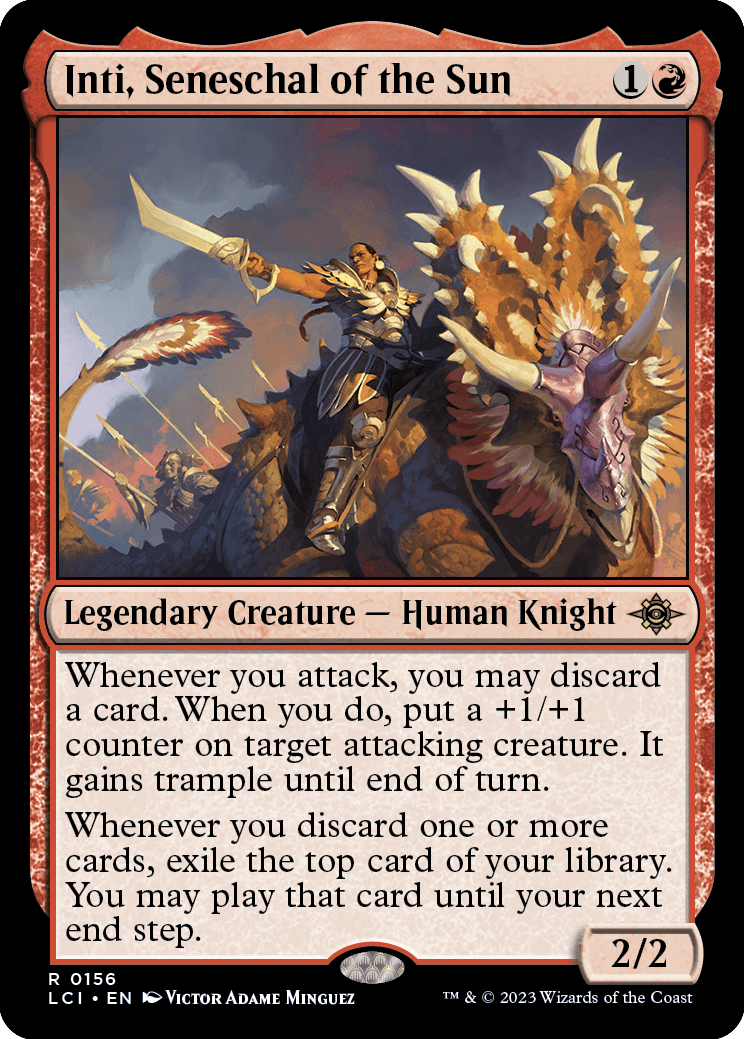
Priests and warriors still lead and protect the empire, but they are no longer occupations exclusively open to the nobility. Owing to the vacuum left by the casualties the invasion claimed, these professions have been democratized, the doors of their academies and temples thrown open to the peasants and laypersons who defended them. Old corps of aristocratic priests and praetorian knights remain, but the ranks of these professions are now dominated by Imperial subjects without noble blood.
The invigorating effect of this inclusion has revitalized the empire. Layperson priests trek across the empire, spreading the Threefold Sun's grace, power, and acumen in vulgar Atzocan. Communities outside the four city-states have made permanent the logistics routes of the invasion, building out new infrastructure with Imperial support. Agricultural and labor collectives strike out into Ixalan, working to clean the plane of Phyrexian remains and inert oil, laboring to reestablish and repopulate towns and villages destroyed in the invasion as well as rehabilitate the ancient jungles, fields, lakes, and rivers that, too, suffered in the invasion. The Imperial army, long a staid body managed by calcified noble commanders, is now led by a canny, brave, and consummate officer corps, the majority of whom were once ignoble soldiers, battlefield promoted during the invasion.
The faith of the Sun Empire teaches its people that they are the first of all peoples, created by the Threefold Sun itself to rule any land touched by its light. Thus, they view the entire continent of Ixalan as their birthright; in this post-Phyrexian era, the leading voices of the Sun Empire are assured that it is finally time for an Imperial dawn to break out over the whole of the plane. This triumphant moment will come only through the collective labor of the people, guided by the wisdom of the Imperial stewards, and culminate in the ascension of their child emperor. Theirs is a throne that will saddle the world, but it must first be built in the cities and fields of their empire, brick by brick, grain by grain.
The City-States: Pachatupa, the Imperial Capital
To the people of the Sun Empire, Pachatupa is the center of civilization, where all roads lead—despite its faded glory after the invasion. Pachatupa is no longer the Imperial capital of the Sun Empire, though it is still immensely important as it is the most populous and developed city-state of the empire.
Standing at the point where the coastal plains rise into the high mountains, Pachatupa was the seat of the Imperial dynasty following the empire's abandonment of Orazca centuries prior to the present day. The city surrounds and builds to Tocatli, once the Imperial citadel complex where the emperor and their closest dynastic relatives resided. Pachatupa's terraced farms, titanic stone buildings, sprawling irrigation systems, and sturdy walls were testament to the engineering skill of the Sun Empire. During the invasion, these monuments to Imperial might became a desperate redoubt: swollen with refugees from across the empire, Pachatupa's clean, exclusive avenues became blood-and-oil-slick battlegrounds, where peasant levies fought shoulder to shoulder with the emperor's own guards against the Phyrexian horde. Their efforts, bolstered by the mighty siegeworks of the city, Pachatupa—and by extent, the Sun Empire—survived the invasion.
The emperor's citadel, Tocatli, is a glorious, fortified palace at the heart of Pachatupa. The palace encompasses many noble mansions, belonging to the various dynastic relations and their offshoot houses. Tocatli's spacious grounds also include three mighty temples, each devoted to one of the Threefold Sun's three aspects: Kinjalli, Tilonalli, and Ixalli. This grand complex was exclusive only to the highest classes of Imperial nobility and citizenry prior to the invasion, a metropolis atop Pachatupa from which the common folk were excluded. However, during the invasion, Tocatli was the center of the Imperial war effort, its exclusive plazas and manors opened to the common people of the Sun Empire through necessity. Those people have not forgotten the wealth that had so long been locked behind Tocatli's high walls: now, this once exclusive palatial complex is open—with some restrictions—to the people, a symbol of the new emperor's love for his subjects, enforced by the will of an emboldened people who the emperor's stewards wisely seek to placate.
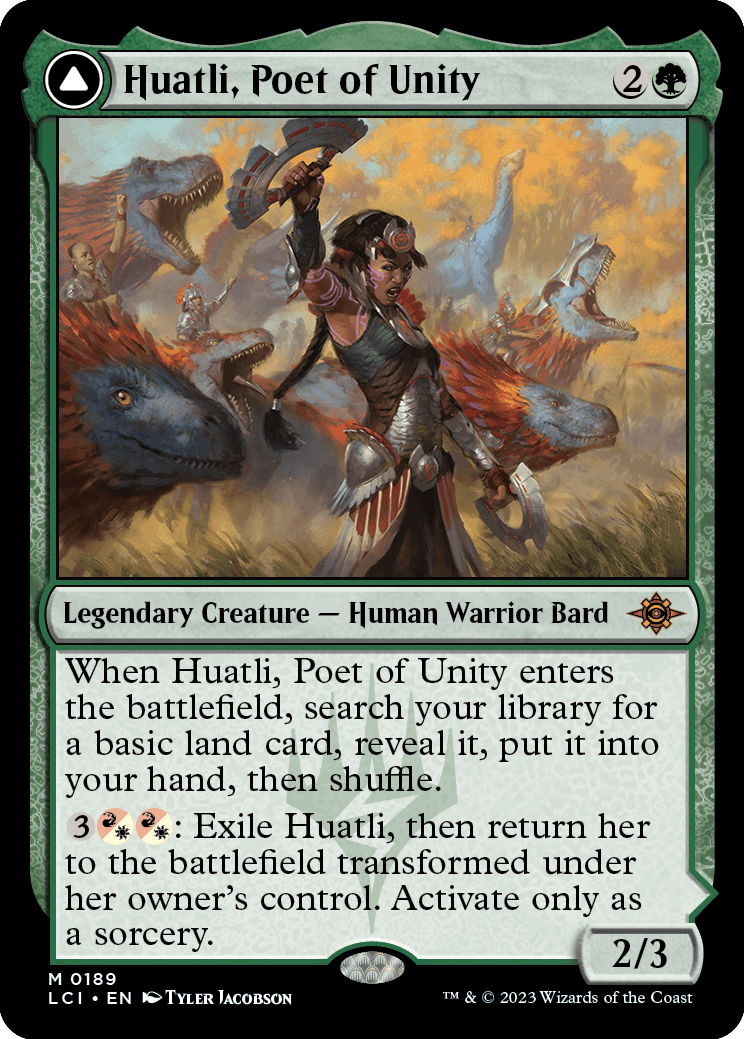
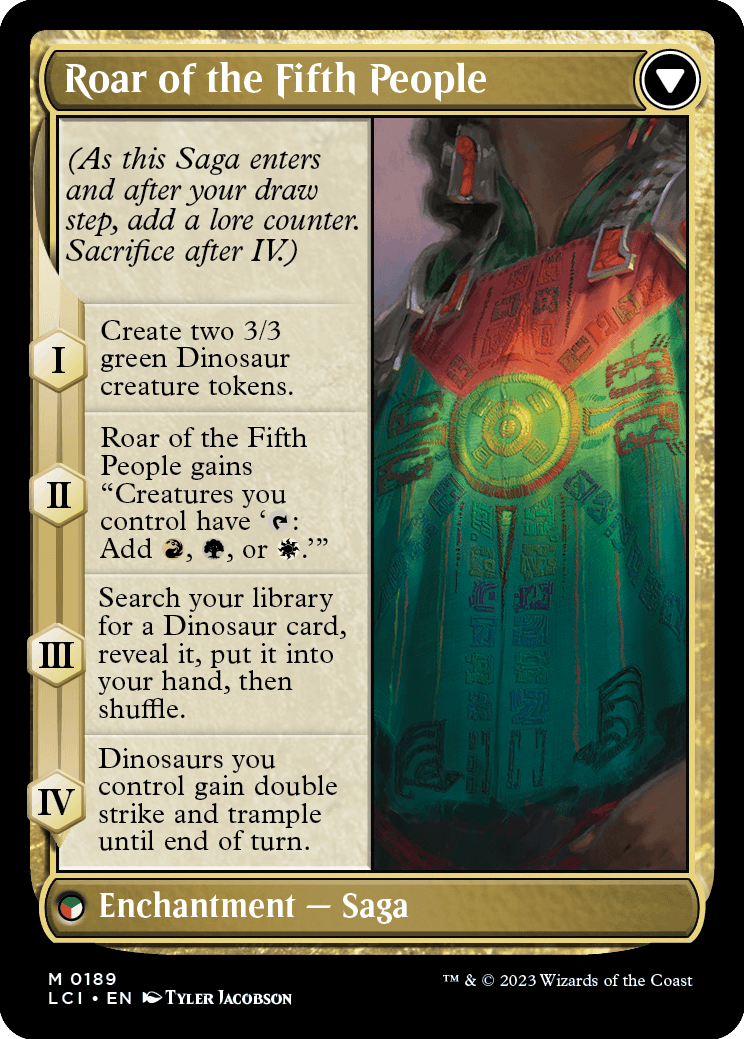
Pachatupa after the invasion is more egalitarian than it was prior to the war, but its luster has diminished. In its heyday, the Imperial capital was the singular axis of the empire, where all noble families kept some property—politics demanded proximity to the emperor—and where the lion's share of tribute, taxes, and harvests flowed. Immediately after the invasion, Pachatupa was the primary target of reconstruction, but despite the massive cleanup and rebuilding effort, the old capital has lost much of its draw. The emperor has moved his throne to Orazca, the first capital of the Sun Empire now recaptured, and therefore taken the locus of political power with him. Pachatupa's mighty walls and dense streets are haunted with the traumas of the invasion and the terrible siege the city and her people weathered.
While in Tocatli today, one could still imagine an Ixalan untouched. Outside the citadel complex, the present day is unavoidable. Gone is the noble grandeur of Imperial tribute and Imperial favor: in its place is a newly enfranchised ignoble population who, while remaining subjects of a distant emperor, now see themselves as the owners, defenders, and heirs to Pachatupa. In the past, all roads of the Sun Empire led to Pachatupa: now, the people of the ex-capital can look to each corner of the compass to see all roads leading out. Out from the old seat of Imperial power into a world whose future has been rewritten by the common hand of peasants, merchants, artisans, and laborers who defended their city and their empire from a fearsome foe. The darkest night has been faced. Pachatupa did not break; the dawn that comes will be one that shines on the people as well.
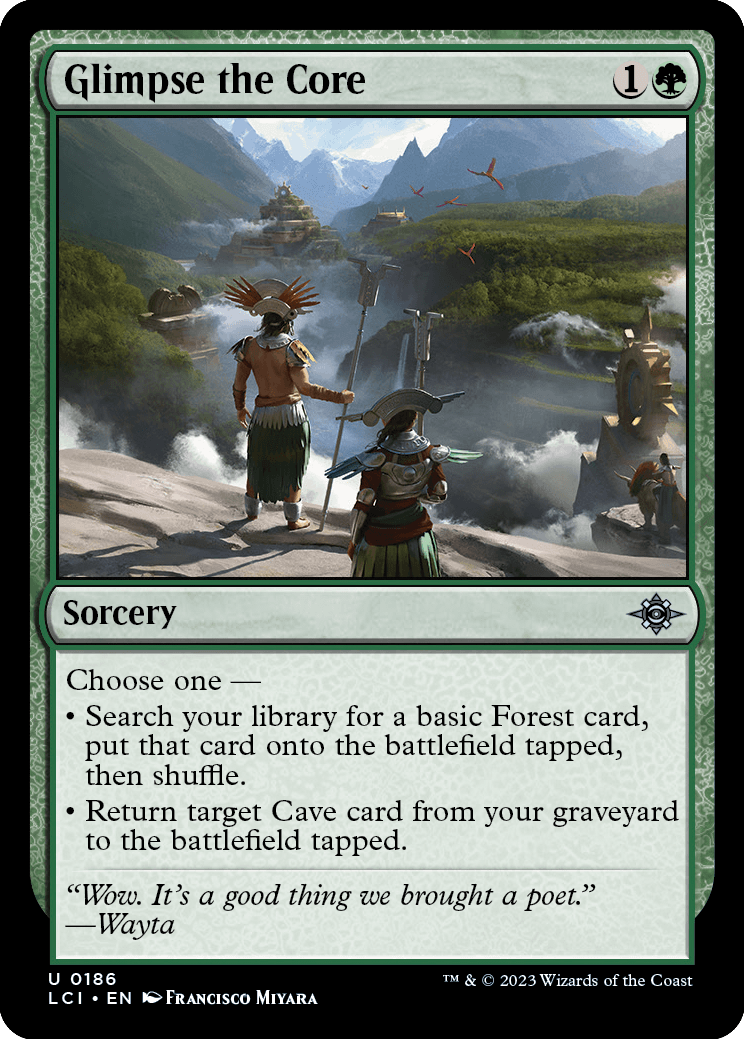
The City-States: Atzocan, the Invasion Plain
Atzocan lies on a low coastal plain, where broad fields and lush forests once attested to the fertility of the land. In its heyday, Atzocan was a mirror to Pachatupa. It was a stern, disciplined, and determined city, the breadbasket and fishing-net of the empire. Nevertheless, it was not as gray and miserable as Imperials in the interior often painted it. Owing to its coastal location, Atzocan was strikingly cosmopolitan, entertaining merchants, traders, explorers, and all manner of persons from Torrezon, the Brazen Coalition, and lands beyond.
The city's position nearest the sea of the three great cities of the Sun Empire meant that it weathered the brunt of the attacks from Brazen Coalition raiders and the Legion of Dusk prior to the Phyrexian invasion. Atzocan continued this unlucky streak through the Phyrexian invasion, as the landing point for Ixalan's first Realmbreaker spur. Much of the city was destroyed by the initial impact and seedpod barrage, an event of such terrible magnitude that tremors could be felt as far away as Pachatupa. There were few survivors from Atzocan: most of its population was captured or killed and converted by the invading Phyrexians before the city-state's military or the empire could mount an effective defense.
In the wake of the invasion, little of the cosmopolitan city remains intact. Atzocan lies largely empty behind crumbled walls, its once sprawling markets, breezy manors, and dense seaside districts abandoned, left to rot and decay until the empire can make its return. Atzocan's survivors, a mix of noble families who were in Pachatupa when the invasion began, merchants and farmers who were away on business, and soldiers on patrol outside of the city, have been agitating for the empire to make a serious effort to retake the city. Already they have mounted a number of privately funded missions, working to clear out Atzocan's polluted fields and smaller, outlying communes and granaries. This work is slow and grim but ongoing: it will take years before Atzocan is once more able to feed the empire. However, early efforts to clear and clean fields have proven successful: grain trickles in to Pachatupa from Atzocan, a promising sign not only for to coastal city's refugees but for the empire's logisticians and military planners: if the Sun Empire is to mount a military response to Torrezon's incursions, they will need Atzocan to become a breadbasket once more.
In addition to its former status as the empire's granary, Atzocan was also the heart of the Sun Empire's dinosaur husbandry. The plains surrounding Atzocan were the native habitat of several varieties of large, powerful dinosaurs. Huge thunderherders roamed the outermost plains, while armored frillhorns, hammertails, platebacks, and spinetails wandered freely through the communes, villages, and fields that surrounded the city. The priests of Atzocan used their magic to call and control these dinosaurs, putting them to work in and around the city. Thus, the design of Atzocan, more than the other cities of the empire, was designed to accommodate large dinosaurs moving through the streets; these same streets became host to horrifying Phyrexian beasts and warhosts. Now they are choked with the remains of the invaders: grim monumental boulevards that, through sheer mass alone, have rebuffed attempts to retake the city.
Atzocan's governor-in-exile is Atlacan Huicintli, the clever, legitimized paper son of the late emperor and favored advisor to the current Emperor Intli IV. Atlacan was Intli III's favorite brother, but an illegitimate one. As part of Intli III's will, the emperor named Atlacan a "paper son" by fiat, officially recognizing him as part of the Imperial dynasty. Atlacan has used his experience in the clandestine management of the three major families of Atzocan—the Cabrana, Palani, and Cuitzan houses—to ensure his power in the new Imperial court. As the closest person to a friend the new emperor has, Atlacan Huicintli is a powerful broker, one who—in whispers—is said to be the true brilliance behind the throne. His care for Atzocan is twofold: one, as its reclamation is, truly, a symbol of the empire's ascendancy, and two, as much of its land no longer has owners, Huicintli stands to gain command over the vast majority of Atzocan's wealth via stewardship once the city and territory is reclaimed and cleaned.
The City-States: Otepec, the Sentinel Temples
Known for its elaborate stone temples, the city of Otepec is located in a high alpine forest at the western edge of the Sun Empire's lands. An ancient city and the least populated of the empire's city-states, it was well removed from the early days of the fighting.
The invasion reached Otepec through merfolk and human refugees, who came seeking refuge in the high city's stark, alpine environs. These numbers, growing as the invasion dragged on, hid sleeper agents, who activated once they were inside the city, sowing chaos and ending that tenuous normalcy. The battles for Otepec's temples were swift, the least costly of the invasion owing to smaller numbers of Phyrexian combatants. Though sleeper agents were quite terrifying, Otepec's defenders were the least impacted by the ravages of the early invasion and among the most prepared: They, unlike the first waves of defenders, knew to guard themselves against the oil. Though the city around them burned to cinders, the temples—and the people taking refuge within them—survived.
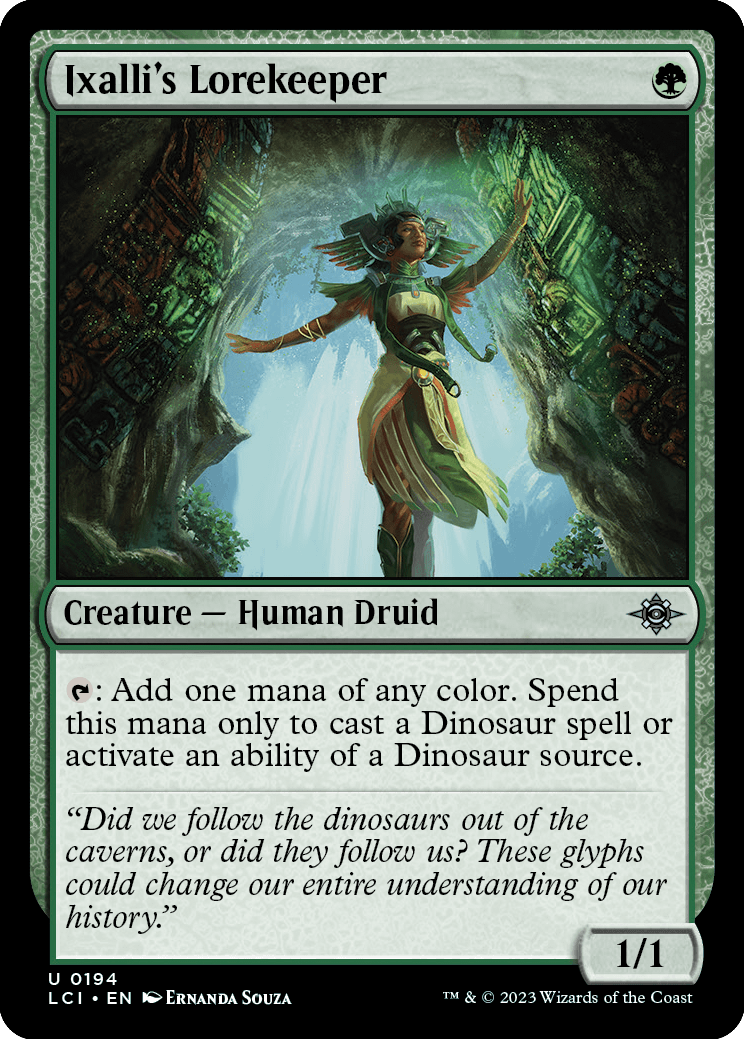
Otepec is a city of ritual that, despite being subject to Imperial mandate, finds its power concentrated in the priesthood that rules the city. Three huge temples, each encompassing several monumental structures, dominate a large plateau on the northern side of the city: the Temple of the Wellspring, venerating the sun in its creative aspect; the Temple of the Still Lake, venerating the sun in its sustaining, nurturing aspect; and the Temple of the Cascade, venerating the destructive aspect of the sun. Otepec's priesthood maintain these hallowed grounds for members of their order; as well, they believe that political power belongs in the hands of the devout and that the empire should become a sort of theocracy governed by the priests. Since they are themselves members of the Imperial family via distant, though legitimate, dynastic lineages, they have always presented a latent threat to the current ruling family.
Orazca, the Golden Redoubt
Orazca, the golden city, the object of many nations' Imperial, spiritual, economic, and cultural desires, is once more a city under the command of the Sun Empire. Though the road to this control has been turbulent and costly, command over the city has nevertheless been the primary goal of the empire's most recent series of leaders. Claimed in the boom years before the Phyrexian invasion, Orazca became a new and shining heart of the empire. Its population exploded as migrants from across the empire streamed into the ancient metropolis, claiming homes, fields, shops, and temples as their own. Once more the city hummed with the sound of a living population, and it seemed—for a time—that the Sun Empire was at its zenith.
Orazca was able to prepare for the Phyrexians when news of the invasion reached the Core of the Sun Empire. Unlike Atzocan, Orazca had plenty of warning that a fearsome enemy had landed on Ixalan. Unlike Pachatupa, Orazca had time to organize its citizens and the ever-increasing flow of refugees and retreating soldiers into an effective fighting force. Imperial priests, working with River Herald shapers, were able to seal the city again, protecting it against attack with the very earth and stone of Ixalan itself. However, these defenses would prove insufficient. By sealing themselves in against exterior threats, the Sun Empire inadvertently trapped themselves in with an unknown, terrifying, internal threat: Phyrexian sleeper agents, seeded throughout the waves of soldiers and refugees that fled to the safety of Orazca.
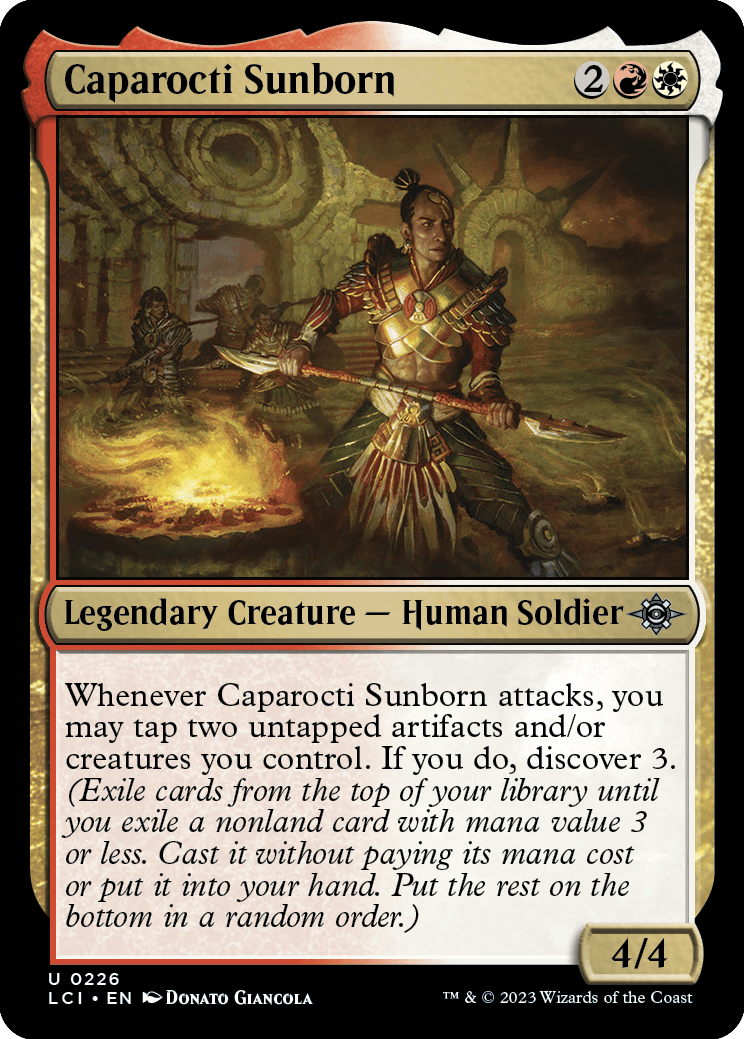
The battle of Orazca happened under the earth, inside of the sealed city, far from the warm sun of Ixalan. While the Sun Empire above ground coalesced around the emperor and the fight to hold the terraced city of Pachatupa against a seemingly endless horde of Phyrexians, the fight through the dark, fire-lit halls of Orazca was a grim, paranoid slaughter. Many tens of thousands of Imperial citizens and River Heralds died or were turned in the opening hours of the battle, and many thousands more were lost when the second wave of sleeper agents activated in the following days. The city was reopened by those trapped inside desperate to escape: a maneuver that, inadvertently, allowed Sun Empire forces under the command of Huatli to venture into the city and awaken the elder dinosaurs of Ixalan, a critical victory in the fight against the Phyrexians.
Orazca was the last city to declare itself free of the Phyrexians once the invasion concluded. Opened once more to Ixalan's sun, the golden city holds a new reputation among the people of the Sun Empire: that of a graveyard, a memorial that—as its defenders discovered in those dark days—hides deeper secrets yet. In Orazca, in the deep and forgotten layers far below the earth, a team of Sun Empire soldiers fighting to clear out a nest of Phyrexians discovered a grand, ancient door, sealed with great shards. This is the door to the underground, through which the world below the surface can be accessed.

The River Heralds
The River Heralds are merfolk—a unique species of amphibious humanoids at home throughout the oceans, rivers, lakes, and rainforests of Ixalan. They stand between seven and eight feet tall, with skin that ranges from deep burgundy, violet, and blue, to bright oranges and yellows. They are human-like in shape, with long fins that extend from their shoulders and forearms and long legs that allow them to swim or walk on land.
To outsiders, the River Heralds may appear to be a single, unified group. During the race to reach Orazca, the River Heralds presented a united front against the Sun Empire, Legion of Dusk, and Brazen Coalition; the defense of Orazca was an unprecedented moment of union for the River Heralds, one that was contentious and, ultimately, a failure. The myriad tribes of the River Heralds do share many cultural, spiritual, and practical affinities, but they are in fact not united—though after the horror of the invasion, this may change.
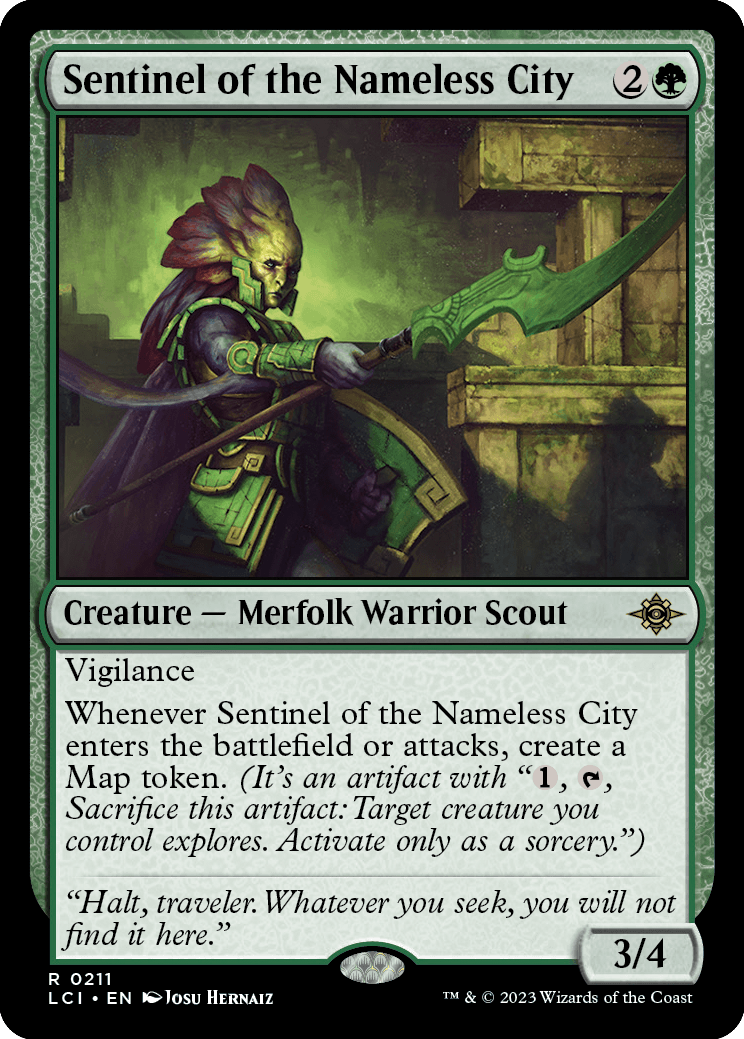
The Invasion and Death of the Deeproot Tree
The River Heralds are an ancient people with ancestral and magical ties to the continent of Ixalan. Once the proud stewards of Orazca and the nine tributaries of the Great River of Ixalan, merfolk have been reduced to a scant number of tribes and nomadic bands by the Sun Empire's conquest, internecine band warfare, illness, and—most recently—Phyrexian aggression.
The Phyrexian invasion hit the River Heralds hard, winnowing their already small numbers down. But for the few bands who were in Orazca during the sealing of the city or happened to be in the markets of Pachatupa when the emperor ordered the gates closed, the River Heralds fled to deep, hidden places on Ixalan known only to them. Some bands escaped underground into the dark caverns, but the majority of the River Heralds retreated to the holy lands around the Deeproot Tree, seeking shelter under the wide arms of their most sacred temple.
An ancient mangrove of enormous size, the Deeproot Tree towered nearly 400 feet above its smaller siblings in a sprawling mangrove swamp that generations of merfolk had cultivated into a titanic temple, coaxing branches and trees to grow around the Deeproot Tree as buildings would spread out around a central citadel. This was a key meeting site for all River Heralds, the closest thing they had to a capital city. At any given time, there would be hundreds of bands encamped at the tree, engaging in communal rituals and rites. Once a year, all bands who could make a pilgrimage to the Deeproot Tree did so.
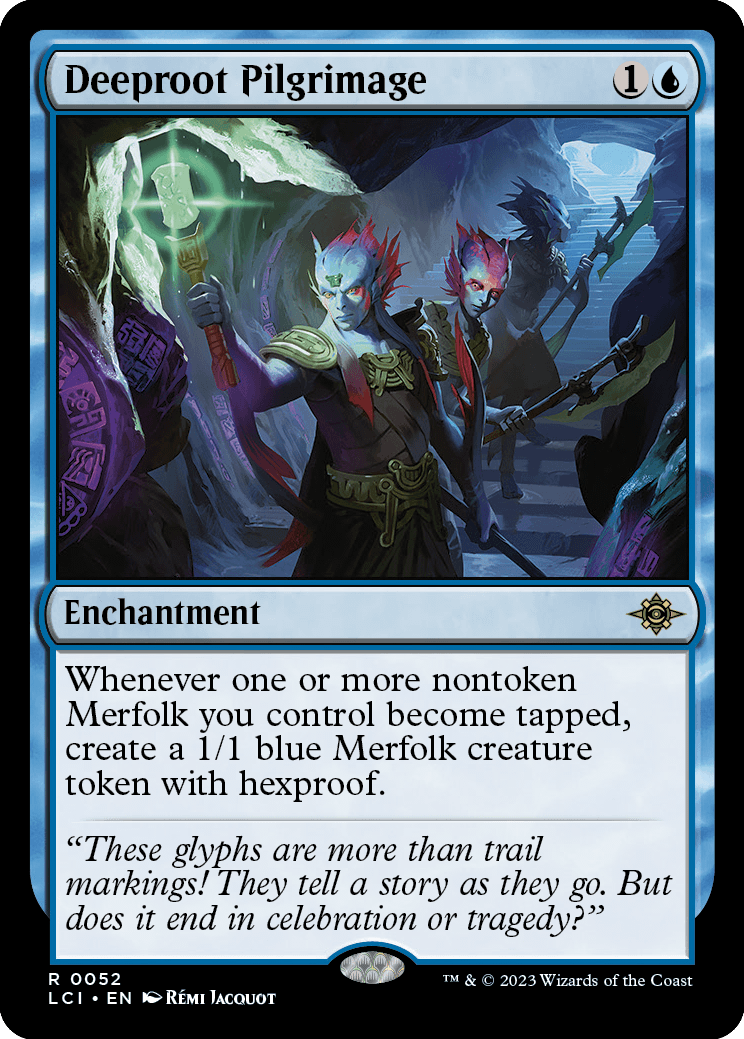
At the Deeproot Tree, the Heralds were protected by tremendous magics. There the many bands of the River Heralds committed to the defense of the tree and their fellows, withstanding a terrible siege that echoed the brutality of the siege of Pachatupa. The River Heralds were able to resist the Phyrexians for some time thanks to the combined strength of the Deeproot Tree's innate magic and the efforts of their shapers, warriors, and spellcasters, but the Phyrexians were tireless and patient, and the Heralds—though they mounted a heroic effort—were ultimately mortal.
The slaughter at the Deeproot Tree was felt across Ixalan by River Herald shapers and other spellcasters—even those merfolk without anything more than a latent connection to their tributaries and the subtle magics that suffuse Ixalan felt the trauma of the Deeproot Tree's death. The Phyrexians would eventually be driven from the sacred site by the people of Ixalan's Halo-strengthened counterattack, but the River Herald partisans and pilgrims that returned found only a grave, a polluted swamp of stumps and fallen trees trampled by armies, thick with the twisted, metal ruins of the dead invaders.
Without a unifying sacred site, the River Heralds' fragile unity shattered. Through the course of the year that followed the end of the invasion, many merfolk took to engaging in desperate raids on Sun Empire convoys, Brazen Coalition mining camps, and Queen's Bay Company operations to survive. Others have signed on with the coalition or joined with the Sun Empire to offer their services as guides, hunters, guards, dowsers, or—if nothing else—skilled laborers. The number of bands still operating on Ixalan's surface are few and shrinking: most by now have heeded the call to venture underground and join the congress.
Merfolk Bands
A merfolk band consists of about a dozen individuals led by a shaper. Shapers are respected merfolk elders and leaders, typically (though not always) magically attuned, who guide their bands (sometimes literally), adjudicate disputes, represent the band to other merfolk, and speak for the band when dealing with humans. Each shaper has a single apprentice at any given time. Upon the death of a shaper, natural or premature, the apprentice takes over leadership of the band. Should a band grow too large for its territory to support, the apprentice takes a portion of the band away to form a new, affiliated band in a new territory—though in this post-invasion era, this is rarely a problem.
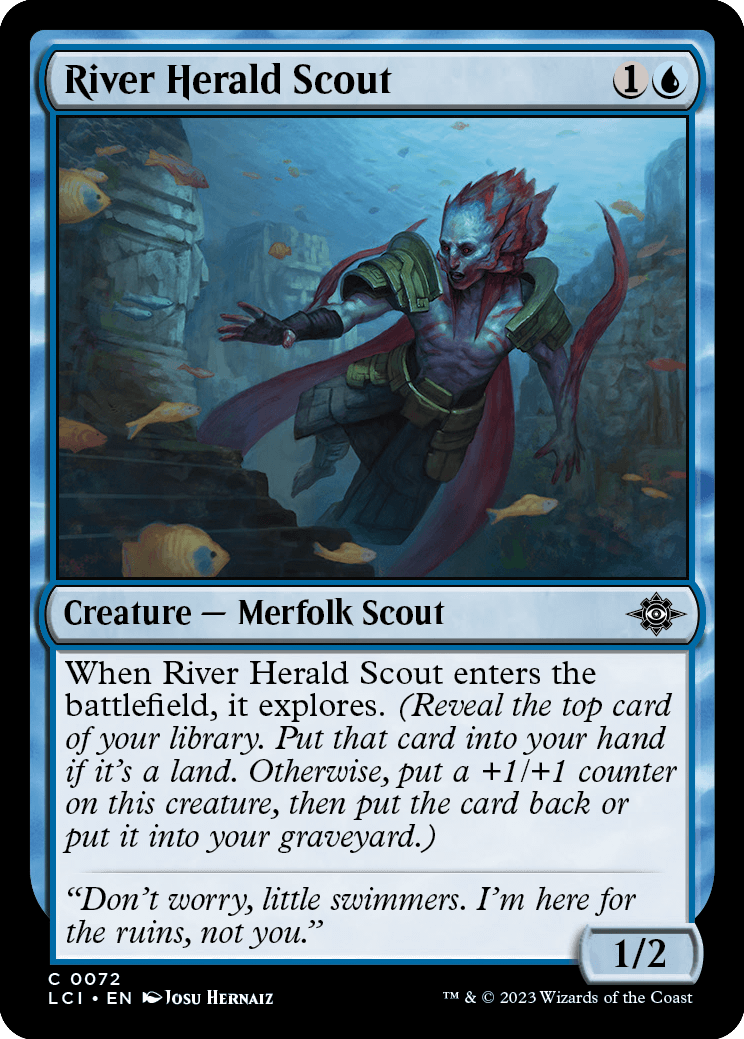
The Nine Tributaries and The Great Speakers
By merfolk reckoning, there are nine tributaries to the Great River that dominate the interior of Ixalan. The headwaters of these nine rivers are considered the prime territory, and the shamans whose bands control the sources are the most respected.
The nine tributaries are known by the names of the first nine shapers, whose names have since become honorific titles, given names that replace the birth names of their bearers. The holders of the name Tishana are regarded as great shapers. Tishana is also called the great source, an acknowledgement of the tributary Tishana being the primary branch of the Great River. Shaper Tishana can claim de jure leadership over every band, as the Great River claims primacy among the nine; the current Shaper Tishana has decided to act on this de jure ownership, summoning all merfolk Heralds who can hear her to the tribal congress so that they can decide together the fate of the plane.
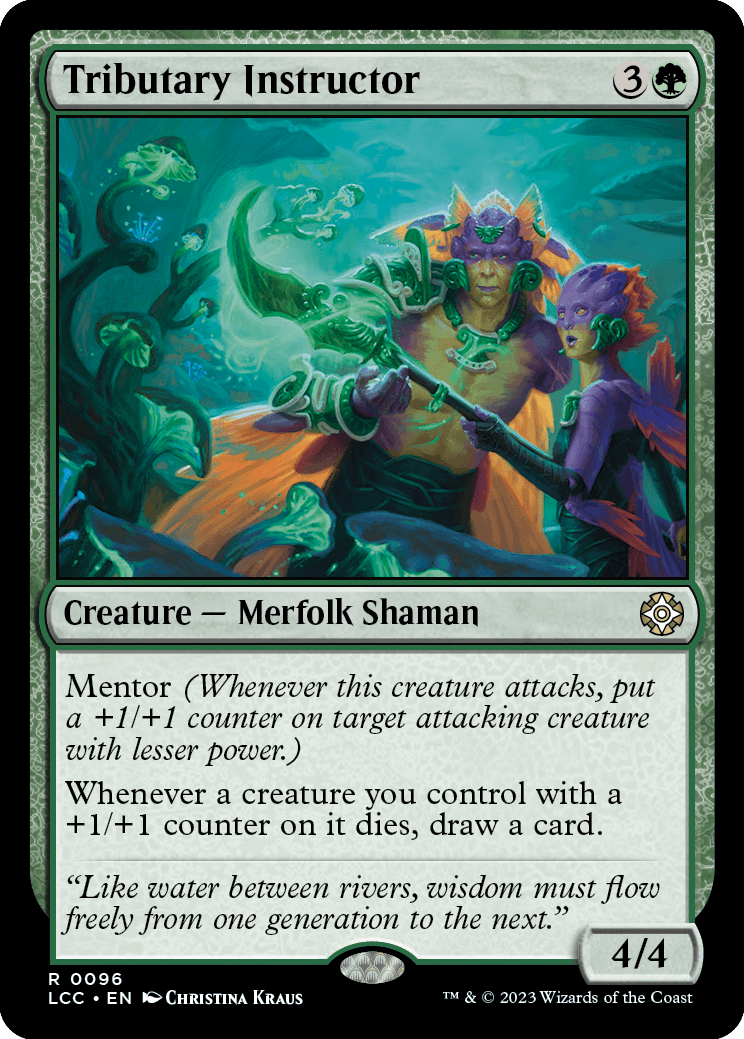
Only a handful of the current great shapers held one of the nine names prior to the invasion. Great Shapers Tishana, Kopala, Kumena, and Pashona survived the invasion and retained their names; the rest are new title holders.
- Tishana, the voice of thunder, the great source
- Kopala
- Pashona
- Vuhana
- Mitica
- Notana
- Falani
- Tuvasa
- Kumena
The Sea and Sky
The River Heralds view jungle and river as two equal parts of the same ecosystem—two halves of the plane. The river and the sea are the lower half; the jungle and the sky (with the rain, mist, and fog that are so characteristic of the rainforest) are the upper. Water flows freely between the two, binding them into a whole, and the merfolk are fundamentally creatures of the water.
Some merfolk are more at home in the upper world and some in the lower, but they are two halves of the same body. They recognize their differences, just as they recognize the difference between jungle and river, but they value those differences instead of fighting over them.
Shapers of Nature
The River Heralds have lived in peace and harmony with the natural world as long as they can remember. It is not that they lack the knowledge or skill to build cities and develop technology; rather, they have deliberately chosen to live as part of the natural world, largely in rejection of the Imperial path they watched the Sun Empire take long ago.
The magic of the River Heralds' spellcasters is focused around conjuring and commanding wind, water, and their jungle environment. They strive to maintain a peaceful coexistence with nature, not to conquer or defy it. Shapers are named for the way they alter nature around them—changing the currents of wind and water, calling up storms and floods, and bending branches and vines. As they move through the jungle, they adapt it to fit their needs—and then return it to the way it was, leaving no trace of their passing, just as a pebble dropped in water leaves the surface unchanged once the ripples have passed.
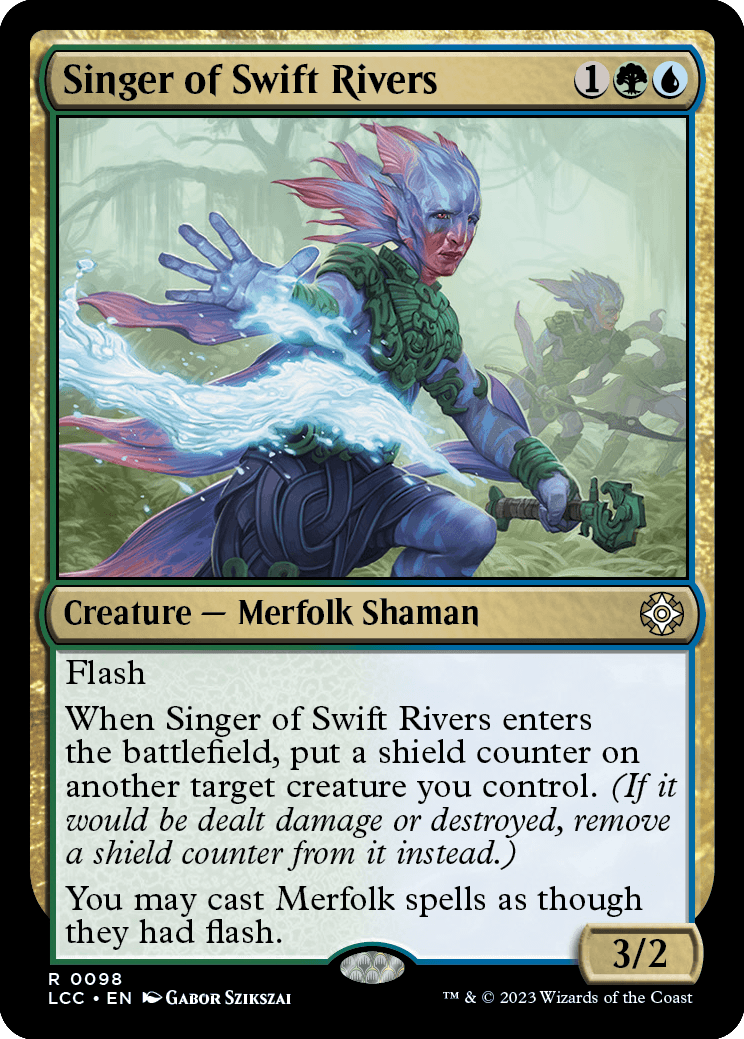
The power of the shapers is so great that even a small band of River Heralds can stand against a much larger force of Sun Empire, Brazen Coalition, or Legion of Dusk soldiers. They redirect rivers to thwart intruders, call up banks of fog, summon enormous waves to wash away their foes, create huge vines to destroy ships and fortresses, direct the winds to lift them into the air or send flying opponents crashing down, and so on. They also summon elementals—living creatures formed from water or tangles of jungle growth.
The wisdom of the elders, passed down orally from shaman to shaman, is central to the River Heralds' society: Though bands may be separated by territory, storytellers and singers that travel between them create a shared culture. They pass on the records of Orazca, the Immortal Sun, instructive stories about life in the jungle, the names of the nature spirits they conjure and command, what foods are safe to eat, the cruel histories of the Sun Empire, news of the plane, and—most importantly to the remaining Heralds—a call for all merfolk to descend into the world underground and attend the tribal congress.
The Brazen Coalition
No rules, no constraints, endless possibilities, and the chance to prove your worth on your own terms—this was the promise of the Brazen Coalition before the Phyrexian invasion. With no more than a handful of small archipelagos under their control, the coalition proudly marked the ocean as their domain. Across deep blue waters, shallow coastal stretches, and the deep river mouths that spill into the sea, members of the coalition are masters of the waves.
The Brazen Coalition was initially composed of refugees who fled from Torrezon during the Legion of Dusk's campaign of conquest a century prior to the present. However, they found no respite on Ixalan, as the Sun Empire turned them away. Spurned by the Sun Empire and unable to return home, the refugee flotilla scattered across the Stormwreck Sea, some disappearing over the horizon and others working to establish their home on the water, a floating city called High and Dry.
Desperate, with no land to call home and—consequently—no way to peacefully exist on the ocean, this refugee flotilla turned to piracy. They began raiding Ixalan's coast, preferring to face down other humans rather than the vampires that garrisoned their once free cities on Torrezon's western coast. In time, though, as they developed homegrown industries that allowed them to train, outfit, and manage more fearsome vessels and crews, they began to aim their raids at Torrezon as well. Over the course of the last few decades, these refugee pirates established a more permanent organization, a coalition that could provide for their common good while allowing crews and vessels the freedom to which they had grown accustomed. This was the beginning of the Brazen Coalition: a confederacy of ships, each captain a sovereign of the state contained within their vessel's decks, with the floating city of High and Dry as a neutral (though in reality, always contested) ground.
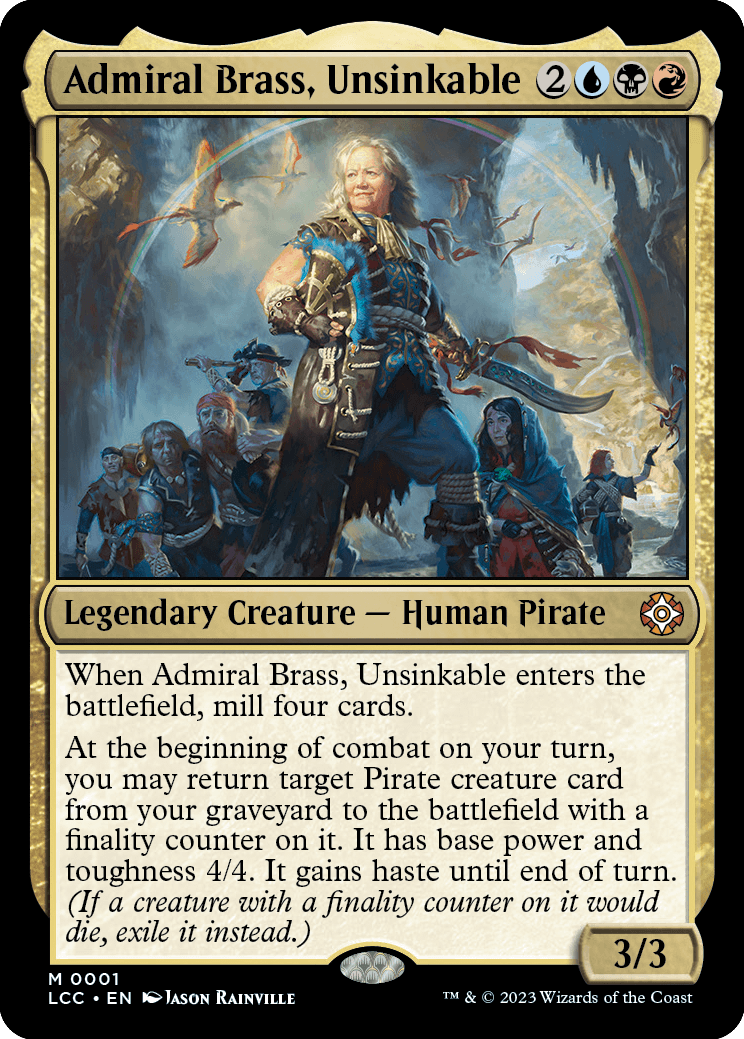
Over the course of the coalition's first century—the decades before its foundation and the decades after the creation of High and Dry—great legends cobbled together collections of ships and planted their flags on the few islands that dot the Stormwreck Sea. These captains styled their ranks in many ways but in effect were the same as kings—they ruled over fiefdoms they called fleets, struggling against and with each other for de facto rule over the coalition. Some were plain in their desire to be sovereign above all others, though most rejected the old words of law that lorded over them and their ancestors on the land.
The age of piracy lit the Stormwreck Sea with cannon fire and adventure, but cutthroat, winner-takes-all freedom was never going to be a sustainable way to organize a functioning society. Though the people of the Brazen Coalition prized freedom, they, too, built kingdoms and empires—not of land, but of ships, and always in flux as personal grudges, quests for power, and dreams of glory motivated the machinations of captains and mutinous crews. Law—as much as it existed in the coalition—was written by the last captain standing and enforced first with the edge of a cutlass.
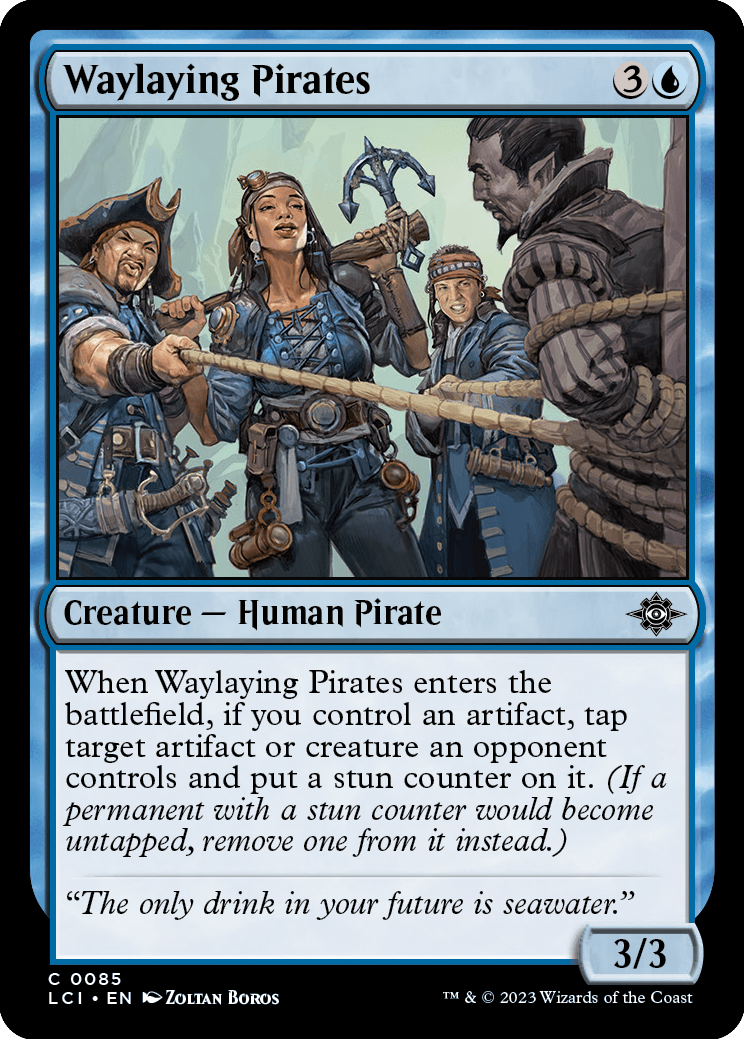
The Brazen Coalition was, for most of its existence, defined by those outside of it. To the Sun Empire, they were uncivilized pirates, the refuse of Ixalan's mighty empire and barbarians from Torrezon's west joined together in a mission of chaos. To the crown and church of Torrezon, they were heretics who worshipped gold and the deep, an enemy of progress and salvation both. After surviving the Phyrexian invasion, though, the people of the Brazen Coalition demand more from the captains who style themselves as sovereigns; the first age of piracy might have ended, but the era to come does not promise any more peace. As the coalition heads into its new century, it faces an essential question: what the limits of freedom are, and how should this coalition—if it indeed desires to remain united—organize itself to ensure all under its banner may enjoy the freedom they declare themselves to have.
A Nation from Nothing
High and Dry, long a neutral territory, has decided in the wake of the Phyrexian invasion to assert its power as the heart of the Brazen Coalition. Formed by the intractable collision of two ships, the Scourge and the Dead Eyes, and then built upon for a century, High and Dry is a sprawling, floating, many-leveled city. On the horizon, High and Dry is a fever dream—a city and a fleet lashed, hammered, fused, and cobbled together, crowded with fleets of docked ships taking on water and offloading trade goods and supplies. Up close, High and Dry is a titanic, impressive construction that, over the course of a century, has grown under the stewardship of many different mayors and many different theories of organization. Throughout its history, High and Dry has remained a constant in the Brazen Coalition: always the major port of call, the city has survived would-be tyrants, illness, famines, and assault by creatures from the deep. In the post-invasion era, High and Dry faces unprecedented threats from within and without, as well as unprecedented opportunity: once run off of favors, promises, debts, and stolen coin, High and Dry now thrives off of a proper maritime economy, debt, and cosmium trade.
High and Dry was never meant to be a city, though it grew into one; likewise, the Brazen Coalition was never meant to be a state or kingdom, but the leadership of High and Dry and a handful of key allied fleets are working to make it so. Admiral Beckett Brass, once the leader of the Fathom Fleet, now sits at the navigator's desk in High and Dry's captain's quarters, charting the Brazen Coalition's path from borderless association to nation-state.
The Invasion
During the Phyrexian invasion, High and Dry swelled with refugees from both Ixalan and Torrezon. The coalition's dream of boundless freedom vanished. Refugees by the thousands staggered out of ragged ships onto High and Dry's docks sick, scared, and hungry. They begged for protection from the Phyrexian invaders. The myriad fleets of the coalition first responded to this discontent by leaving High and Dry—they were free to do so, after all. But they discovered this to be a poor choice: Without High and Dry's vast supply stores, a total collapse of oceangoing trade, and with Phyrexians raging across both Ixalan and Torrezon, a free ship could only be free on the high seas for so long. Hungry and low on supplies, the fleets returned to High and Dry to find it besieged, locked in a struggle between coalition defenders and the turned.
Brass, the founder of the Brazen Coalition, survived the Phyrexian invasion. Her fleet, however, and her original idealistic dream of the Brazen Coalition did not. At the invasion's outset, Admiral Brass and the main element of her fleet were sailing in a grand expedition bound for the rumored southern continents; she turned back when she saw Realmbreaker's branches arcing over the ocean sky. This journey would result in a long, island-hopping campaign of brutal jungle combat and fearsome, Phyrexianized sea monsters. Brass and her ships returned to High and Dry and retook the city, liberating its population and driving out the Phyrexian invaders there. Her reinforcement of the city's defenders was lauded as a heroic feat, and she took command of High and Dry as the city's sole leader.
Brass's honeymoon period lasted through the end of the invasion, but as with Torrezon and the Sun Empire, the demand for change grew overwhelming. Thankfully for the people of High and Dry, Brass's own concept of freedom had evolved as well. Freedom, the great admiral realized, was only guaranteed so long as your ship could keep sailing. To keep sea-worthy, a vessel needed all hands to pitch in: a sailing ship began as a forest, and those who built ships rarely sailed them. Reaving and pillaging made one a parasite, Brass declared, no better than the Phyrexians that corrupted and turned so many once free people of the Brazen Coalition. When the angry crowds gathered outside of her flagship at the docks of High and Dry, she did not sail away. Instead, she walked out atop the main deck, threw her arms wide, and declared the age of piracy to be over. The Brazen Coalition would become a nation whose chief purpose was to ensure what Brass saw as true freedom: the freedom from fear.
The Brazen Coalition on Ixalan, Post-Invasion
The discovery of cosmium on Ixalan has kicked off a rush to extract the mineral, prompting an industrial and trade boom as well as a new age of high-seas piracy. The Brazen Coalition attempts to straddle both sides of this new era via its cosmium mining operations on Ixalan, its push to be the sole guarantor and issuer of mining deeds, and by gaining recognition as a high-seas state by the Sun Empire and Torrezon.
The Sun Empire and the Brazen Coalition have always had a high-level adversarial relationship. From their initial contact a century prior, through the end of the first age of piracy and into the present-day cosmium rush, the Sun Empire's leadership has viewed the Brazen Coalition as unwelcome invaders. Under the reign of Emperor Apatzec Intli II, the pre-coalition population of refugees that fled Torrezon found no welcome in the Sun Empire. They were driven from their settlements by Imperial soldiers and warned to never again attempt to settle Ixalan's coast.
Pachatupa's policy was always to turn away Brazen Coalition ships, but often in practice the merchants of Atzocan ignored this embargo. Prior to the Phyrexian invasion, it was not uncommon to find coalition ships docked up and down the coast, anchored while their crews partook in pleasures, trade, and adventure ashore. Gray and black markets across Atzocan state funneled exotic goods into the heart of the empire, traded for gold and Imperial artifacts sold by unscrupulous Imperial dealers. Business—trade, piracy, and small merchant trade—benefitted everyone, especially those at the top of the empire if they turned a blind enough eye.
The invasion upended this old order, devastating Atzocan and depopulating much of the coast. In the year since its conclusion, Imperials scouting their old territory have discovered that the Brazen Coalition has moved in en masse, settling many frontier towns, establishing trade ports, and opening large cosmium mining operations. This land-based growth is the basis for much of newly appointed governor Brass's effort to legitimize the coalition as a state: by issuing cosmium prospecting deeds and parceling out land along Ixalan's coast. Enforcing these deeds are the Bluecoats, once called the Deadeye Fleet—themselves the descendants of military crews fleeing Torrezon—returned to their old status as a national navy by Governor Brass. Skeptical at first, independent cosmium prospectors soon realized the value of holding a deed guaranteed by the Brazen Coalition: an official contract signed and stamped by the offices on High and Dry meant the Bluecoats wouldn't come and break tools, destroy camps, and confiscate hauls if they caught others mining. Instead, they would protect claims against those who held none with the coalition.
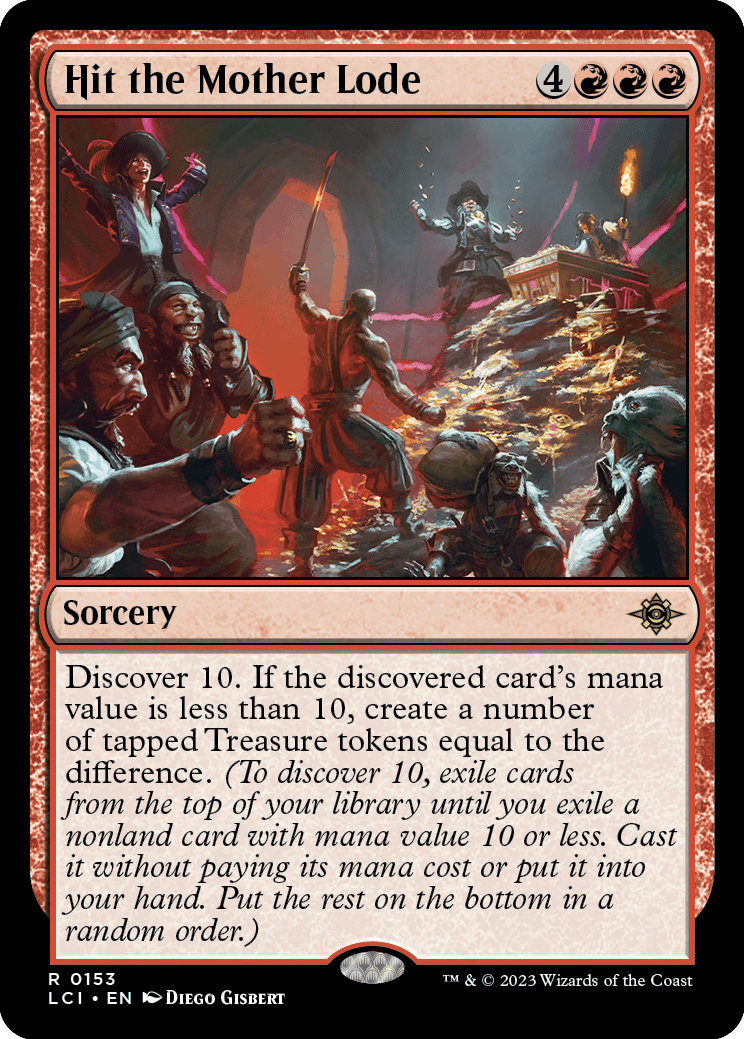
Sunray Bay is the Brazen Coalition's primary port on Ixalan and the largest land-based population center. Controlled by the exacting captain Ripley Vance, Sunray Bay is never dull and always dangerous, overflowing with gold, cosmium, and all manner of trade goods—illicit and otherwise. Owing to its wild wealth, Sunray Bay is heavily patrolled by Bluecoats, garrisoned by coalition fighters, and its bay waters protected by both Vance's private ships and the coalition's nascent navy. Nevertheless, Sunray Bay is a rough-and-tumble frontier town, a place where all manner of folk first arrive on Ixalan to chase their fortunes—or make their own off of those who are gullible enough to let them.
Downtown is the Brazen Coalition's greatest project on Ixalan, a permanent mining operation located hundreds of meters underground, perched around the lip of an ancient, dry cenote that plunges miles deeper into Ixalan's underground. Downtown is composed of large silos, refining plants, processing areas, and is crisscrossed with minecart tracks ferrying mined minerals and miners on their business across Downtown, as well as to and from their work sites.
Downtown is lit by massive daylight lamps and connected to the surface via large hydraulic elevators, switchback stairs, and complex aqueducts. The population of Downtown typically wear helmets and sturdy clothing suitable for a life lived among the rock, and most carry satchels or wear belt pouches with tools of their trades—picks, hammers, loupes, extra wicks for their lights, brushes, chisels, and so on. Illumination is life in Downtown, and no one travels without a source of light, fuel, and plenty of backups—typically a helmet- or shoulder-mounted light to keep their hands free for work. Downtown is the launch point for many deep-delving expeditions.
Alta Torrezon, the Legion of Dusk, and the Queen's Bay Company
The Legion of Dusk is the storied military arm of Alta Torrezon, an ecclesiastic vampire monarchy on the continent of Torrezon. Eight hundred years old, the Legion persists as a storied praetorian organization of professional conquistadores: explorers, navigators, stewards, logisticians, and administrators of Alta Torrezon's Imperial project. Buoyed by a massive host of human aspirants, the modern Legion of Dusk is the premier expeditionary force of Alta Torrezon, capable of managing massive operations across oceans and directing its profit back to its coffers on Torrezon.
Though the Legion's first expedition to Ixalan was rebuffed through a combination of indigenous resistance and vain infighting, the Legion itself persisted. Undaunted by this stinging failure and in the wake of successfully defending Alta Torrezon from the Phyrexian invasion, the Legion petitioned the crown for a charter to return to Ixalan. Alta Torrezon must rebuild, and those blessed by Aclazotz must feed: on Ixalan, the Legion argues, they can claim the vast material and sanguine riches of that continent for Alta Torrezon. As well, many of the most faithful legionnaires feel a pull to Ixalan, a deep tugging in the ghost of their soul that reminds them that Aclazotz, their progenitor god, is there, below the earth of Ixalan, waiting for his children to come and find him.
The Twilight of Torrezon
Ancient texts chart Alta Torrezon's history back at least a thousand years, though histories relevant to the Legion of Dusk begin eight centuries distant from the present day. In that age, the continent of Torrezon was populated with a diverse assembly of kingdoms and independent city-states enjoying a renaissance of scientific progress, artistic flourishing, and vibrant trade: Alta Torrezon at this time was a small, prosperous city-state tucked into the mountains in the far northeast of the continent. Occupied at times with mercenary-led wars, these myriad polities nevertheless largely existed in a state of peace. Contemporary texts speak of this era as a golden age for the continent; from the glittering Free Coast in the west to the wide banks of the Deoro river in the east—a mighty river that bisects the continent—Torrezon was prosperous and her people happy. This age ended in apocalyptic bloodshed and war.
A little over four centuries from the present day, a vast, undead army marched out from Alta Torrezon, crossing the wide Deoro river under a pale banner. This army was a fearsome assembly of legions and mercenary companies, once divided among three warring siblings, now united under a single rule: the order of Saint Elenda, the rose of Torrezon. They called themselves the Legion of Dusk. No strangers to war, these fearsome knights rode out on a swift campaign of conquest, razing much of the eastern marches of Torrezon before the western states managed to snarl the Legion's advance. Though the west held for a century after this first assault, the Legion was inexorable, having been honed in their own civil war and blessed with the undying gift of vampirism. The continent eventually fell. Those who could not flee across the ocean were either slaughtered in their keeps or bent the knee and pledged themselves to the new crown in Alta Torrezon.
The Apostasine Wars and Alta Torrezon, 803 BD
Before the united Legion of Dusk crossed the Deoro and began its conquest of the continent, Alta Torrezon underwent centuries of dramatic upheaval, civil war, and searing religious struggle.
In 803 Before Dawn (BD), Alta Torrezon was a solitary, deeply religious city-state in the mountainous east of the continent of Torrezon, not yet the realm of vampires. For centuries, Alta Torrezon had served as the divine heart of the continent, dispatching missions across the continent and to lands even farther beyond. At some point in ancient history, faith and territorial interests severed that religious capital from the rest of the continent. Alta Torrezon and its people were content to concern themselves only with the affairs of the realm east of the Deoro; the church in Alta Torrezon sent out ministers and missionaries, but by contemporary accounts, the monarchy of Alta Torrezon faded into self-imposed isolation, leaving the rest of the continent to their golden age.
However, being content to concern themselves with the affairs of their own state did not mean that the people of Alta Torrezon were at peace. In contrast to the rest of the continent's peaceful golden age, by eight hundred years ago Alta Torrezon was a nation in crisis: its venerable monarch had just died without naming a clear successor and, per the crown's laws of succession, each of the monarch's three children inherited titles and lands, splitting the kingdom into three parts. The monarch's daughter, the eldest of the three children, inherited the capital territory of Alta Torrezon. Jealous of their sister's take, the monarch's middle and youngest children—two brothers who had themselves served on the monarch's council and inherited counties and duchies of their own—called their lords to war. Against the wishes of the church, these brothers demanded their sister divide her inheritance between the two of them—she refused, and Alta Torrezon exploded into civil war.

This war would not only tear the nation apart, but it would fracture the church as well. Content to stay out of the profane affairs of warring lords and nobles before the civil war, the church was the spiritual and economic reserve for Alta Torrezon. With the brothers' attempt to usurp their sister, however, the church was forced to act. Quickly, most of the church's leadership declared the brothers to be heretics, apostates who had turned from the divine plan to glorify themselves. The brothers, meanwhile, with backing from the lay preachers and more radical elements of the institutional church, declared their sister and the leaders of the faith to have turned from the missionary spirit of the faith. The church and the crown were sclerotic, calcified, corrupt institutions, the brothers said. It was their duty to tear down the cardinals and bishops, to melt down the queen's crown and the pontifex's golden miter and give them to the people. In triumph, they declared themselves to be the apostasine princes, and the civil war began.
The civil war raged on for two hundred and fifty years, with the children of all three rulers carrying on the conflict. The sheer brutality of the high war periods ruined the population of Alta Torrezon, spoiling the land as almost every inch of it was fought over. In quieter periods, the war was fought by small bands in low-grade, simmering conflict. The nobility was diminished, knights and small lords thinned, masses of peasants slaughtered in miserable battle, but neither side was willing to admit defeat; instead, a mutual cessation of hostilities was agreed upon. A tense peace reigned. This interregnum would last for fifty years before the war began anew.
The Battle of Alta Torrezon, Saint Elenda's Return, and the Gift, 495 BD
In 495 BD, the civil war picked up once more. On the offensive, the apostasine armies enjoyed a series of victories, and soon they came within sight of the spires of Alta Torrezon. The remnants of the combined forces of the monarch and the church formed up to meet the overwhelming invading army. Just as defeat seemed certain, a stranger emerged: wreathed in rippling black vapor, this rider charged into the honor guard of the apostasine princes, slaughtering all in her path. The enemy army broke ranks and retreated, routing before the singular attack. The combined forces of the crown and church rallied, finishing the apostasine princes' forces and settling the matter.
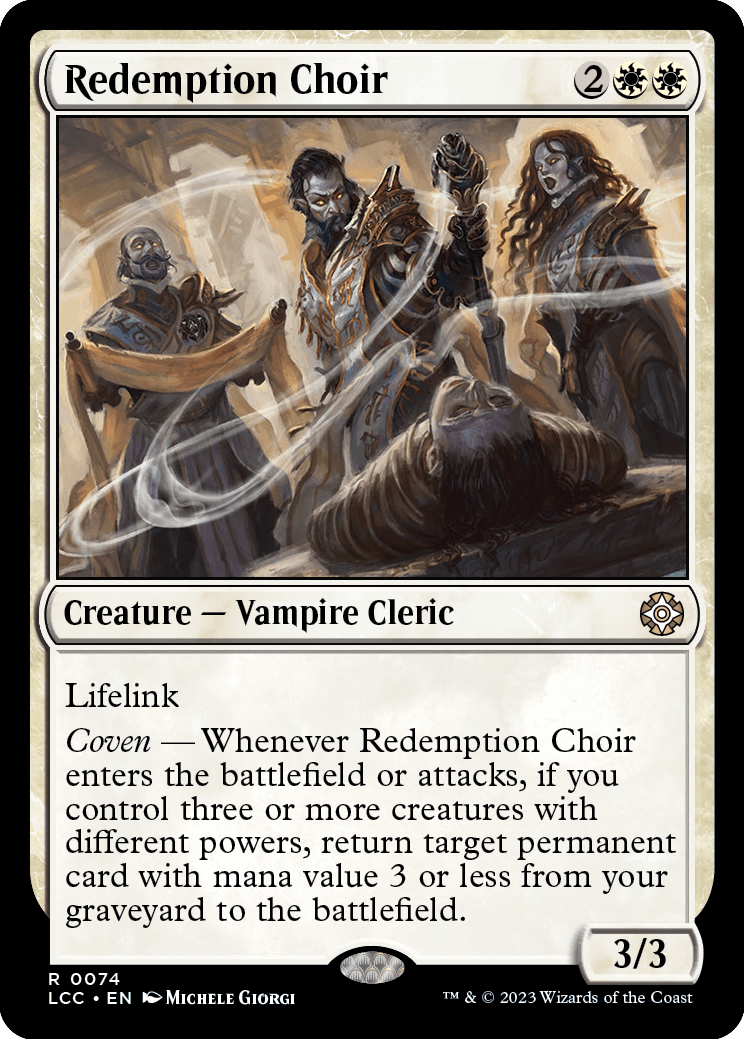
The stranger introduced herself as Elenda, custodian of the Immortal Sun, who had returned to Alta Torrezon after centuries of wandering on Ixalan. Elenda had been searching for an artifact called the Immortal Sun, stolen centuries prior from Alta Torrezon by the sphinx Azor. The monarch and pontifex of the church were incredulous of such a claim; that event was all but ancient history, having occurred centuries prior to her return to Torrezon. Elenda confessed to the monarch that she had taken on the blessing of vampirism to continue her search for the Immortal Sun on Ixalan and had returned to Torrezon to give this gift to her own people so that they could aid her in her search. The pontifex interpreted Elenda's revelation as a selfless act of sacrifice. With the church's blessing, loyalist nobility partook of Elenda's gift. This ritualistic blessing of the chosen with vampirism became known as the Rite of Redemption.
The Conquest of Torrezon and First Expedition to Ixalan, 494 BD to 5 Dawn Era, Present Day
Strengthened to supernatural might by Elenda's vampiric gift, the crown and church quickly secured victory over the apostasine princes and reunited Alta Torrezon. However, even united, the rulers of Alta Torrezon were not content with their ancient borders. Bolstered with vampiric strength and appetite, they began a campaign of conquest across the continent. Combining centuries of battlefield experience with the superhuman gifts of vampirism, Alta Torrezon's knights become the deadliest army on the continent. Over the course of four more centuries, the armies of Alta Torrezon inexorably swallowed up kingdom after kingdom, expanding outward from their mountainous home, driving waves of refugees toward the free cities on the coast. In the final century of Alta Torrezon's expansion, the few remaining independent city-states would fall to the Legion's armies, sending those briefly settled refugees fleeing once more—this time across the seas to Ixalan and other lands beyond. Five years ago, the Dusk Legion itself set out across the sea to reclaim the Immortal Sun. Thus began Alta Torrezon's dominion over the continent of Torrezon.
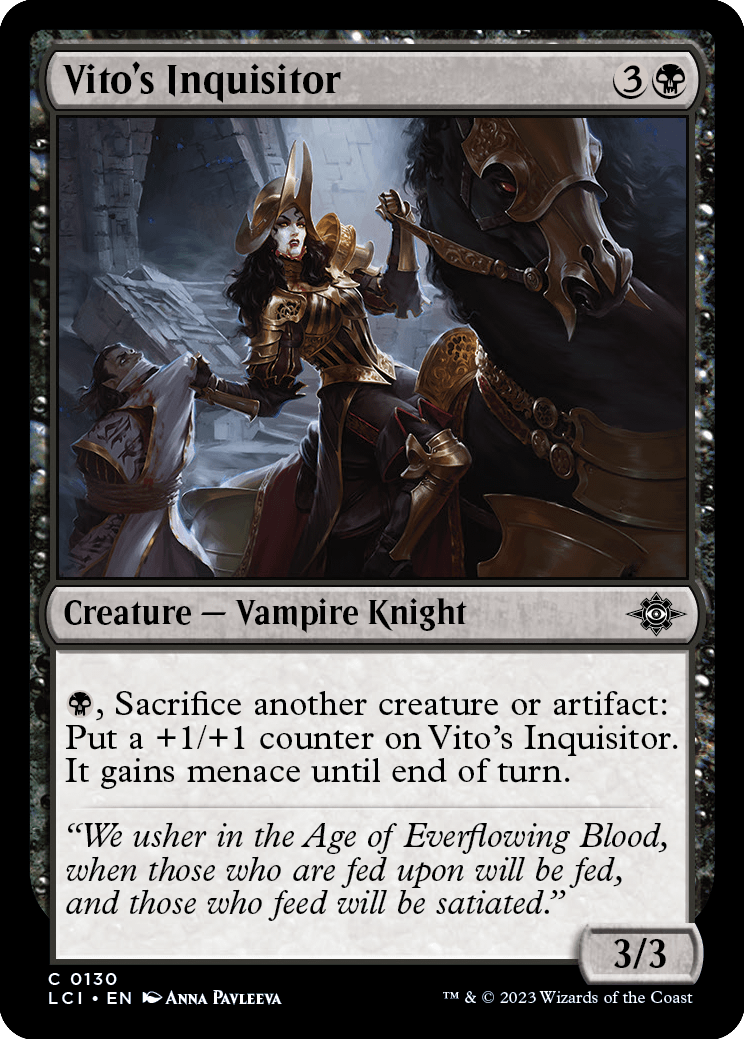
Alta Torrezon now rules triumphant over a conquered continent. Vampirism is venerated among the human masses of Torrezon. Owing to centuries of evangelizing, to become a vampire is to accept the ultimate gift of grace from the church; a vampire is not simply an undead monster but has been granted the gift of everlasting life, shedding their mortal humanity to be closer to divinity.
Alta Torrezon's appetite for power, gold, land, and blood could not be satiated, so the church and crown looked over the seas, toward lands of legend yet unexplored by their agents. In time, their ships brought back news of the distant continent that Elenda, the first venerable saint, had claimed to have visited: Ixalan, the home of Orazca and the Immortal Sun, the birthplace of Aclazotz, and the land where Saint Elenda discovered the Rite of Redemption. The Legion of Dusk's first expedition to Ixalan would end in disaster: a humiliation at Orazca, the second loss of the Immortal Sun, and Elenda's chastising of the Legion upon her return to Alta Torrezon.
The Phyrexians on Torrezon
The continent of Torrezon was not spared when the Phyrexians invaded. The former free cities along Torrezon's western coast—the continent's largest human population centers, essentially the breadbasket of Alta Torrezon—were the hardest hit in the invasion. Though the Phyrexians did not manage to cross the Deoro river or breach the mountains of Alta Torrezon, the struggle to liberate these cities churned the west to muddy ruin and left tens of thousands of paladins dead, hundreds of thousands of human levies slain, cities burned, cathedrals toppled, and countless revered artifacts lost.
Rebuilding is slow and fitful. Alta Torrezon aches with the invasion's aftermath. Noble families petition the crown daily for restitution and repayment of their war debt. Human claimants seek guidance and assurances. Apocalyptic fervor animates the more hagiographic elements of the church, who demand action from their new pontifex, Mavren Fein. Adding to it all is a wave of famine that grips both the human and vampire populations of the continent. Alta Torrezon's vampires—those without ties to the Legion of Dusk—struggle to find sources of food that fit within the church's narrow allowance: heretics, lawbreakers, prisoners of war, and other sanctioned donors who have not been touched either by Phyrexian oil or the lingering effects of exposure to Halo. Discontent and hunger simmer across Torrezon. Starvation-induced Blood Fasts and reports of gristly feedings come daily now to the courts of the crown and church, and though the crown and mainstream church demand an end to these heretical practices, radical bishops and cardinals call for an even greater bloodletting. Torrezon may have thrown off the Phyrexian invaders, but Queen Miralda struggles to keep order.
The Crisis of Faith
The arrival of the Phyrexians and the ensuing war of the invasion has convinced many of the faithful that the end times are upon them. Coupled with Queen Miralda's post-war austerity regime, the great famine, and time to reconcile the horrors they have all lived through, much of Torrezon's population simmers with discontent. Old institutions seem unable to respond to the scale of devastation around them, and those outside of Alta Torrezon look to the capital with jealousy. The old capital was spared the brutality of the invasion and now says to the rest of the realm that they cannot feed. A change is necessary, and the moment is ripe: a new world is about to be born.
In the church, eschatological excitement clashes with staid orthodoxy. Bishops and cardinals murmur declarations of heresy at each other under the vaulted ceilings of grand cathedrals. Gold-draped priests in the capital contend with ragged, charismatic street preachers in the capital, while outside of Alta Torrezon sanctioned pastors buttress their lonely parishes and humble flocks against great penitent marches. In matters of faith, for the Church of Dusk there can be no more important question than the direction of doctrine: the first cracks of a schism have spidered across its ancient edifice, and the only question now is will it be shattered by a blow or cemented closed by a steady hand?
Though not formally divided, the factions developing among the faithful are clear. The church orthodoxy is directed by Pontifex Mavren Fein, the pious. The radicals—heretics, according to the orthodoxy—look to Vona for guidance. This division has found its way to the profane politics of the crown and realm: Queen Miralda is de facto aligned with the pontifex and the church orthodoxy. Aligned against her rule are myriad separatists organized under Vona de Iedo, the antifex.
The Queen's Bay Company
After the end of the Phyrexian invasion, Alta Torrezon was eager to fund a series of expeditions to Ixalan. Considering the simmering tensions within the church and to ensure neutrality in their overseas endeavors, Alta Torrezon ordered the Legion to create a new commercial venture that would work for the benefit of the people of Torrezon: the Queen's Bay Company. The company is an organization of merchants, traders, captains, miners, and their patrons all united together in a single commercial project: the extraction, transportation, refinement, and sale of goods, treasures, and resources from Ixalan.

The company's neutrality is, on paper, ensured by its unique independent ownership structure: a stake of ownership in the company is made available to those who can afford to purchase one (or more). The crown, church, and Legion together each own a significant number of the company's shares, amounting to roughly half of the company. The remaining balance is owned by various interests, nobles, bankers, and wealthy merchants—many of whom work for the company directly or benefit from partnerships with the company. Granted an exclusive charter to the old fortresses in Queen's Bay on Ixalan, empowered by the Legion's paladins, and the sole supplier of cosmium on Torrezon, the Queen's Bay Company rapidly became a major power player in Torrezon's politics despite its relative youth as an institution. Struggle over control of the company is bloodless—for now.
The director of the Queen's Bay Company is Director Infanta Elena de Silos. The company's deputy director is Bartolomé del Presidio.
The Caverns
The caverns of Ixalan stretch from the exterior of the Core up to the surface, ringing the plane in countless miles of titanic cave systems. As explorers move down from the surface toward the Core, they delve deeper into Ixalan's history, encountering both living civilizations and the ruins and remains of those long since lost to history and the dark.
The Malamet
History
Ancient as the merfolk and humans on Ixalan's surface, the Malamet jaguarfolk long ago decided to move their territory underground to protect themselves against the might of the Sun Empire. Their history speaks of a battle that cracked open the face of the plane, where the children of the gods clashed with one another after being locked out of paradise. This war was total and bitter, ending with children of the gods cutting away all their finery to leave them clothed only in the mortal shells they now occupy: living bodies, subject to pain, illness, weakness, and age. Malamet record this legend as public history through their glyph-etched stele, marking humans, merfolk, and Malamet as the victors—siblings, not friends, who bested the twisted, dark children of Aclazotz.

The ancient Malamet stele speaks of an exodus, of shivering mortal bodies wandering lost and terrified, locked out of their home, far from their families and ancestors. These siblings—humans, merfolk, and Malamet—grew bitter and scared, so they turned on one another. Their history since then has been a grim one, a slow decay that has led to many of the Malamet to adopt an aggressive stance on their future: they desire to reclaim through strength what they lost.
Culture
The surviving cadre of Malamet are hearty, clever, and wise but suspicious, territorial, and ruthless. Their empires have long ago crumbled, been defeated by pre-Sun Empire humanity and driven into these caverns that—while they have been made luxurious—are generally regarded as evidence of their fallen status. Malamet jaguarfolk long to claim the land of the sun for themselves but generally recognize that they exist in the twilight of their culture. Some have taken this to heart and let it curdle them into petty, cruel, vengeful, and jealous monarchs. Others, though, have resisted this impulse and instead work to forge a future from the ashes, believing that a future won through wisdom, diplomacy, and the recording and sharing of their stories will be one that sees them basking in the light of a gentle sun once more.
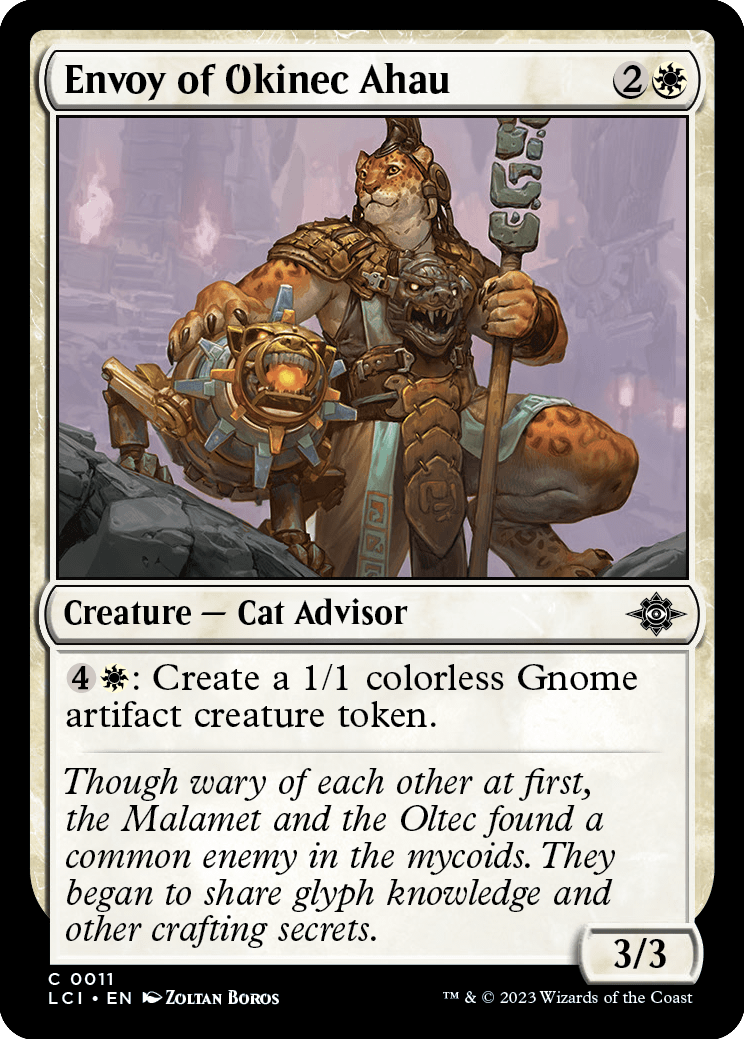
The written word carried tremendous weight and importance for the Malamet. Their language is recorded in glyphs that resemble the spot markings that form naturally in their fur. Malamet textiles, carvings, clothing, armor, weapons, icons of status, and so on all bear deeply meaningful glyphs, phrases, and names; mastery over the vast Malamet alphabet is a desirable quality among the Malamet, as well as one's aptitude in combining glyphs to create the most information-dense poetics one can. Malamet magic, as well, is derived from their glyphs: the will, wisdom, stories, and very forms of their ancestors are written into these glyphs and can be summoned to aid them in times of need.

Ban Koj, the Hanging City
Ban Koj is the de facto capital of the jaguarfolk on Ixalan and the largest jaguarfolk population center. It is known as the Hanging City, as it is built around, between, inside, and among a forest of massive stalactites that hang from the ceiling of a colossal cavern. Rope bridges, cart lines, walkways, nets, and platforms crisscross the air between the plunging stalactites, connecting buildings and stitching the city together. The city's population numbers in the tens of thousands, and it is the center of trade, poetry, literature, and mainstream jaguarfolk culture. Malamet in Ban Koj live in communal housing, their homes built into huge, fortress-like stalactites.
Ban Koj is ancient, grown into its stalactite foundations just as much as it has been built upon and into them. The sight of Ban Koj's inverted towers occupies a place of deep mythic, historic, and cultural importance for jaguarfolk regardless of cadre affiliation; for centuries—maybe even millennia—Ban Koj has been contested by sovereigns eager to claim its hanging spires for their own. Cadre wars have, on rare occasions, raged through Ban Koj's heights—one so cataclysmic that it severed a whole tower, sending it plunging into Porobal Koj, the city below Ban Koj.
Porobal Koj
Beneath Ban Koj is a large, primarily deep goblin settlement that sprawls across the cavern floor under the Hanging City, straddling both sides of a wide river. The goblins who live there are mercenaries, merchants, porters, scouts, and laborers for the jaguarfolk of Ban Koj. Midden Koj is a bustling trade city and river port for nomadic deep goblin cadres, mercenary cadres, and others who either don't need or desire to head up to Ban Koj's vaunted heights. Porobal Koj is dotted with rope elevators that allow transit between the cities.
Chama Koj, the Ghost City
Chama Koj is a ruin, a half-sunken city complex where liquified quicksand flows in deadly rapids. Chama Koj was not built as a jaguarfolk city but was the ancient capital of a forgotten culture—likely human at some point in eons past—that the jaguarfolk took for themselves. Librarians and faded Echoes speak of Chama Koj as being taken in conquest, won in a battle of champions, or bequeathed to the first sovereign who sat on its listing throne; all those stories are lost to time and the ever-flowing sands. Now, Chama Koj is uninhabited but for wandering, fading jaguarfolk Echoes. It is a site of pilgrimage for mythweavers and curious glyphscribes, who journey to the slowly flooding city to uncover buried mysteries of their own people, the people who built Chama Koj and all those who fought over it in now forgotten eons past.
The Deep Goblins
Deep goblins are small, sturdy creatures as adept at navigating dark, claustrophobic corridors as their aboveground cousins are at scrambling through a ship's rigging. A common sight among the armies of jaguarfolk, goblin society is split between those who have thrown their lot in behind the jaguarfolk, and those who remain independent.

History
Deep goblins are native to Ixalan's underground world, preferring to live in and around the deep chasms that split the lowest bowels of the caverns or in Malamet cities. Like bats and birds, Deep goblins evolved separately from their surface-dwelling cousins. Though they might appear to fill the same species gap on Ixalan, that is, as far as their relationship goes: appearances.
Deep goblins have a long history in the caverns but little recorded history as they have never banded together in a massive, centralized society in the way that the jaguarfolk, mycoids, and humans of the caverns have. However, because they never centralized, they have also never faced the same existential, catastrophic crises that have marked beginnings and endings for other civilizations. Deep goblins have existed alongside these grand cultures through their rises, wars, and falls, safe in their warrens and always willing to engage with the dominant power. Survival for Deep goblins is the marker of success; there is glory in longevity, not how much gold one can scrape together.
Unaffected by the Phyrexian invasion, the Deep goblins of Ixalan now face their first existential cultural crisis, prompted by increasing activity in the caverns: whether to integrate with the jaguarfolk against the surface invaders and the mycoids or to remain independent.
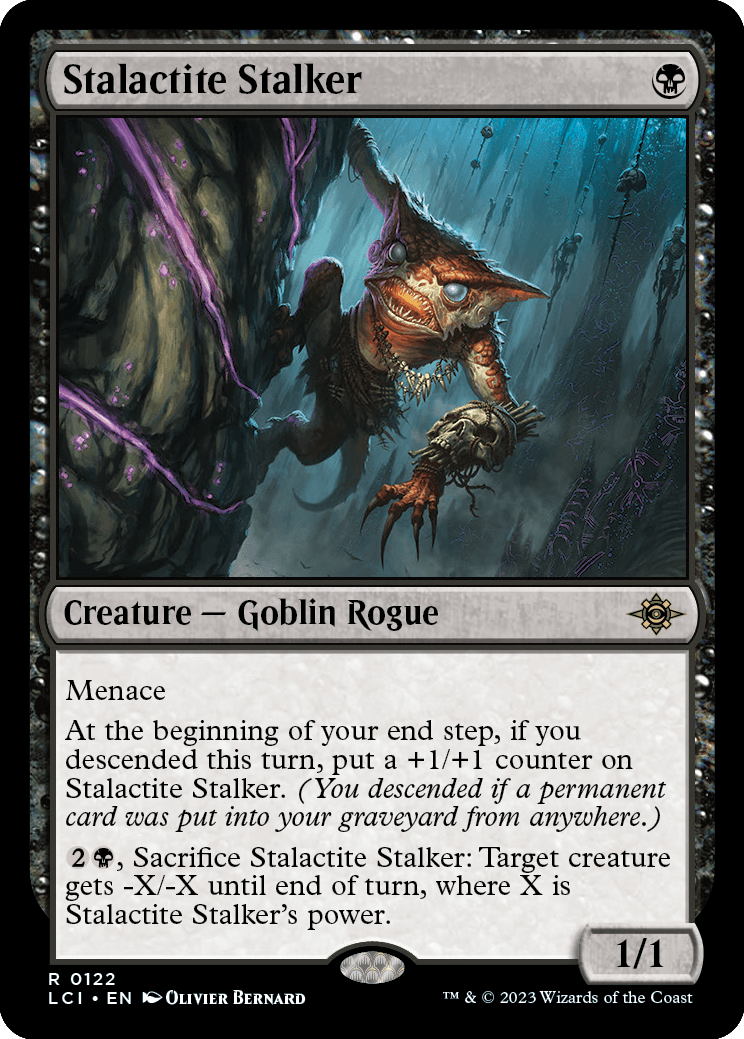
Culture
Deep goblin society is split between those who swear loyalty to the jaguarfolk and those who wish to remain independent from those who they see as cruel masters. This political stratification has led to a fracturing of Deep goblin culture: independent goblins have no written language, where mercenary goblins have adopted a dialect of the jaguarfolk script.
Both independent and integrated goblin settlements are organized in hive-like warrens built from baked mud and clay. Independent Deep goblin settlements are typically older, larger, and more populated than those occupied by integrated Deep goblins.
Deep goblins have a rich oral, mystic, and storytelling tradition. Without the presence of a sun and its ensuing day-night cycle, Deep goblins have a less rigid and linear conception of time: thus, there is one age and one everlasting day, with primacy given to moments and cycles.
Some Deep goblins have an esca, a small bioluminescent organ that protrudes from their brow, like a hanging lantern. These are prized among goblinkind for their beauty and rarity.
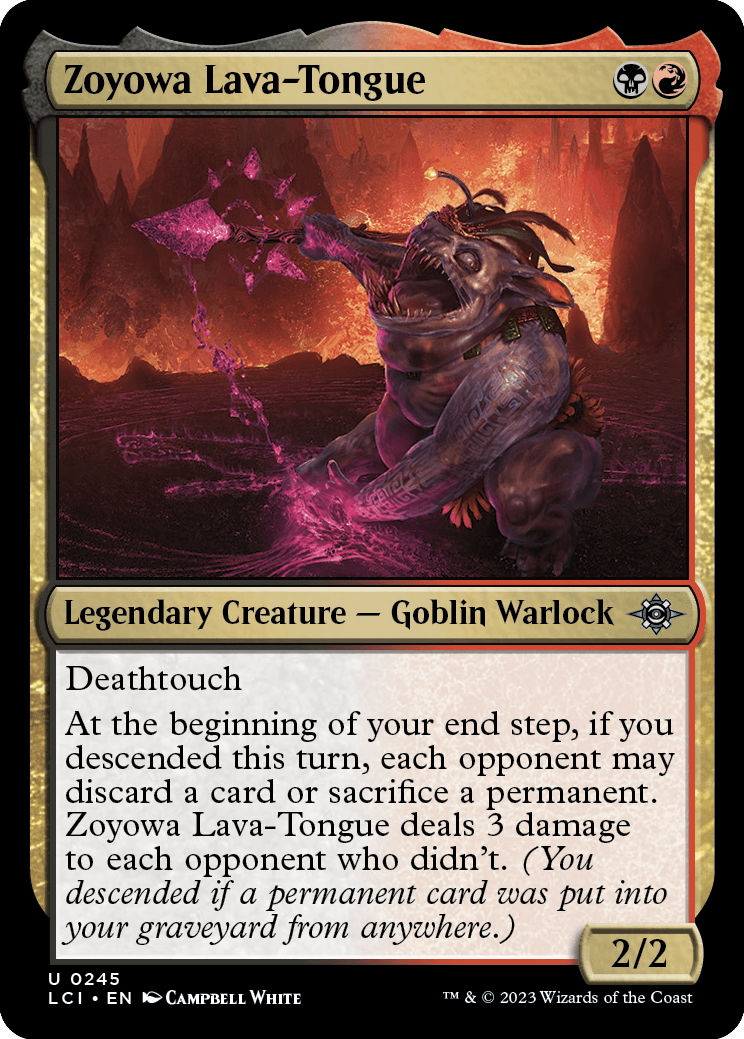
The Mycotyrant
The Mycotyrant is the gestalt leader of the mycoids, a race of virulent fungi that burst out of the Core and has spread through much of the caverns. In eons past, the mycoids were responsible for the inadvertent destruction of many of Ixalan's cavern civilizations. The mycoids are a strange mélange of cultures they consumed and integrated into their own shapes, forms, and patterns. The Mycotyrant is the leader of the mycoids and commands them as a single mind would control the appendages of its body: their goals are esoteric and unknowable, but accomplishing them demands the mycoids expand throughout the Core, claiming artifacts and explorers, encroaching on Malamet territory, and butting up against the sealed entrances to the Core.
Mycoids
Mycoids are found throughout Ixalan's caverns in myriad colorful, alien forms and sizes. Introduced by the Oltec on accident to the caverns millennia ago, mycoids have grown steadily to overwhelm much of Ixalan's underground. Thick enough in places to resemble cities and thin enough elsewhere to be represented by mere whiskers of mycelium, Ixalan's mycoids can be found in any region of the caverns.
Mycoids are quite different from mundane mushrooms and fungal growth on Ixalan's surface on account of their ability to develop sentience and the unique way that consciousness expresses itself. Ixalan's mycoids are a gestalt, a single mind dispersed across all its constituent parts, created and sustained by its constituent parts. This mind calls itself the Mycotyrant and thinks of itself as one titanic, world-spanning being with many parts; each mycoid, from the smallest spore to the largest primordium, is an eye, a mouth, a hand, and a vehicle for the Mycotyrant. Life, to the Mycotyrant, is experienced quite differently than it is among humans, vampires, merfolk, jaguarfolk, and other single-body persons—the Mycotyrant does not register pain or hunger, does not fear death or cherish life, and exists only to spread, consume, iterate, and overcome.
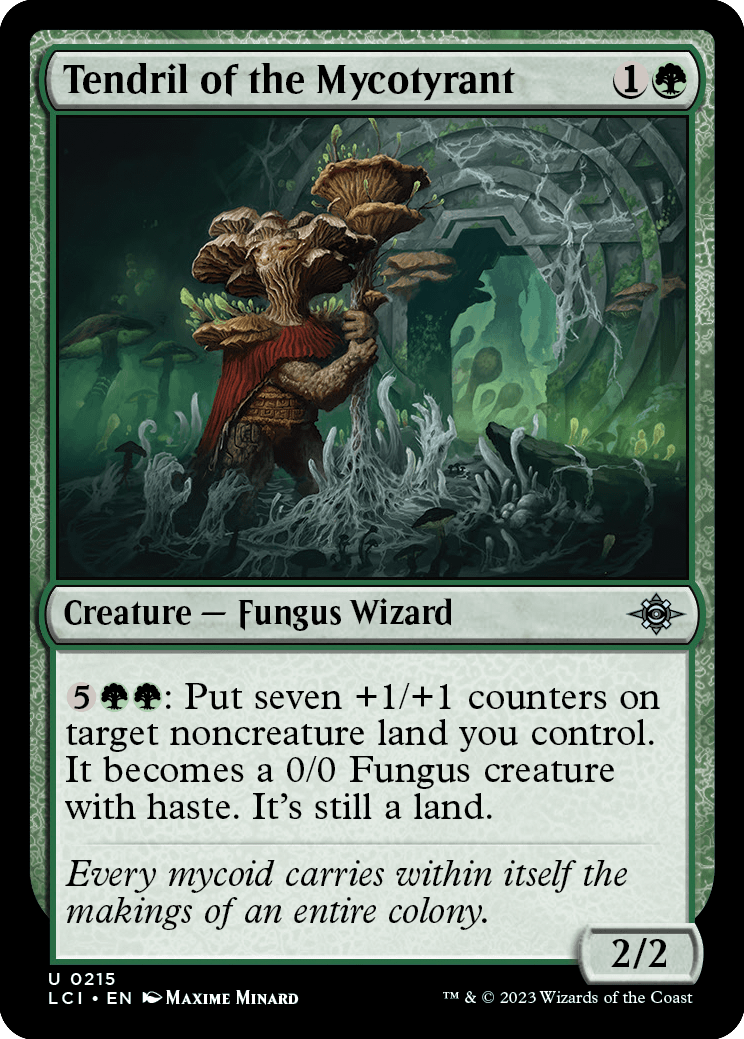
Should clusters of mycoids grow large enough they may begin to become the dominant mind within the forming body. These child minds of the Mycotyrant typically begin to develop when an ambulatory mycoid colony grows to the size of a human—a good rule of thumb followed by Oltec rangers is that the larger a mycoid gets, the smarter it is—and consequently more dangerous. Though individual mycoids may begin to develop their own consciousness, so long as they traverse the caverns where the Mycotyrant grows, they will never be wholly free of the Mycotyrant's command; though they may form their own thoughts, develop modes of existence counter to that of their distant parent, and think of themselves as their own individual consciousness, on Ixalan, the Mycotyrant is always there, lingering inside their minds, whispering its command.
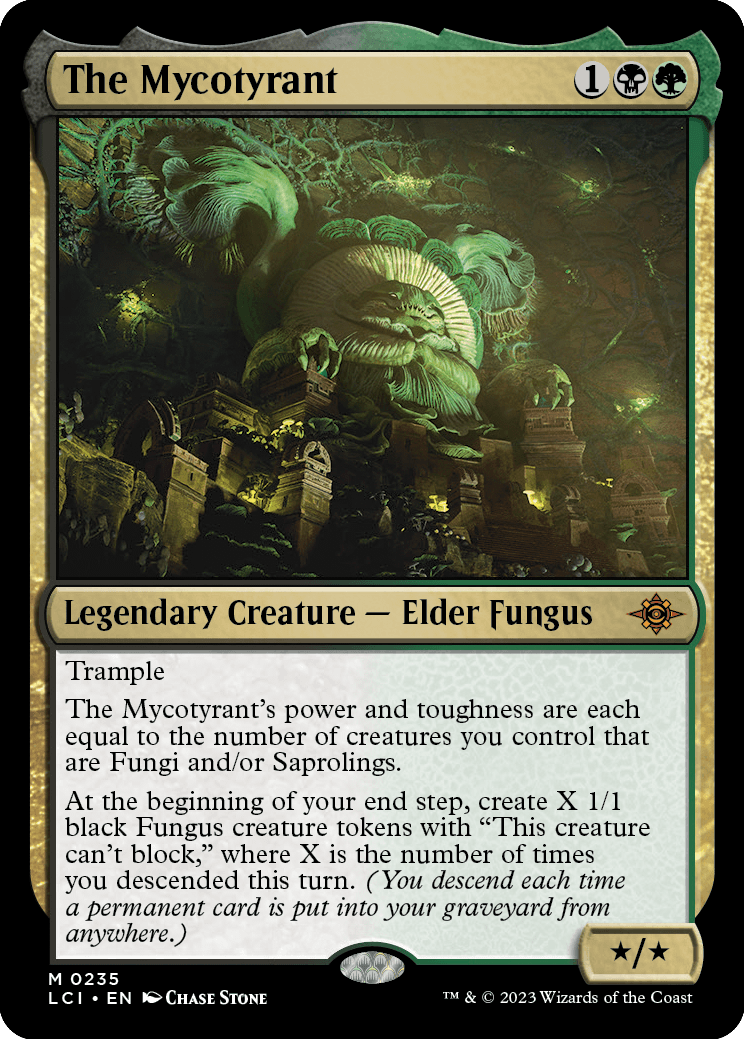
Culture
The Mycotyrant has goals and designs that are alien to human minds but organize their culture around some recognizable touchstones. Much of their growth is influenced by the creatures they encounter; indeed, the primary way the Mycotyrant learns is via consumption, digestion, and replication. This process has allowed mycoids to develop rudimentary systems of magic, tool creation, and weapons, though they are not without their own internally generated magics and technology.
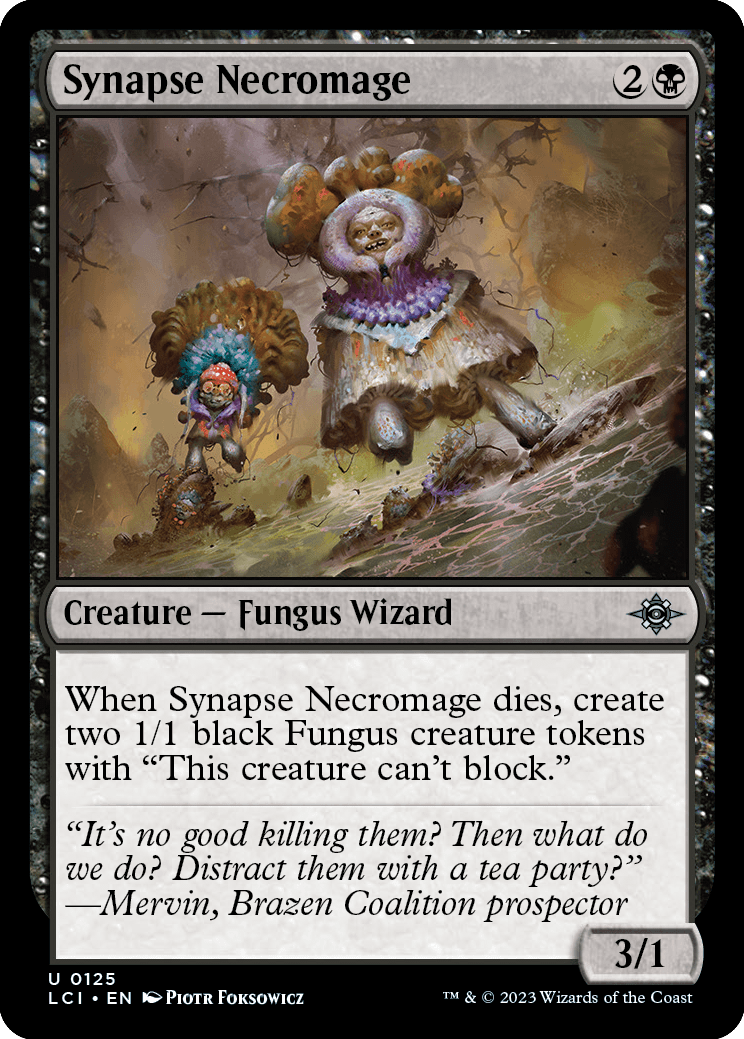
Mycoids, as humans understand them, exist to consume and grow. The Mycotyrant prizes information, data in the form of living (or undead) organisms to consume, study, and attempt to replicate. As their primary source of data has been humans, they tend to attempt to recreate human culture. Mycoids create massive, city-sized colonies that echo cities built by humans: Sun Empire adventurers in the caverns have been surprised to recognize Pachatupa's terraces or the stepped temples of Otepec recreated in titanic folds, gills, and fungal flesh, crowded in among other landmarks unknown to them (but ancient knowledge across the mycoid gestalt).
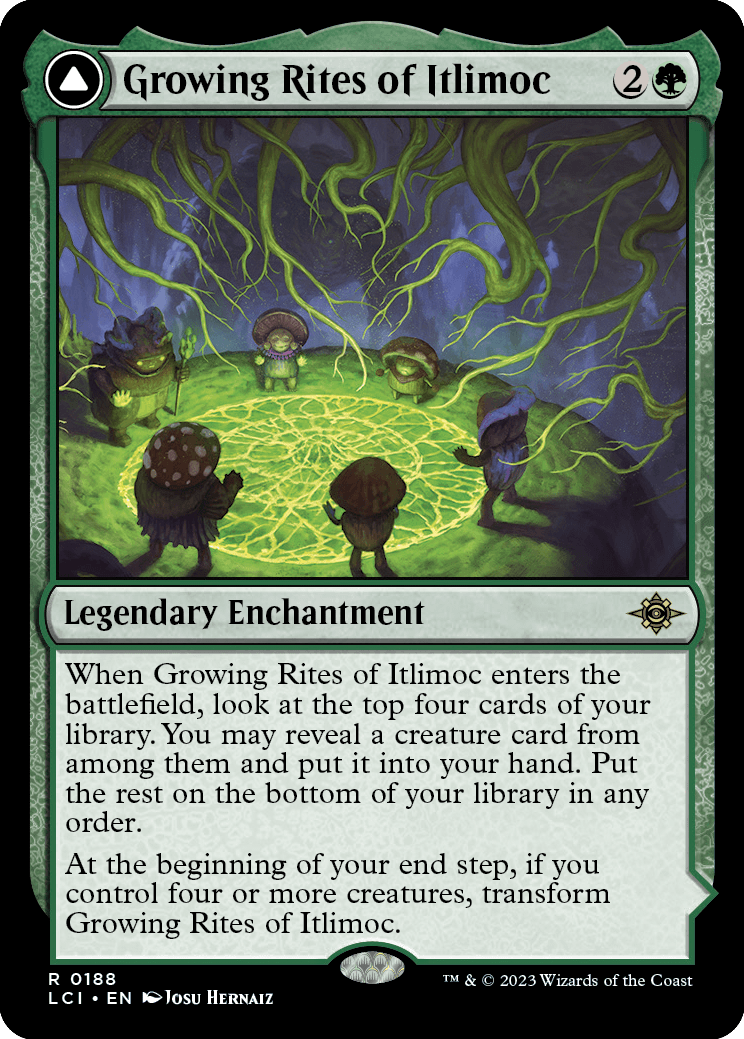
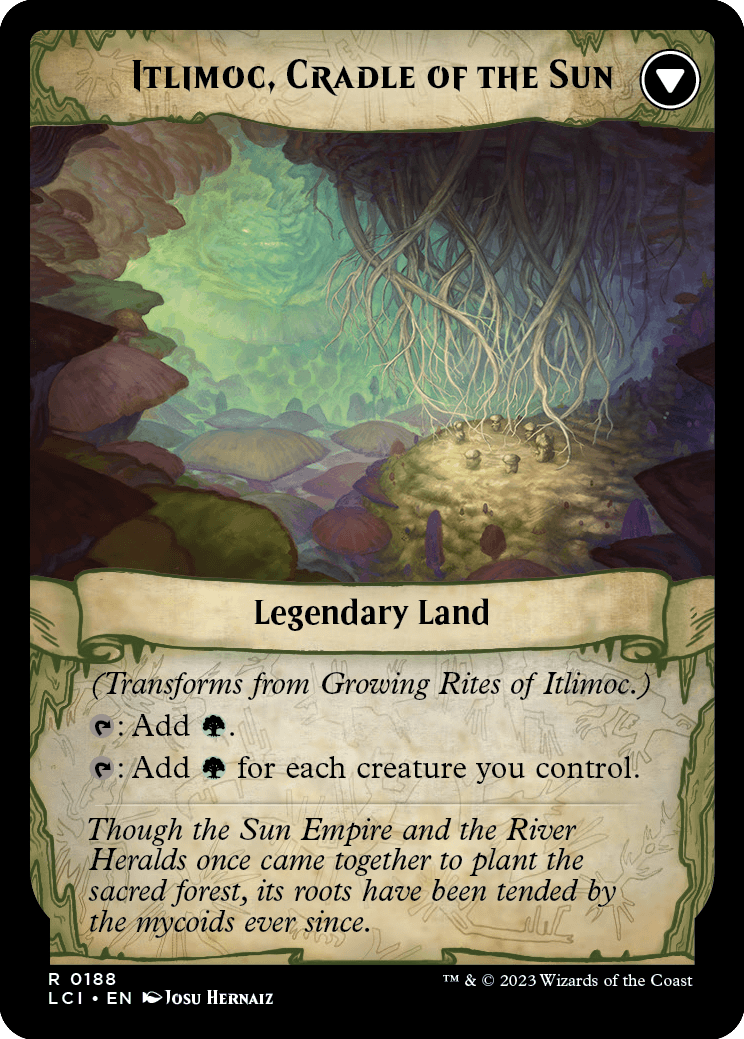
Mycoids are adept at navigating the caverns in myriad forms and in any level of illumination. Though they do not need to carry light with them to see, they typically do so because of their consumptive learning: mycoids will recreate through bioluminescence the lighting apparatus of any other culture, often integrating it directly into their bodies.
Native to the caverns, mycoids have two overriding cultural motivations: to consume and expand. Thus, while they are not ideologically motivated toward conquest, they de facto engage in conquest, pressing up against the borders of various jaguar kings' realms and Oltec Core entrances.
The Core of Paradise
The Core of Paradise is a massive, hollow space inside Ixalan that encompasses a small, life-giving god-star, Chimil. The habitable surface of the Core, then, is on the inside of the space as opposed to the outside. In the Core, there is no horizon, only a gentle upward slope that disappears into the hazy distance. One could, if they set out well provisioned and determined, leave from their front door and circumnavigate the Core to wind up right back at their front door. As gravity stays consistently down relative to the star, Chimil, that floats in the center of the Core.
The Core is the oldest place on Ixalan, the birthplace of humanity and the site of millennia of history: as such, it is rich with the kind of wealth most valued by the Brazen Coalition, ties to divinity sought by the Legion of Dusk, and knowledge hunted by the Sun Empire.
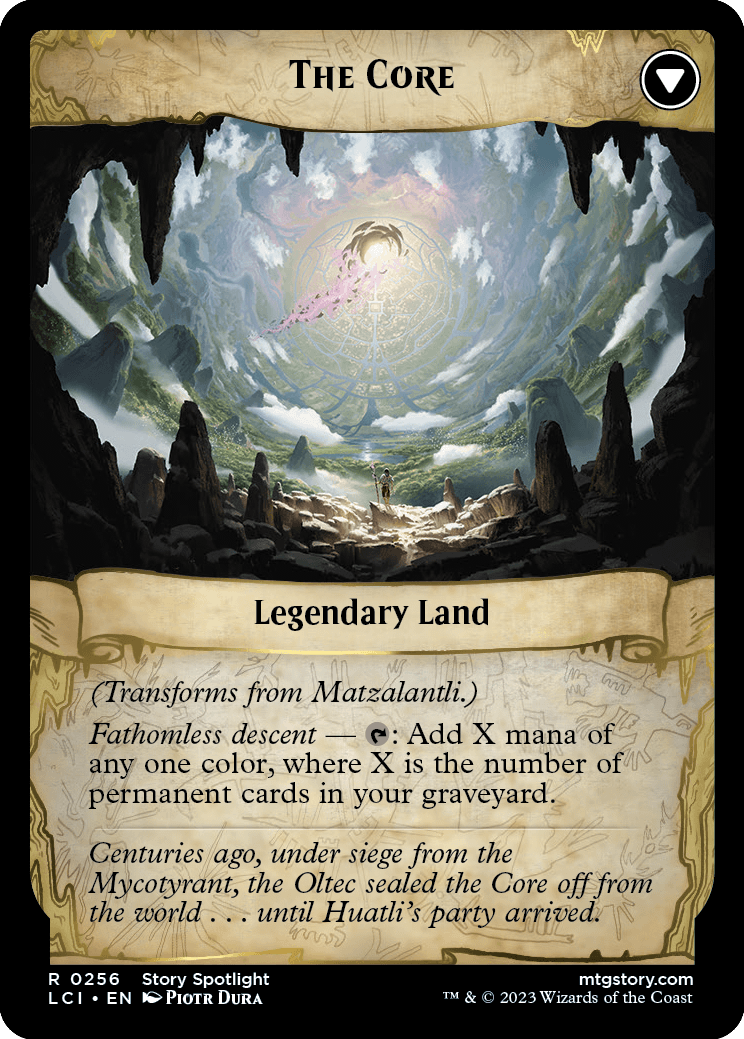

The Oltec
The Oltec are the dominant civilization of the Core and living human ancestors of the Sun Empire. The Oltec see themselves as the first peoples on—or, in—Ixalan, a world made by Chimil and shepherded by her children, the Deep Gods. The Oltec are the defenders of the Core, guarding all entrances to this wonderous space and keeping vigilant against threats that might encroach on this vaunted idyll. They live in harmony with each other and the natural world and view themselves as caretakers of it—stewards rather than rulers.
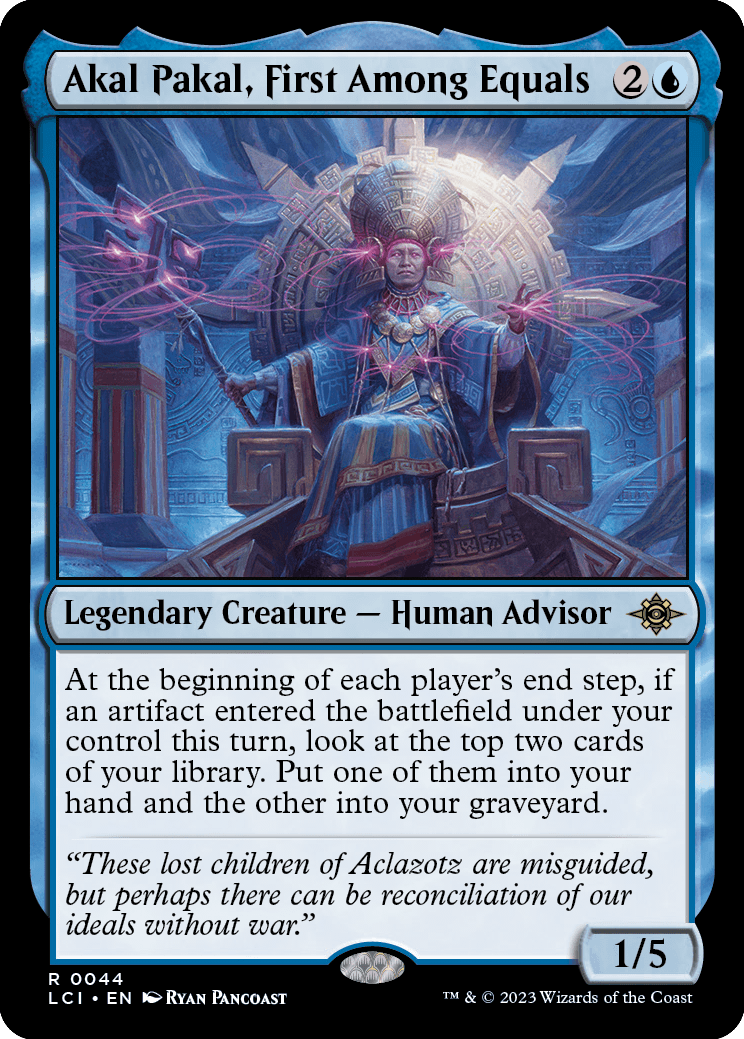
The Oltec are a modern, advanced human civilization who have lived for millennia inside the Core of Ixalan. They are the precursor civilization of the Sun Empire and remain their cousins but have not had significant contact with them since the Sun Empire's ancestors first emerged on Ixalan's surface. They claim a proud history as the first humans on Ixalan. Though they are now the Oltec, they—and all humans—were once the Komon Winaq, the Fifth People. In their conception of the world, if humanity persists, so does the Fifth Age, and so, too, are they proven to be the chosen favorites of Chimil.
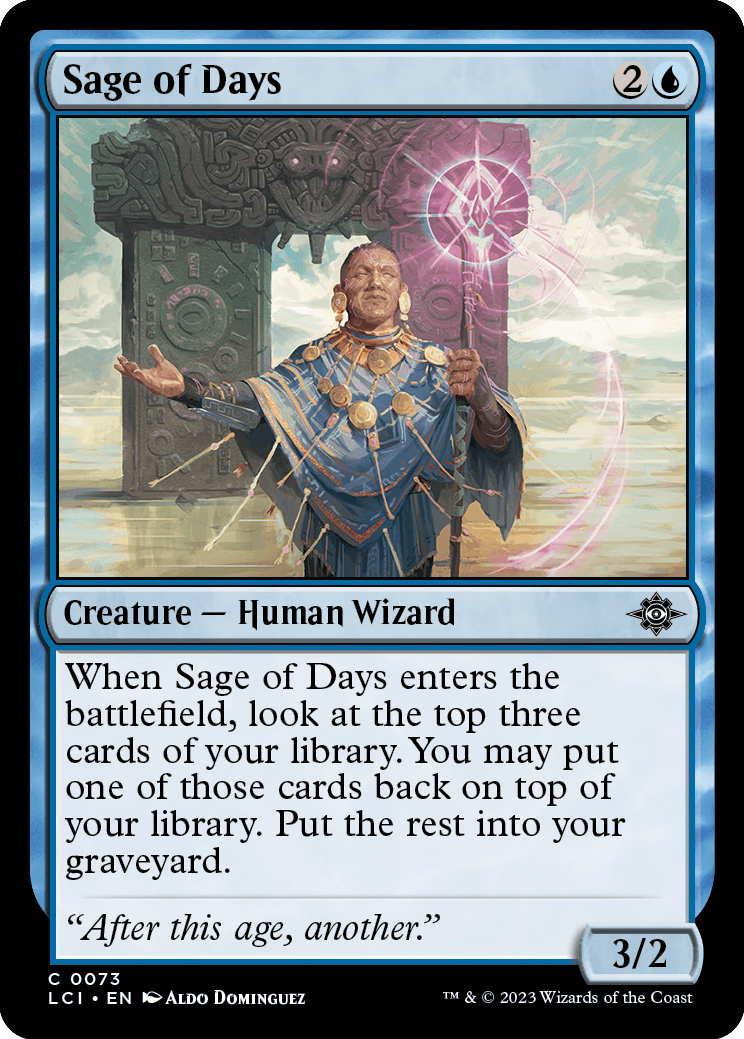
In contrast to the Sun Empire, the Oltec have no Imperial ambition and are not an empire but a constellation of communes: egalitarian, arcological city-states linked together by trade, shared history, and purpose. The Oltec are guardians, stewards, sentinels, and protectors of the Core, and nothing more. Though they are of course curious as to the nature of the caverns and the politics of the surface world, they have no state-level designs on conquest—that is not to say, though, that there are not factions within the Oltec who could not be swayed toward conquest, should the right reason come along.
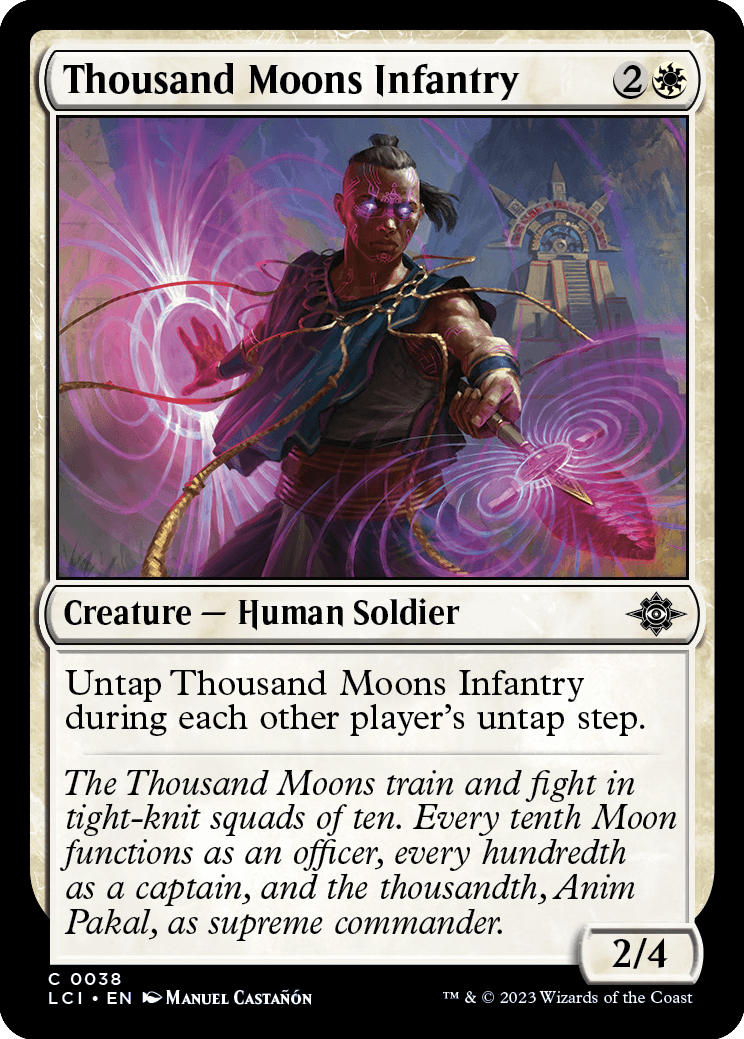
Ancient Victors, Ever-Vigilant Stewards
The Oltec view themselves as enlightened monastic sentinels whose purpose is twofold: defend the world from great threats and cultivate the Core as a gardener would a beloved plot of land.
The Oltec mark two great threats to the Core:
- Aclazotz. Now understood to be the progenitor of vampirism, Aclazotz is widely known to the Oltec as the eternal enemy of God-Mother Chimil, the riven star and the Deep Gods. He features in Oltec myth and histories as a trickster, a craven and greedy glutton, a vile beast and murderer who would betray his own people for a scrap of power; nevertheless, many still seek him, following his whispers to the dark places of the Core where he promises them wealth, power, and eternal life if they can find and free him.
- The mycoids. The explosive spread of the mycoids throughout the caverns stunned the Oltec and forced them into their current isolation. In the ages since, the Oltec have kept some tabs on the mycoids via Echoes but have not been able to discover a way to defeat them yet—not a cure for their infection.
The Core Is the World
To the Oltec, the world is the Core. The caverns and the surface of Ixalan are strange lands populated by exotic creatures, cultures, and beasts. The construction of the surface world—a horizon that appears to be a sheer cliff off which one could plummet from the edge, an endless sky open to a vast and dark void—is unsettling to them; less so the caverns, which they understand and have had much more contact with prior to them sealing themselves in against the mycoids.
After encountering the Sun Empire, the Oltec feel themselves being pulled in opposite directions: some wish to extend their stewardship over their descendent civilizations on the surface, while others have no interest in the politicking of their children.
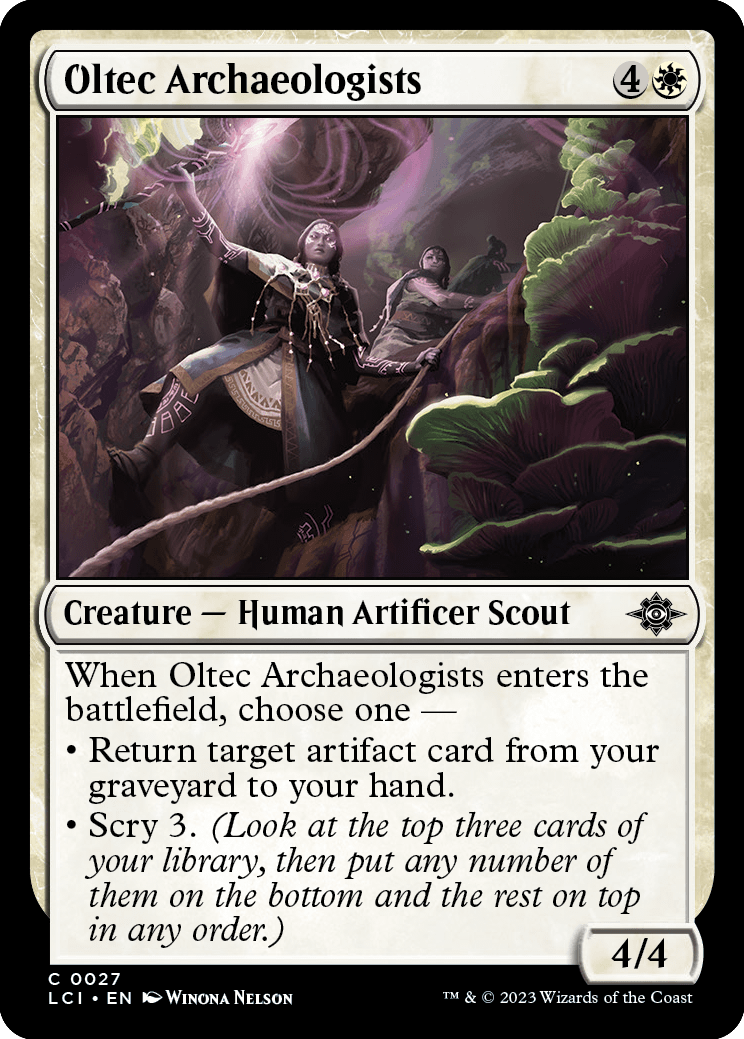
Oltec Cities
Oltec cities are grand, clean, and densely populated arcologies—built in harmony with nature. It is common to see canals winding through them, as well as green spaces and preserved natural beauty: the Oltec would rather build around a natural feature and incorporate it into their vision of the city than pave over nature's beauty with another road. It is perfectly possible for one to navigate across the entirety of an Oltec city using a public canal boat, via teleferico (suspended cable car), and on foot in the same journey.
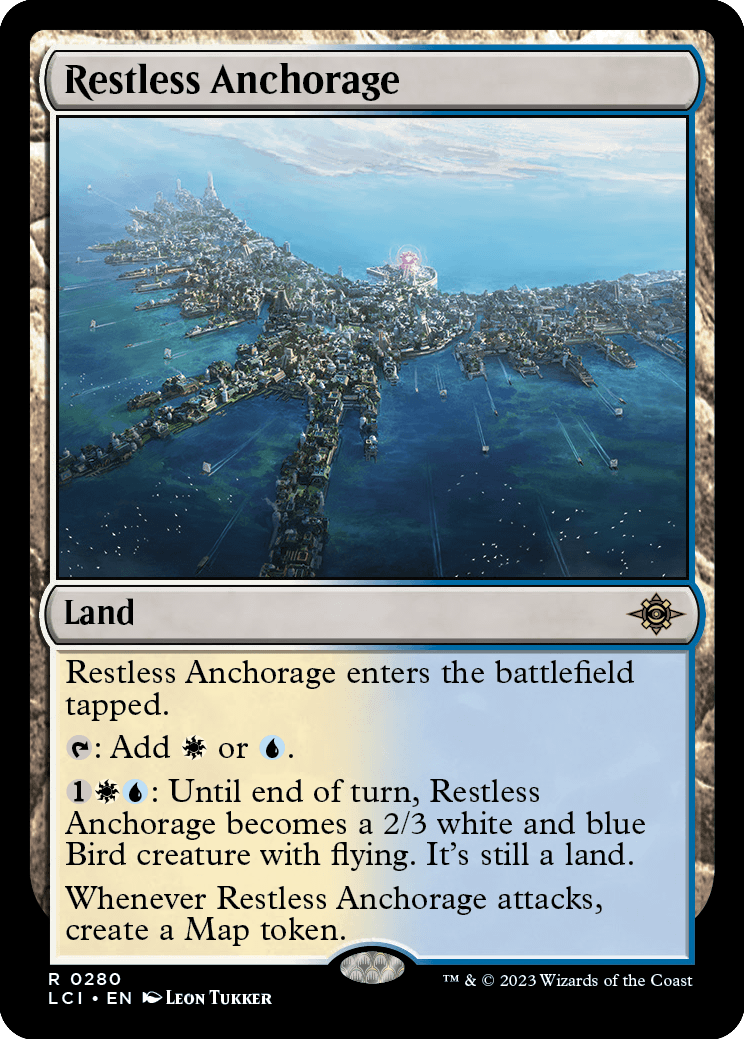
The Oltec build their cities in relation to and reverence for Chimil: they are commonly laid out in the shape of a nine-pointed star, with large viaducts connecting their satellite districts, towns, harbors, or temples to the city center. They are orderly and clean: mess in the streets is reserved for market districts or festival days, where ample use of public space turns the white marble cities into vibrant places of ceremony, trade, and celebration.
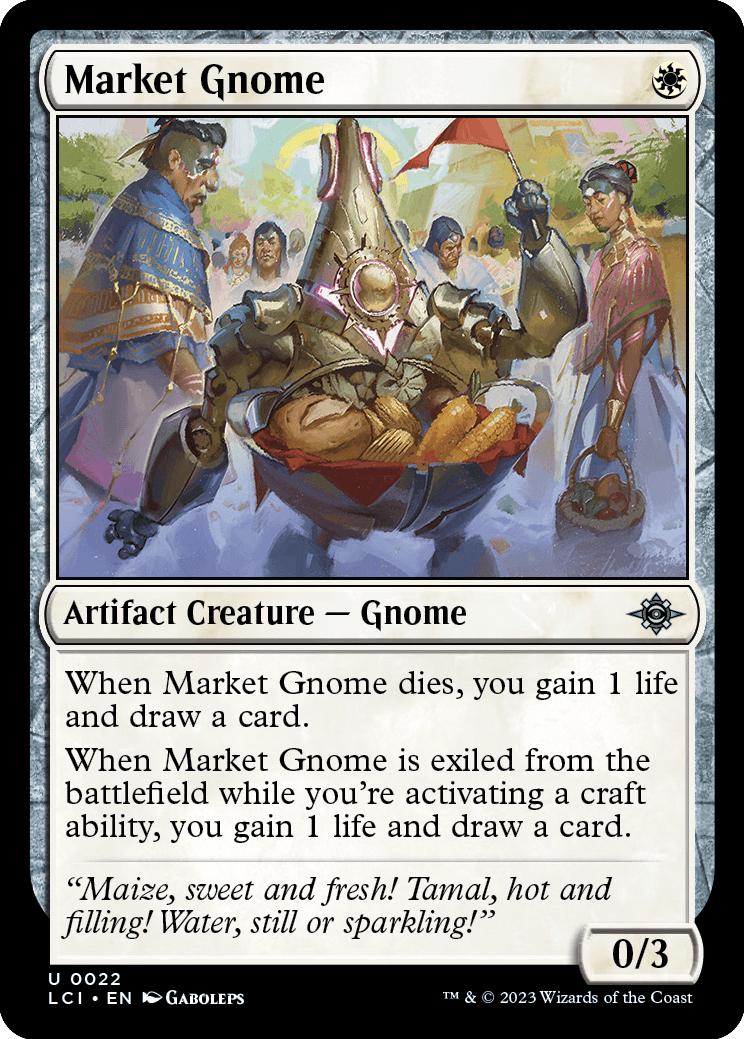
Cities are vibrant and multi-tiered but open to all—order, for the Oltec, is not the same as the Sun Empire's vision of order and hierarchy. As the Oltec live in communes and have a relatively horizontal hierarchy of power, their cities reflect this with vast public spaces and buildings, communal living arrangements, and estates where multiple families live and work. This ring layout is reflected outside of the grand capital cities as well, where rural Oltec live and work in communes on shared land.
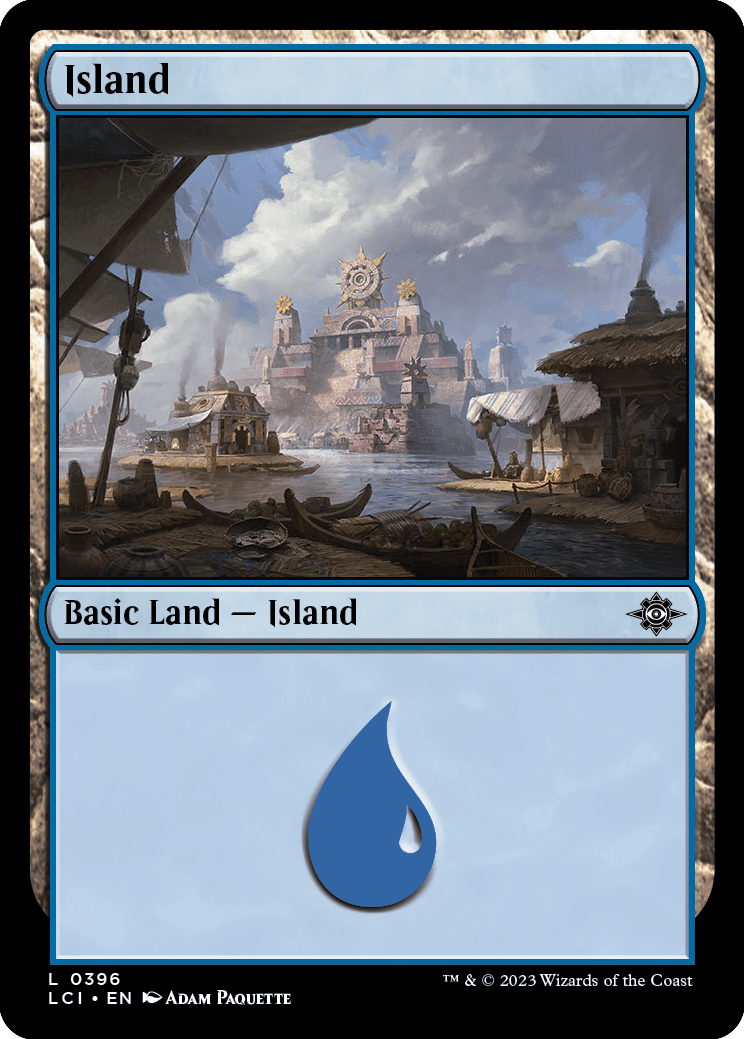
Chimil and the Deep Gods
The Deep Gods are revered in Oltec society but are not as distant as the aspects of the sun are to the people of the Sun Empire. The Deep Gods, in contrast to the Threefold Sun, have walked among the Oltec, fought alongside them, drank with them, wept with them, loved with them, and died for them. This mingling of deity and mortal is reflected in the Oltec impulse toward the egalitarian and multirole: priests are often civil leaders or military leaders, teachers, farmers, and so on. To the gilded priestly orders of the Sun Empire and Torrezon, an Oltec high priest might seem like a lay preacher or field evangelist, but to the Oltec, a lack of finery does not indicate a lack of faith.
The chief deity of the Oltec is Ojer Taq. Second to them is Ojer Pakpatiq. Chimil, or the riven star, is the mother god of Ojer Taq and understood by the Oltec to be the same deity as the Threefold Sun.
All the Deep Gods have temples dedicated to them in the Core, though Aclazotz's places of worship are hidden, typically no larger than a shrine or small cave, and regarded with disgust or distaste by most Oltec. The largest temple complex in the Core is the Temple of Civilization in Oteclan; the second largest is the Temple of Cyclical Time, which stands opposite the Temple of Civilization.
Chimil, the riven star, has no dedicated temple in the Core, as she is present always in the sky; one can simply go to her or look up and venerate her. Many communes, however, keep small shrines, lanterns, or icons of Chimil in their main halls. As well, Oltec architecture, fashion, and armor commonly incorporates a stylized glyph or etching of Chimil, echoing the constant presence of the star above them and her importance in their history.
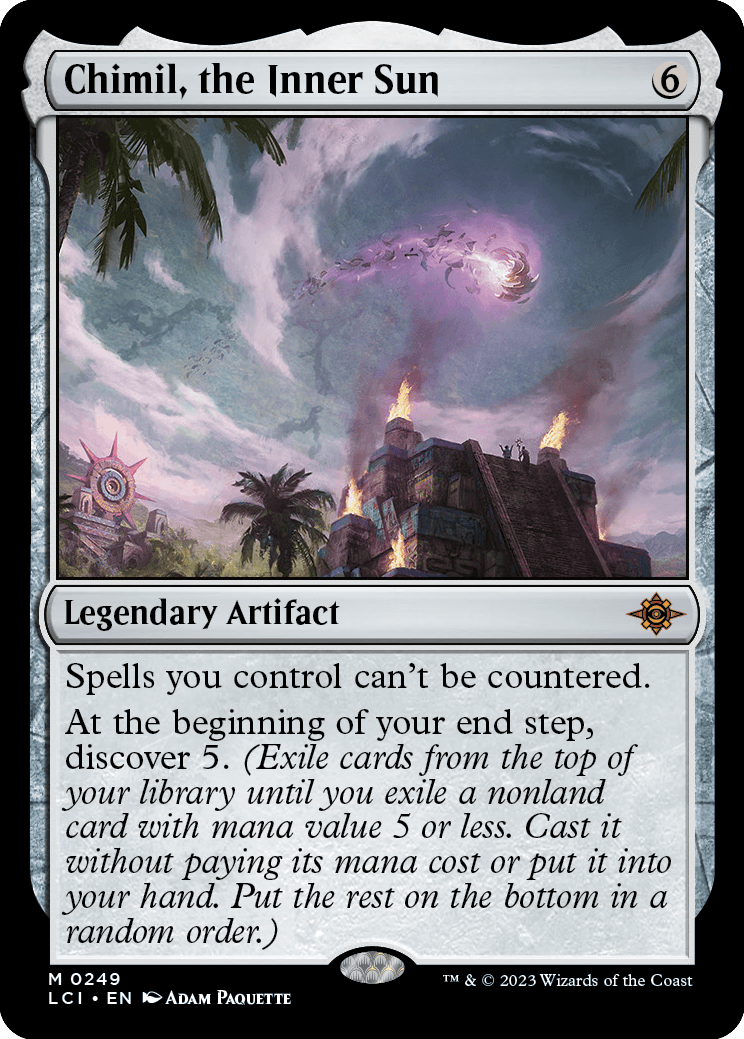
Ojer Axonil and Ojer Kaslem are worshipped primarily by the Thousand Moons and Gardener Orders, respectively, as deities relevant to their practices. Their temples are smaller and less traveled, though among the orders that worship them, they are venerated and their feast and festival days observed.
Cosmium
Cosmium is a mineral found throughout the caverns and the Core in veins, pockets, and clusters. It can be mined or extracted, refined, and then applied to organic and inorganic matter to enhance any latent magic properties present or imbued in the object or being. Refined cosmium is best thought of as a battery, conduit, and projector for magic, inexhaustible and only limited by the being wielding it or object to which it is applied.
Cosmium was introduced to the Core and caverns by Chimil, the riven star, during the Night War. Oltec scientists and geologists theorize that cosmium is closely tied to the life-essence of Chimil and may in fact be the godly equivalent of blood or soul; Chimil has not spoken on this, other than utterances and myths contemporary to the era that describe the weeping star hemorrhaging cosmium as it healed from the breaking of its ruinous shell. Because cosmium is so new (geologically speaking) to Ixalan and its source is in the plane's core, it is most dense in the Core and becomes more trace the farther away from the Core one moves.
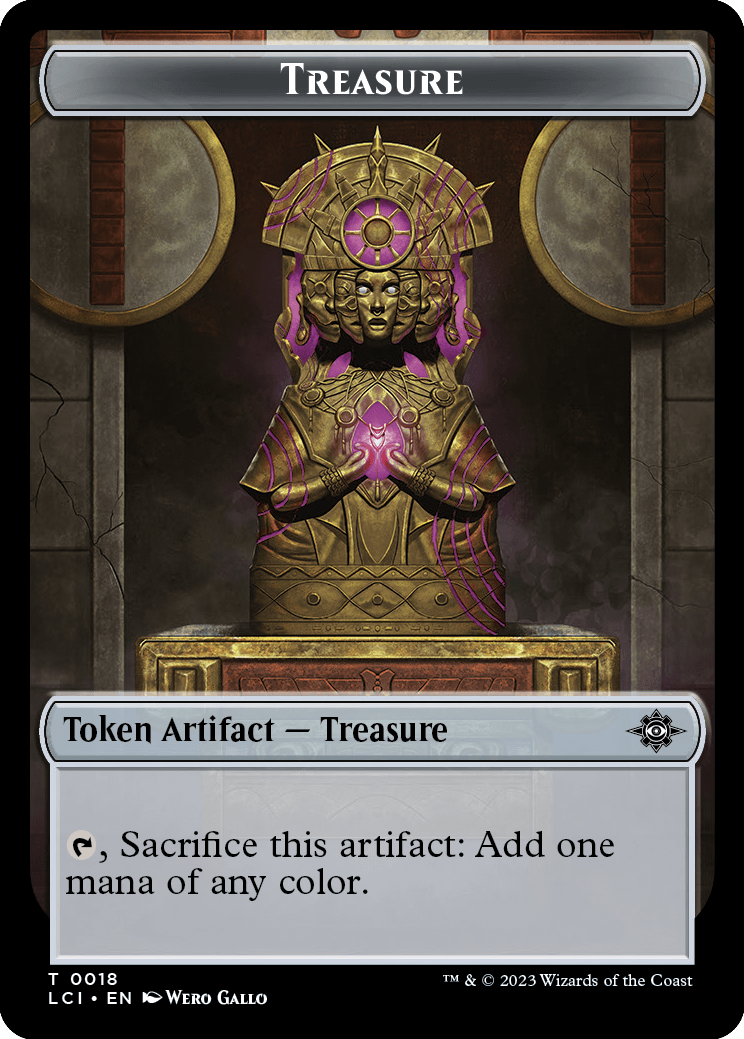
Shortly after surface cultures discovered cosmium, they determined that the application of cosmium to weapons and armor as a coating or inlay will increase that item's durability and enhance any existing properties. A blade made from or coated in cosmium will never dull, a cosmium-studded or -enameled cuirass will resist cannon fire, a drill bit coated in cosmium paint will grind through any rock, and so on.
Scholarship on cosmium is ongoing on the surface. In addition to its magical properties, it is quite a beautiful substance when refined and cut by gemworkers. The wealthy and powerful of both Torrezon and Ixalan prize cosmium-inlayed clothing and fine goods, weapons, and regalia. Among the vampires of Torrezon, ingesting cosmium has proven to act as a substitute for a vampire's hunger and need for blood; this has produced a corresponding call for more and more quantities of the wonderous mineral, both as an important manufacturing component and gourmet luxury.
The Oltec and Cosmium
Seeded by Chimil throughout Ixalan's caverns and the Core eons ago, exposure to and manipulation of cosmium has allowed the Oltec to transform themselves from a small agrarian society to arguably the most advanced culture anywhere on or below the known world.
Among the Oltec, it is quite common to have tattoos done with cosmium ink as a rite of passage, ensuring one is never without a ready reserve of Chimil's gift. The effect this practice has on a person is substantial—a longer life, greater health, an increased affinity toward schools of magic, strength and stamina outside of the bounds of what an otherwise unenhanced person can attain. An Oltec youth's first tattoo is the culmination of a lengthy coming-of-age trial that ends in a journey to Chimil itself to gather the necessary amount of cosmium for their first tattoo.
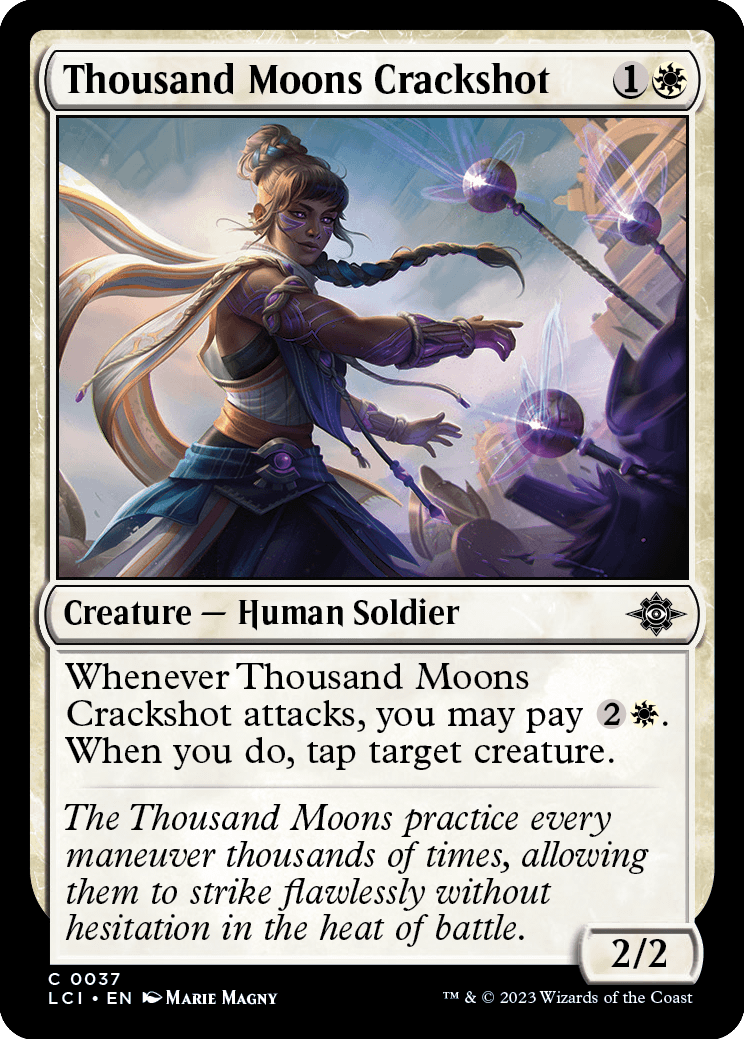
Roles
Stewards
Stewards are Oltec civic leaders, representatives elected by popular vote of the commune they wish to represent (a commune can be anything from a small farming community to the whole of the mighty city of Oteclan). Once elected, stewards serve on regional councils; those regional councils elect a representative to send to the primary governing body of the Oltec, the Level Council. To be eligible to become a steward, one must have completed their first pilgrimage to Chimil.
Stewards wear richly appointed robes of office and etched crowns with glyphs denoting which commune they represent. They typically carry simple wooden scepters and wear quipu with brass or gold plates woven around the collar. Though most stewards are elders, it is not at all uncommon to see younger stewards—especially from larger communes where stewardship is often a formal career path rather than an obligation.
Gardeners
Gardeners are the priests and laypersons of Ojer Kaslem. Gardeners are at home in the tropical forests and mountainous jungles of the Core, where they ensure the health of the wild, cultivate and gather medicinal herbs and other flora, and maintain ancient ruins, monuments, and Echo stele. Gardeners are some of the most widespread priests of the Deep Gods, as they often are the first to maintain rural roads and trails, keep watch for fires, and minister to far-flung farmers, fisherfolk, and ranchers.
Gardeners wear robes and clothing fit for travel and work in humid, rough environments. They can be easily identified by their walking sticks, tall caps, and simple quipu.
Didacts
Didacts are the priests of Ojer Pakpatiq, the god of cyclical time. Didacts as well are teachers, and their temples are known to the Oltec as centers of advanced learning and deep study. Though inspiration may strike anywhere and at any time, refinement of raw inspiration can be found at the didactic temples, where Oltec of all ages finish their studies.
Didacts are explorers as well as scholars. They are equally at home in the field as they are in ancient archives and libraries, though their dress differs greatly depending on where they are encountered. In the field, didacts wear practical, mobile clothing and carry all their field-necessary gear and equipment on their person. In cities, didacts wear simple robes, headdresses that indicate their role, and typically are never seen without at least a scroll and lead for taking notes or scratching down ideas.
The Thousand Moons
The Thousand Moons are the one thousand professional warriors of the Oltec, each of them a priest of Ojer Axonil after their training. The Thousand Moons are honored members of Oltec society, though outliers when compared to the egalitarian, pacifist civilization they exist to defend. The Thousand Moons are hierarchical, with every tenth moon functioning as an officer, every hundredth as a captain, and the final as a supreme commander. The Thousand Moons are adept fighters on the ground, training regularly in tight-knit squads of ten with and without cosmium-enhanced weapons, armor, and magic.
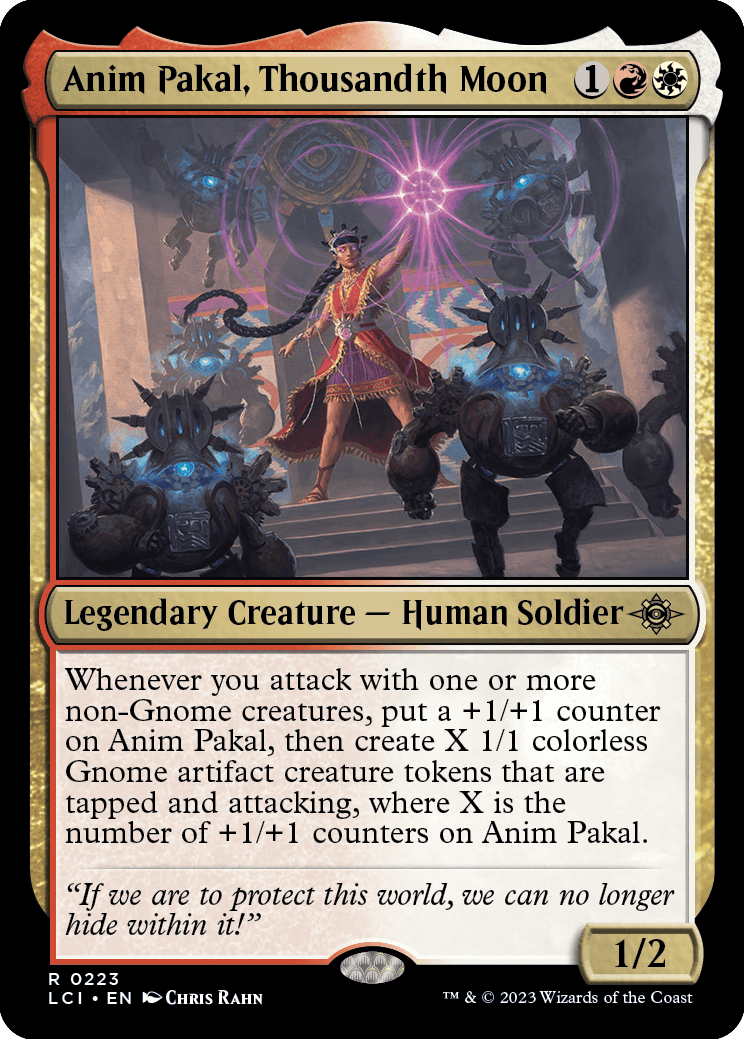
Gnomes
Gnomes are small, cosmium-powered mechanical helpers that the Oltec have utilized since the end of the Night War, when they captured and reverse-engineered the technology to create them from the Fomori. Over the centuries, the Oltec have refined gnome systems and expanded upon the earliest patterns, creating hundreds of variants that fill roles, from simple foodservice automatons to complex models capable of deep thought. Since the rise of the Mycotyrant, gnomes have been extremely useful as explorers, surveyors, and scouts outside the safe confines of the Core. The word "gnome" is foreign to the Oltec but is nevertheless used to acknowledge the automatons' foreign roots—not as a grace or credit to the invaders but as a reminder to the living Oltec. Gnomes in the Core are produced in batches as different cities, orders, and groups file orders approved by various steward councils: this is to ensure restraint in their creation and employment. Since the opening of the Core, the Sun Empire has expressed great interest in acquiring gnomes and the secrets of their construction for their own use, but the Oltec have not yet allowed this trade to occur.
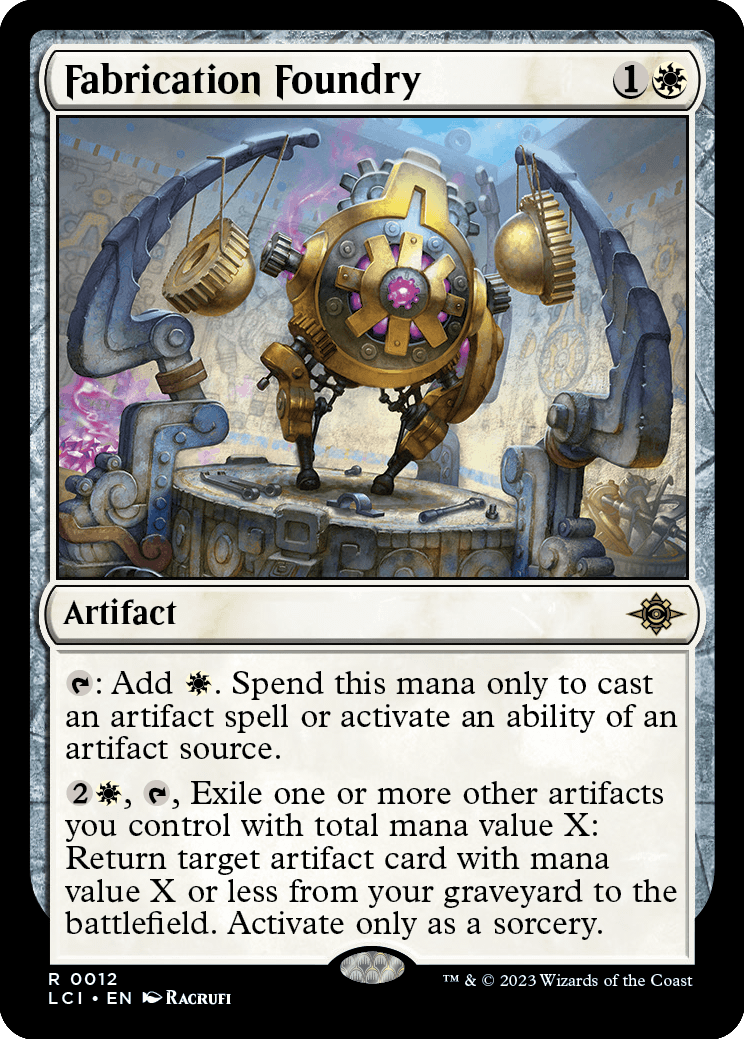
Cosmium Eaters
Cosmium eaters are not an order but members of a secretive cult of semi-vampiric Aclazotz-worshippers among the Oltec in the Core. Their true numbers are unknown but certainly in the hundreds—as an order of loosely affiliated cults to a dark and forbidden god, they do not make their associations public. Anyone can become a cosmium eater through corruption, greed, hate, or other dark motivation that pushes them to seek out Aclazotz's gifts. Cosmium eaters serve Aclazotz to an end: release from the great fear of death. This conditional loyalty is not loathsome to Aclazotz, as he, too, uses his faithful as a means to an end of his own: release from his imprisonment by Ojer Axonil.
Important Locations
Oteclan
Oteclan is the capital city of the Oltec, a sprawling communal archology of canals, temples, large dormitories, markets, and various industrial sites. Built on the shores of Lake Wachibal, Oteclan is composed of a large central city and many satellites, all linked by great, high causeways and public cable cars. The Oltec prize harmony, so Oteclan is an open city: it is always busy with trade, foot traffic, migrants, pilgrimages, adventurers, and people going about their daily lives. Oteclan is the blueprint for all other Oltec cities: built in a circular arrangement as a stylized representation of Chimil and, in later years, the cosmium reefs that trail behind her.
The Cosmium Reefs
The cosmium reefs are the long tail of cosmium gems, rare metals, and the dust of ruined colonizer shards orbiting around and trailing behind Chimil, the riven star. The cosmium reefs are dangerous, but a key part of Oltec life and culture: It is here that Oltec youth must go to gather the cosmium necessary for their first lines. Though most youth only fly up to the edge of the reefs, some do head farther in—they return with large gems and rumors of something dark and evil hiding within the dark structures of the deep reefs.
Colony's End
Colony's End is the name for the odd, haunted alpine landscape that surrounds a fallen shard of Chimil's shell and its debris trail. Though not the only place where Chimil's shell fell during the Night War, Colony's End is certainly the largest site: half of the shard protrudes from the ground at the center of the zone, where ancient Echoes wander and rumors of treasure lead the bold and reckless to untimely—and uncanny—ends.

The Mututik Towers
The Mututik Towers are the communication towers that stand in regular intervals throughout the Core, connecting every Oltec city to each other. Via these towers, the Oltec can communicate complex messages across vast distances, passing missives as complex and important as edicts from Oteclan to as simple as updates on the weather using focused bursts of cosmium-enhanced magic. These towers are also small population centers, often surrounded by towns that are named after the tower, rolling fields where farmers cultivate maize, legumes, and squash, and connected to each other (and larger, more distant cities) by well-kept dirt roads and paths.
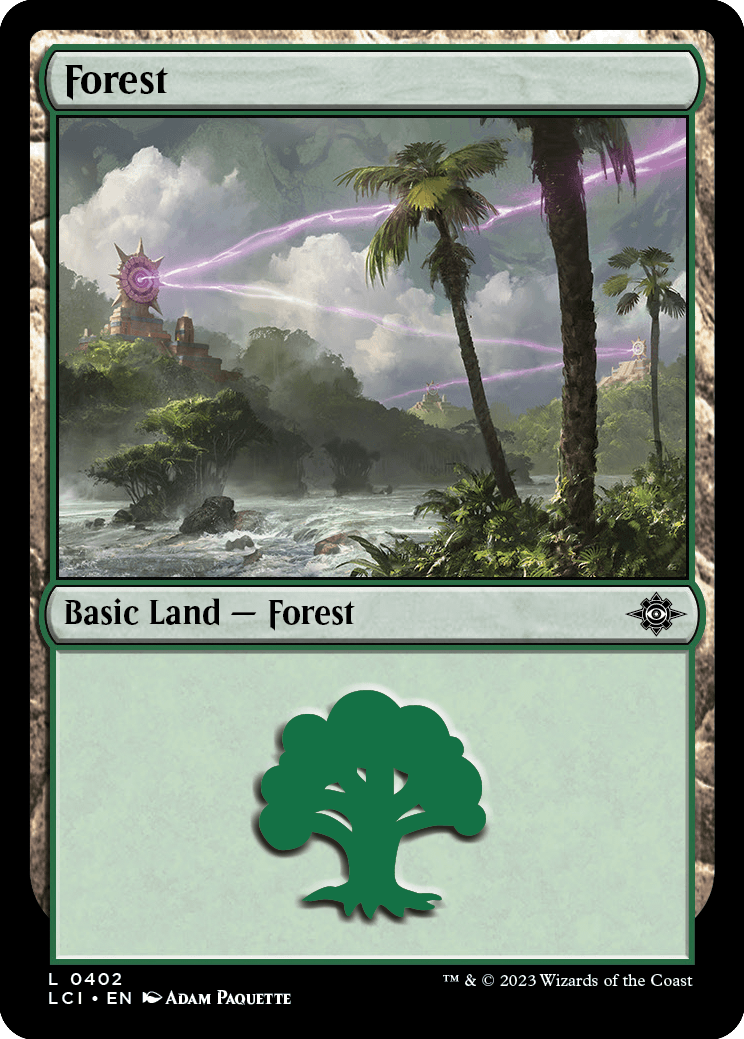
Matzalantli, the Great Door
Matzalantli, the great door is the historic main entrance to the Core, via which generations of Komon exited during the numerous exodus periods. Sealed with a giant golden plug, Matzalantli plugs a naturally formed (and later widened) cenote that connects the caverns to the Core. On the Core side, Matzalantli is located high in the mountains overlooking Oteclan. On the Cavern side, it lies at the heart of a temple structure, built by a forgotten descendant civilization well after the Oltec first sealed the door shut against the mycoid.


Echoes
Echoes are ghosts, spirits, and shades found throughout the caverns and the Core of Ixalan. Echoes can be human or nonhuman, sentient or lost, autonomous or trapped in ghostly routine—it all depends on how they were created and how they are remembered. They are bound to and manifest from an object—a bone, a sword, a robe, and so on—and are the spirit of a single person, though other, more terrifying Echoes exist: those of murderers or beasts, cruel people or victims of great loss, and others who have experienced or committed worldly terror without reconciliation or healing.
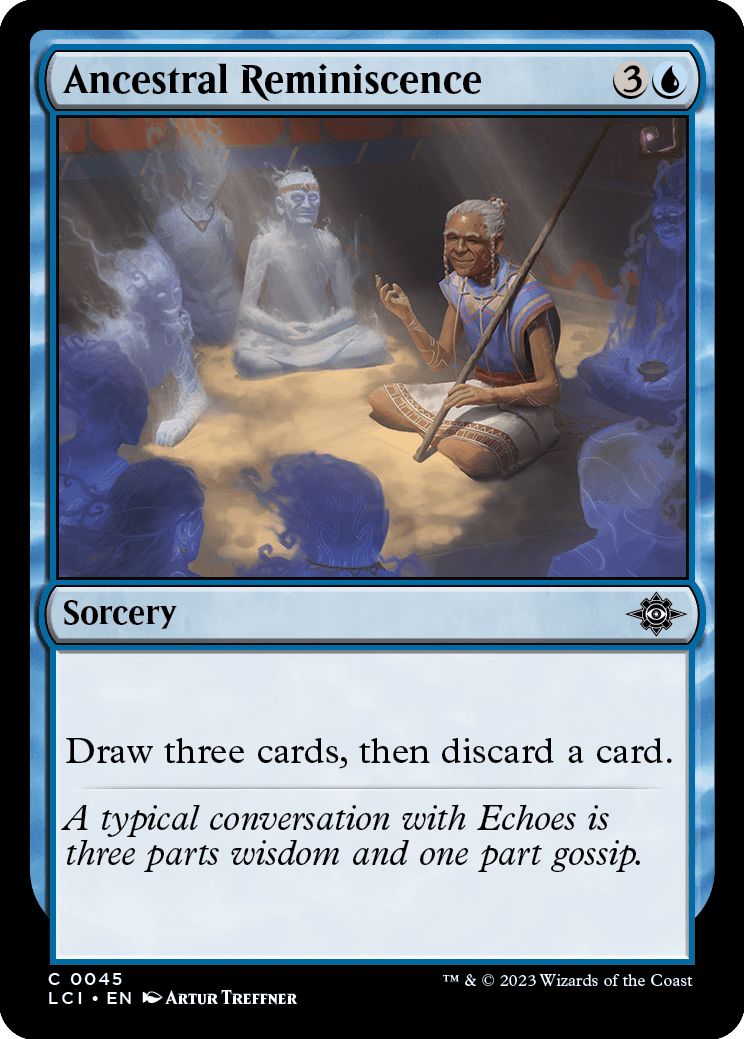
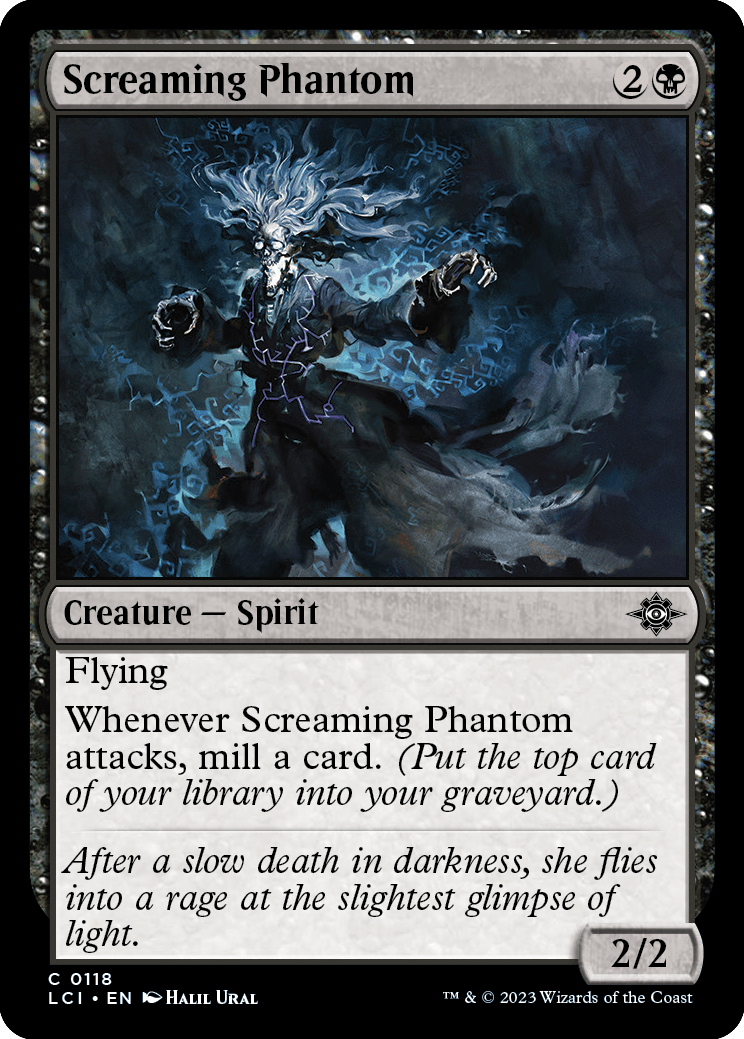
The Deep Gods
The Deep Gods are the present, living deities of the Oltec. Four of them are closely aligned with the Oltec, while the fifth, Aclazotz, is the progenitor of the vampires and regarded as an evil deity. Except for Aclazotz, all the Deep Gods have grand temples throughout the Core, with the grandest of them located in Oteclan, the Oltec capital city.
The Deep Gods of the Core are present throughout Komon Winaq history. Though currently distant, they have manifested before the Oltec in living memory. Faith in the gods is strong, and they are a part of daily life through ritual days, the presence of shrines and temples, stories, and the mundane utterances of a people going about their business. The Deep Gods are sacred figures but not above address or human emotions—indeed, it is their evident humanity that connects them to the people, for their physical forms and powers are often far from the human norm.
The Oltec recognize the Sun Empire's Threefold Sun but do not praise it or its aspects as their chief deity; indeed, the Threefold Sun is but one expression of the Oltec primary god, Chimil, who is herself but one of a pantheon of gods. This pantheon is composed of many dozens of gods, though these deities generally are understood to be the momentary divine children of one of five progenitors or prime aspects:
Ojer Taq, the God of Civilization
Ojer Taq is recognized as the first of the gods, a triumvirate deity who is the patron of the Komon. Ojer Taq's temple is the largest in Oteclan, their cult the most populous, and their legend the grandest and eldest in Oltec myth. Ojer Taq is understood to be the singular, divine congress of all who have come before, all who are, and those who will be; they are a deity of ancestors, family, and posterity—civilization, humanity, and all who are Komon Winaq, the Fifth People. Ojer Taq is the patron of stewards, administrators, ancestors, Echoes, cities, archives, and planes and is closely associated with cosmium and Chimil. As well, she is closely associated with cities, roads, infrastructure, and other markers of the designed world.
Ojer Taq manifests as a tall, androgynous humanoid figure, with three faces layered atop each other. They wear a long quipu over white robes, which they braid and record the simultaneous moments of history, present, and possibility. Priests, stewards, and faithful of Ojer Taq also favor white robes, quipu, and headdresses or tattoos that evoke Ojer Taq's triumvirate countenance.
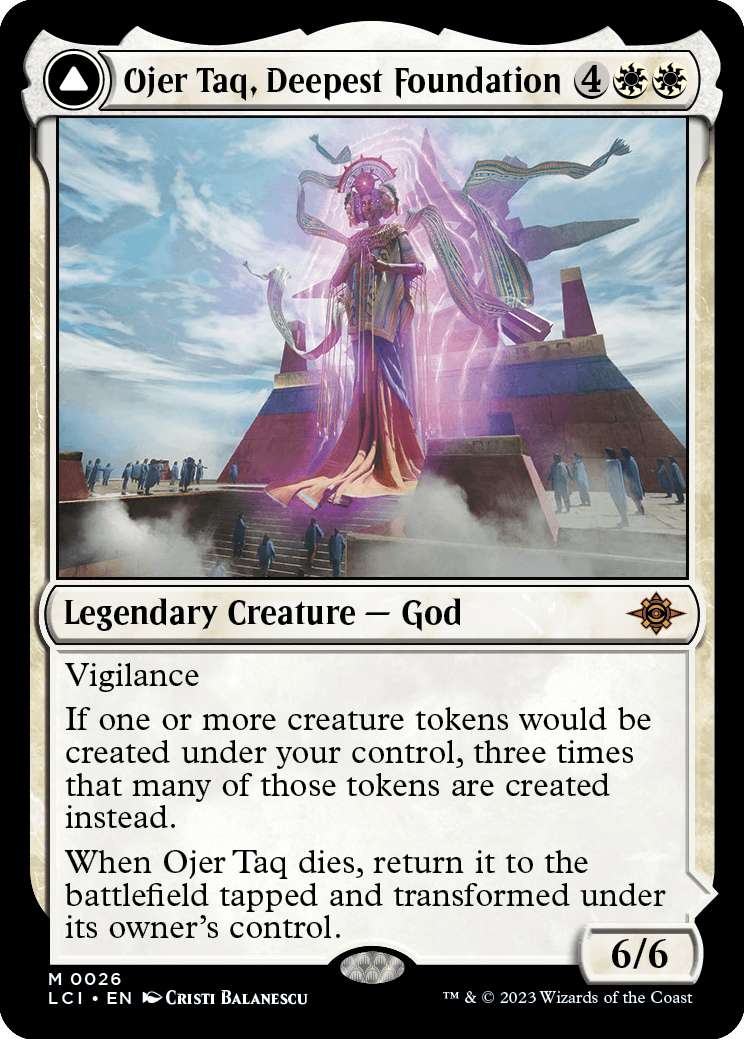
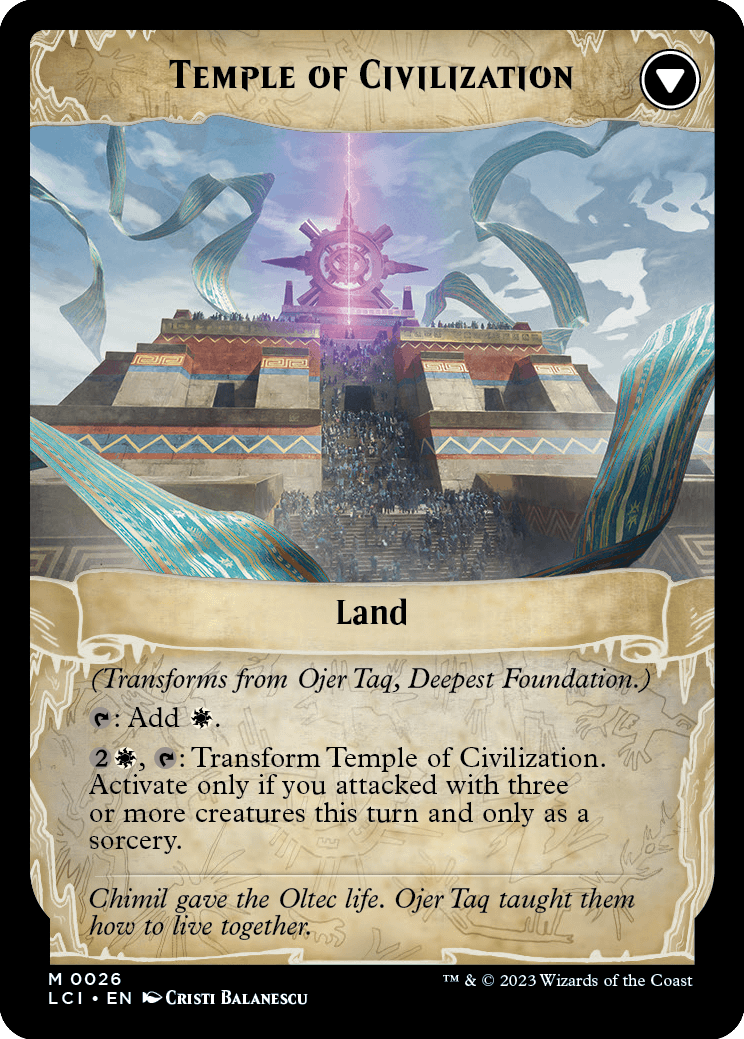
Ojer Pakpatiq, the God of Cyclical Time
Ojer Pakpatiq is the lover of Ojer Taq and second god of the Oltec. In contrast to their lover, Ojer Pakpatiq is not humanoid but takes the form of a winged serpent that appears to loop and coil without end. The Oltec revere Ojer Pakpatiq for his loyalty to Ojer Taq and his candor; despite his outwardly terrifying appearance and the often confounding nature of his domain, Ojer Pakpatiq is renowned for his frank candor. His adherents and celebrants seek to emulate this in their veneration of him: though their rituals might be esoteric, their study should be concise and undertaken for the betterment of all Komon Winaq.
Ojer Pakpatiq is associated with learned scholars, builders, scientists, Echoes, spellcasters, fisherfolk, sailors, time, and waters of all types. Most schools have altars, murals, or mosaics dedicated to or depicting Ojer Pakpatiq; indeed, many of his temples double as schools for the advanced study of the sciences.
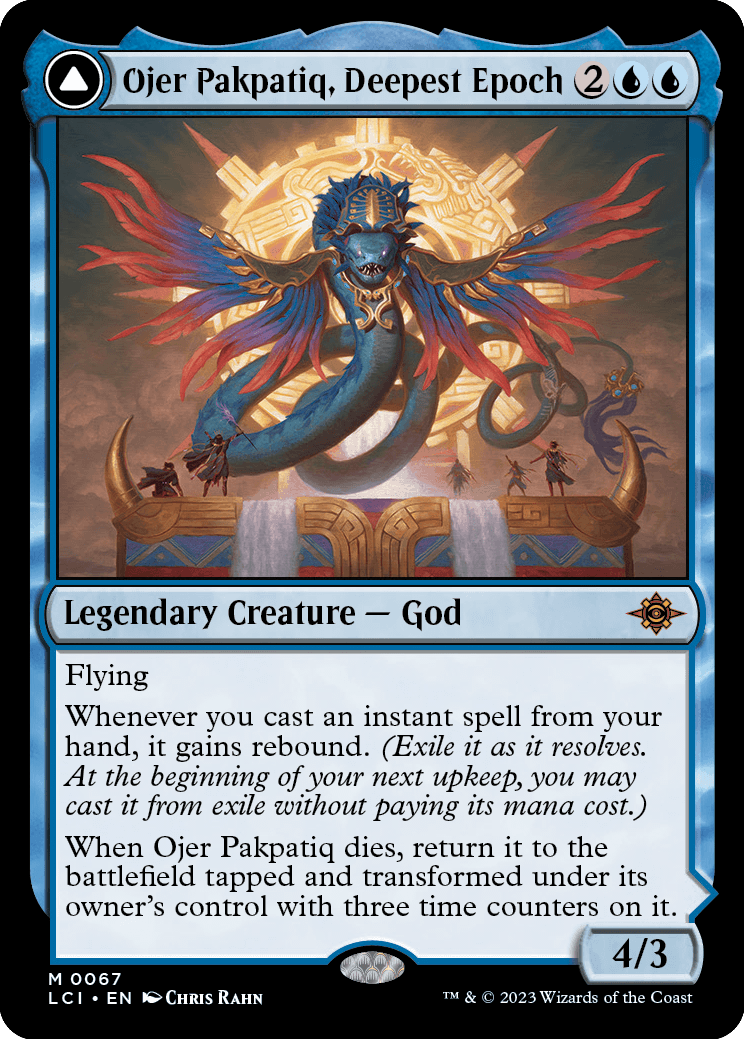
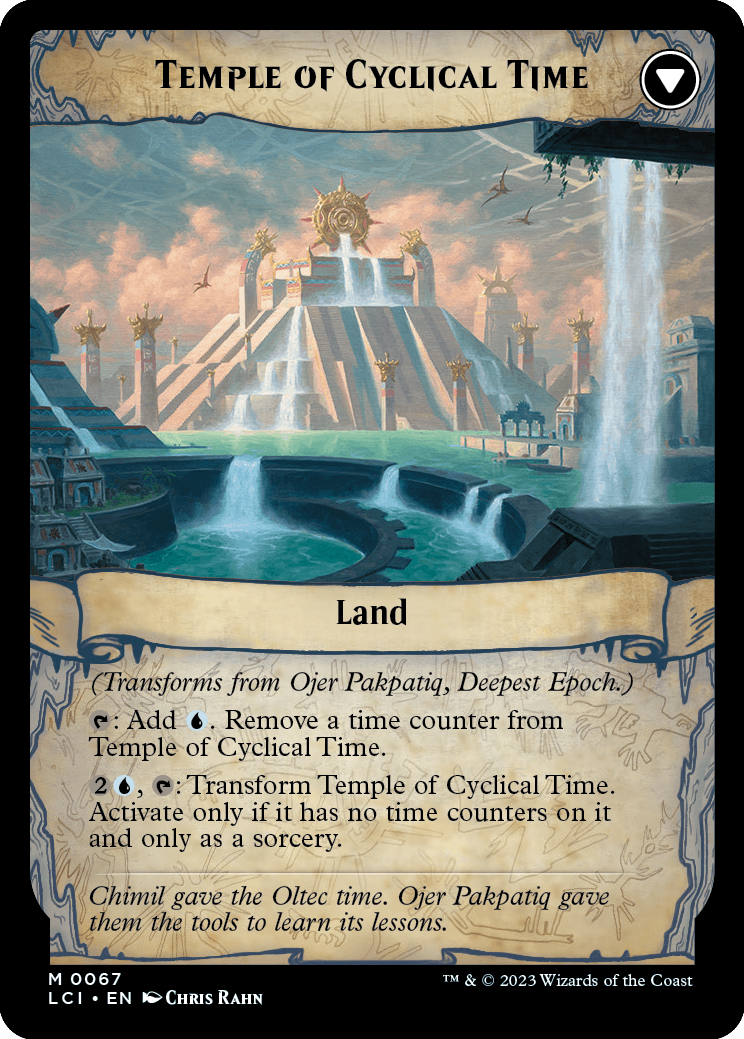
Aclazotz, the Betrayer
Aclazotz is understood among the Oltec to be the last remaining child of the Fourth People, who attained his godhood through slaughtering all others but himself and then feasting on their blood to sustain himself. He is understood to take the form of a giant, decaying, burning bat draped in the finery of a slain god of the Komon Winaq, whom he usurped. Aclazotz is trapped inside the Core, but his message escaped during the First Exodus period. Few worship him in the Core, but his temples lurk in hidden places across the surface, built by the faithful hoping to draw him out and receive his dark gift of everlasting life. Aclazotz's goal is to snuff out Chimil, the riven star once and for all and gain primacy over the gods. With this power, he would end the Fifth Age and begin a sixth and final age, ending the eternal cycle of death and rebirth. For his great crimes, Aclazotz is associated with betrayal, night (the opposite of Chimil's life-giving light), and death.
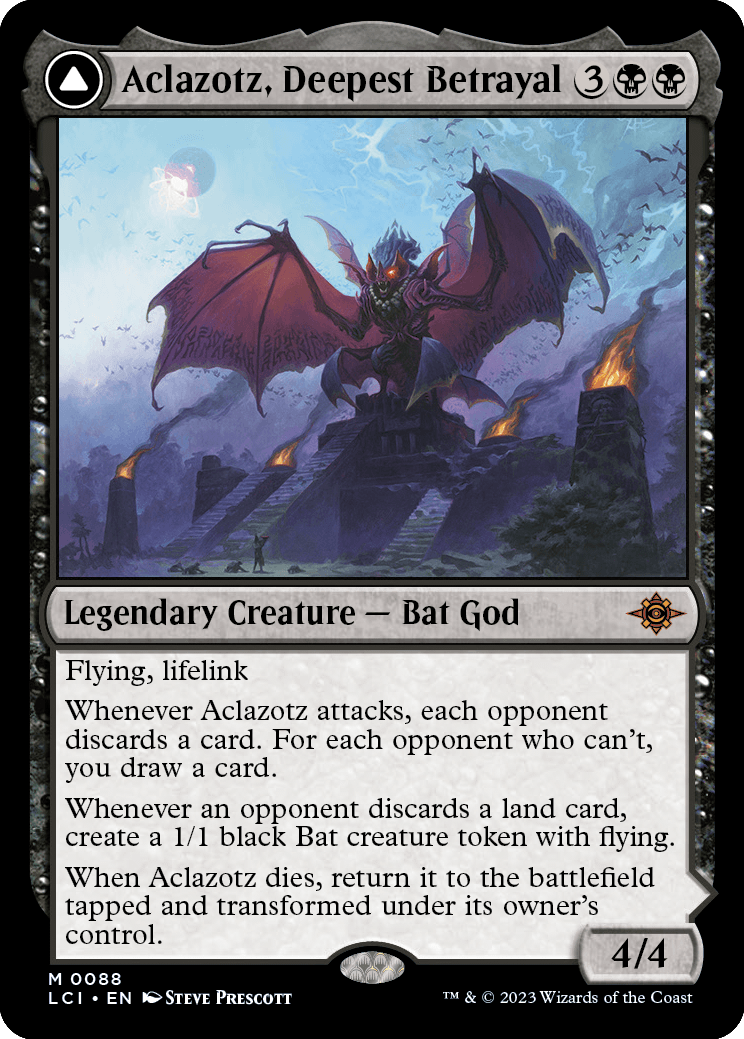
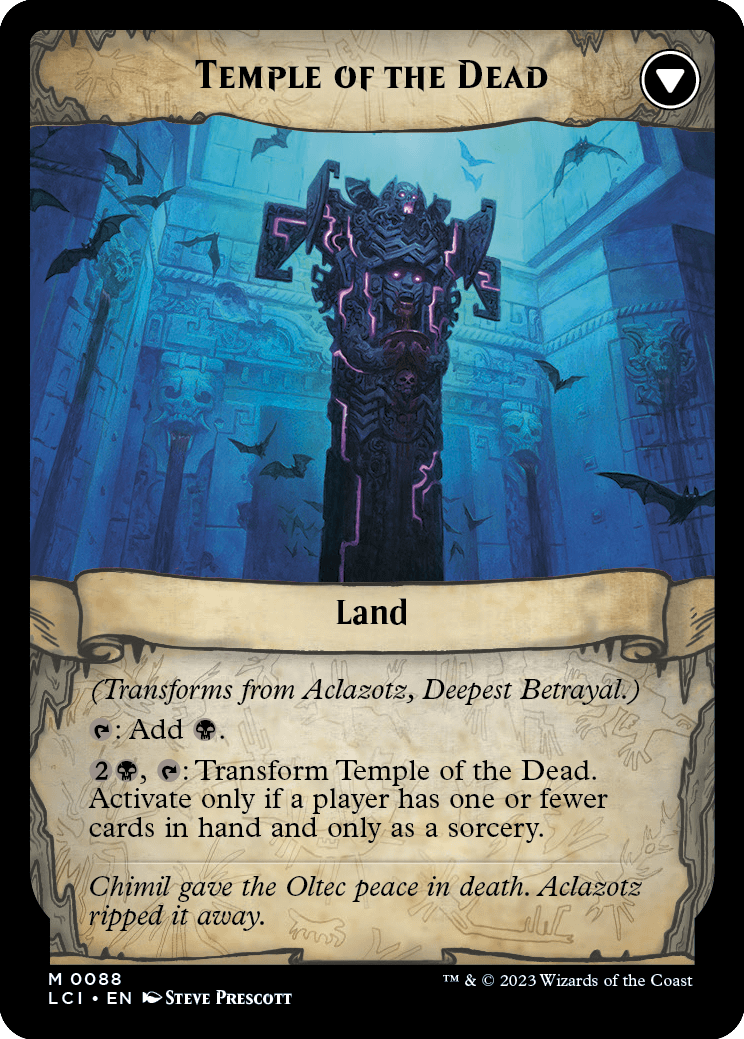
Ojer Axonil, God of Might
Ojer Axonil is the younger, fiery brother of Ojer Taq. Ojer Axonil is often in conflict with Ojer Taq, but never enough to be put at arm's length. Despite the pain that he has inflicted on the Oltec and all Komon Winaq, he has also been the mightiest to stand in defense of the Oltec when the colonizers came and during the Whispering War, when Aclazotz first attempted to kill Ojer Taq. During that great melee he defeated Aclazotz, tearing out one of his eyes and imprisoning him away from the Core.
Ojer Axonil is the patron god of warriors, lamplighters, storms, fire, the summer, lightning, dinosaurs, athletes, passion, volcanoes, and mountains. He takes a fearsome appearance, marrying the muscled body of a great warrior with the titanic form of mighty dinosaurs; in place of a head, Ojer Axonil has a naked skull ringed with gold. His right arm is the head and neck of a dinosaur tyrant, and he carries a flaming macuahuitl to use in battle. Ojer Axonil is the primary deity of the Thousand Moons.
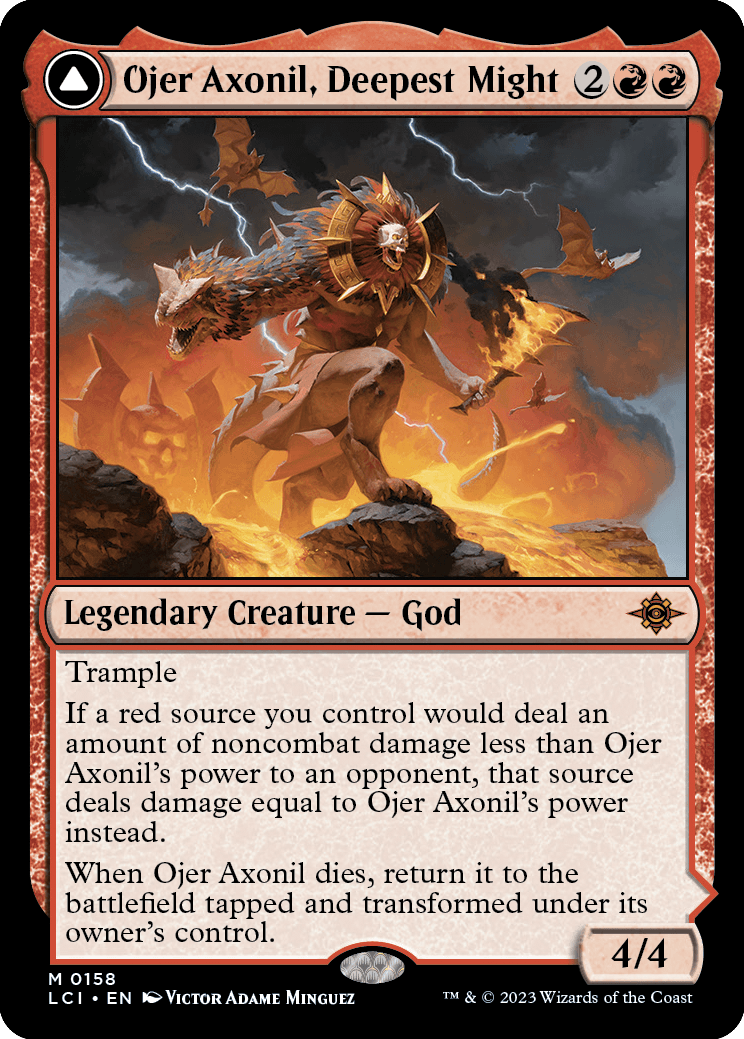
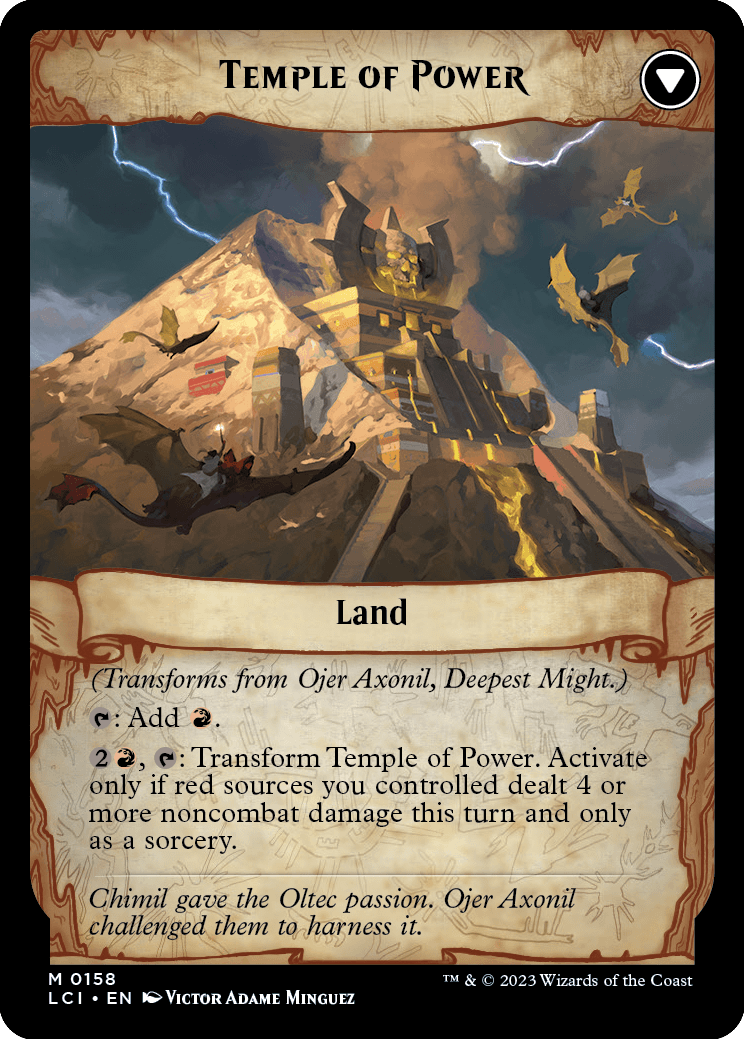
Ojer Kaslem, the God of Life
Ojer Kaslem is the Deep God of life, a chimeric figure in body and age, whose form is ebullient, chaotic, beautiful, and terrifying as the force for which she is an avatar. Ojer Kaslem's cult is the smallest of the Deep Gods and the least centralized, her temples spread out among the deep glades and jungle valleys of the Core. The Oltec hold deep respect for Ojer Kaslem, even if she is not one of the primary deities of their culture; Kaslem is often known as the quiet god, ever-present, often taken for granted until felt only by her absence.
Ojer Kaslem is associated with gardeners, farmers, ranchers, and any who work in the wild. She is closely associated with dinosaurs and butterflies, and often invoked by Oltec upon seeing them in the wild. Her adherents also venerate the monarch butterfly and pattern their vestments and armor after their wings.
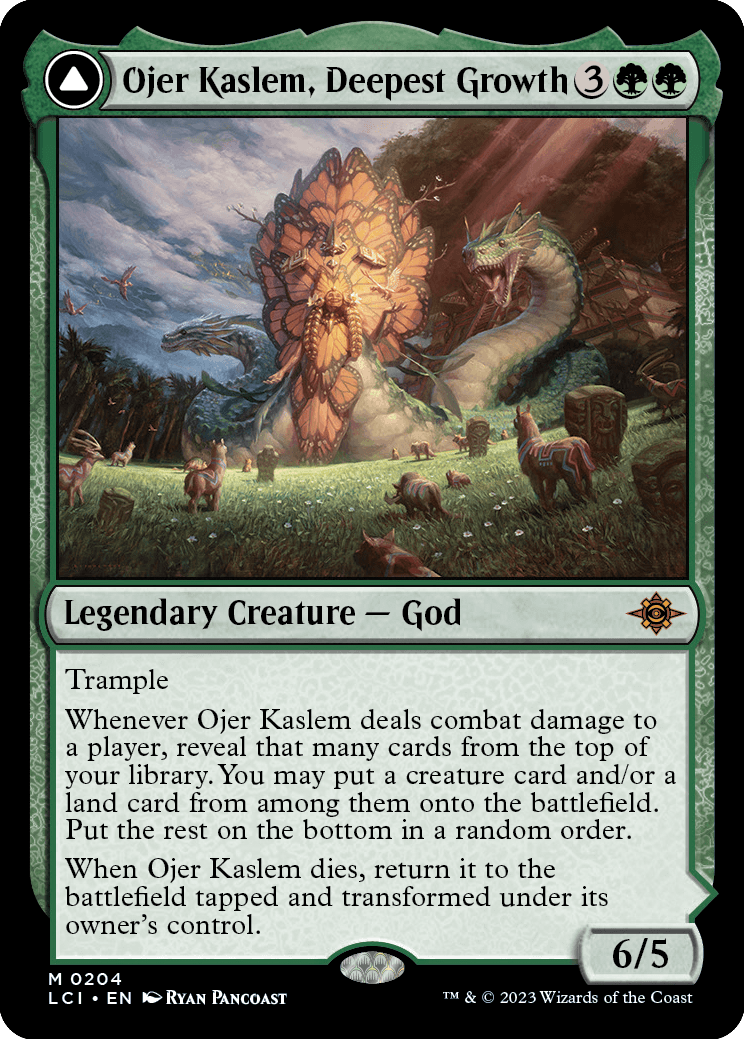
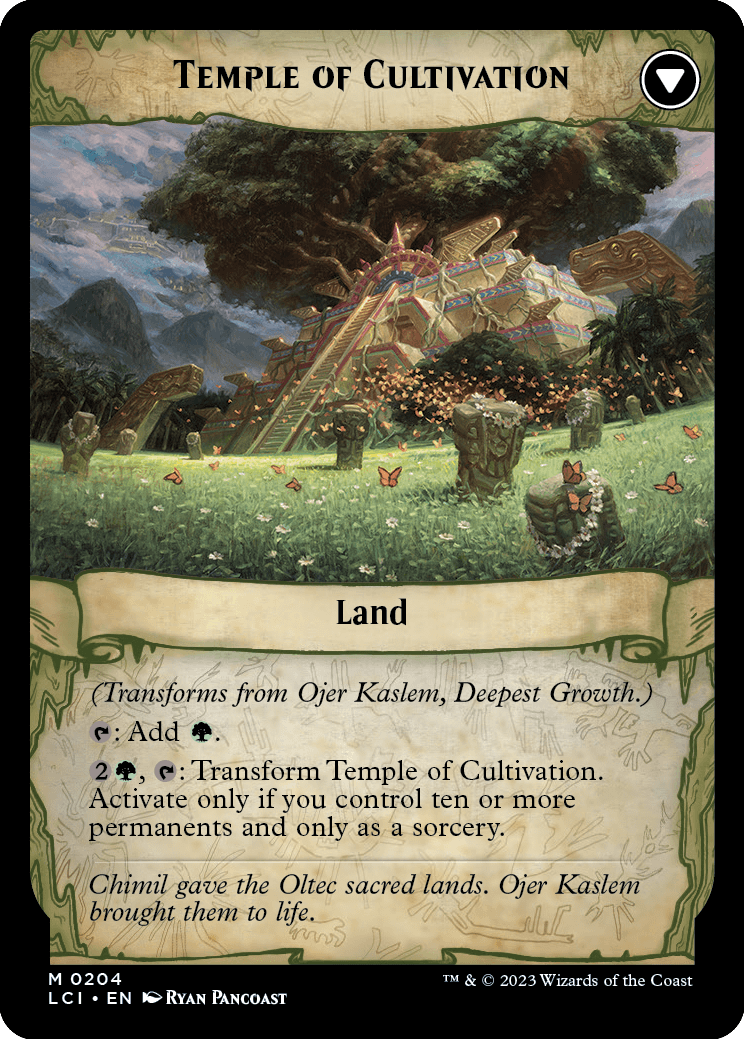
Chimil, the Riven Star
Chimil is the name for the star at the center of the Core, widely understood to be the mother goddess of the Deep Gods and guarantor of life in and on Ixalan. Chimil's influence can even be felt on the surface, where the Sun Empire worship her as the Threefold Sun. Chimil has gone through much in the history of the Core, from active participation in the creation of the Oltec to the present-day age of exploration. Though currently dormant, Chimil is nonetheless respected, honored, and revered by the Oltec, even if few of them direct their prayers to her.
History of the Core
Stories from the Beginning of Time
Before time was time, the first humans on the plane of Ixalan awoke inside paradise. The veil of nothingness slipped away. Reality dawned. Humans stood to their full height under Chimil, though they did not yet call her Chimil, and understood her to be their creator. They understood through her that the world was new, humanity was new, and yet they would be called the Komon Winaq, or the Fifth People
Few written records have been recovered from this era, but there are some. These tablets, codices, and records were found in the deepest lakes, valleys, and hollows of the Core. Most now rest on display in the grand halls of Oteclan, the capital arcology of the Oltec. The vast bulk of knowledge of this time, however, has been recorded and relayed via oral tradition. Of these stories from the beginning of time, three truths are imparted from the past to the present:
First, the world the Koman Winaq were born into existence before them and would exist after them. As they were the Fifth People, there had been a fourth, and there would be a sixth, and so on.
Second, the Komon Winaq lived in paradise, but they were not to indulge. They were stewards of an idyll, a place protected from demons, devils, and horrors, placed there by their creator to shepherd an even kinder, gentler future.
Third, Chimil would watch over them but never intervene. She was the creator, not the gardener. Her children, the Deep Gods, would take up that mantle if the Komon Winaq could prepare the world for them.
These truths were charges the Komon Winaq could happily perform, and so they set about creating a civilization that was in harmony with this world.
A Shell around a Star
The world at the dawn of the Fifth People was as it is now: a paradise of lush forests, mountains, valleys, freshwater oceans, rivers, and rolling plains encompassing a warm, gentle sun. There was no horizon beyond which the land did not rise in a slow arc, disappearing into the hazy distance above and reappearing on the opposite horizon. The Komon Winaq spread out among the vast tracts and regions of this idyll, setting to the fields and jungles to draw from them the necessaries to support their lives. In the plains and along riverbanks, in the clearings and the alpine ranges, the Komon Winaq built homes, villages, temples, and the beginnings of their industry.
Their needs met by the bounty of the Core, the Komon Winaq could find time for leisure and study. They prized knowledge, so they set about mapping and charting the shape of this world. They developed a written language to record what they saw, numbers to count and measure what they encountered, and came to understand the shape of paradise. This project produced the first figure of Komon legend: Tan Jolom, the worldwalker. Tan Jolom was the first of the Komon Winaq to complete a circumnavigation of the Core and confirm what the wise mathematicians and priests had assumed: the world was a sphere built around a star.
More Worlds than This
Tan Jolom was a living legend, the worldwalker, a hero unparalleled to the Komon Winaq, who lived for decades and shepherded many far wanderers into understanding. However, once he had seen the world, Tan Jolom hungered to see more. His desire to map worlds beyond understanding drove him to seek lands beyond reality; he was not satisfied with paradise. He listened, finally, to the quiet voice.
The worldwalker had traveled with companions always on his journeys. Chimil was always with him, and others besides. One told him of other lands that he could see: the land of the Fourth People, who had come before and gone away. Curious, Tan Jolom asked this voice how he could see these lands. The voice replied: die.
Death, in this era of the Fifth People, was not a terror to the living. The Core was paradise: there was not an afterlife hidden from the walking world. Echoes, the spirits of those passed beyond, walked among the living: the veil between life and afterlife was thin as gossamer. For Tan Jolom, the prospect of exploring the afterlife was simply another chance at adventure: So, he became an Echo and departed for the afterlife, seeking the Fourth World beyond its borders. Guided by the whispering voice, he passed to the realm of spirits, gods, demons, and devils, where he searched for the Deep Gods—Chimil's children—hoping to tell them that their people had mapped the Core and awaited their return.
The Deepest Betrayal
Dark creatures from the afterlife slipped into the world through the door left open by Tan Jolom, none more terrible than the final child of the Fourth People: Aclazotz, the whisperer who had promised to show the worldwalker to the land of the Fourth People.
Aclazotz is the last surviving member of the Fourth People, who came before the Komon Winaq and whose passing made room for them to be born. At the end of the Fourth Age, Aclazotz was not yet divine but merely mortal, a being with a different name and form. His fear of death drove him to become godlike: through methods unknown, he was able to persist beyond the ending of all things and into divine nothingness that was the space between ages.
In this space, the being that would become Aclazotz witnessed the beginning of the Fifth Age and the birth of the first gods; he realized what he must become to persist beyond death. Before the last god could emerge, the piteous creature intervened, eating them and taking their place. He emerged into the Core as Aclazotz, usurper of death, whose divinity was drunk from a divine corpse and domain was that of the gossamer veil that divided life from the afterlife.
The Whispering War
Aclazotz knew the power that fear could grant him, so he hardened that gossamer veil between life and death to impregnable stone. Life and death were split into rigid binary, and the living were separated from their ancestors: The dead did not echo, and the living now knew themselves to be alive. Death became something to grieve and fear, and Aclazotz fed off that fear. In secret, he hunted the most terrified, bereaved, and desperate, and upon trapping them, he whispered his dark promise: give yourselves to me, and you will live forever.
Grief, fear, death, and whispers of an escape from that final end spread through the Core. Aclazotz's gift of everlasting life was available to any who could find him, and many tried. Pilgrims and evangelists raged through cities, forming cults intended to lure Aclazotz out into the light—if death and the embrace of a dark god awaited them, then let them try to win this dark god's favor through exulting in his tenets and be amply rewarded beyond the veil. These desperate rituals horrified much of the Komon Winaq but did not stop when leaders confronted these dark cults. Indeed, when elders and leaders first attempted to stop them, they were met with withering violence; the next officials who went to demand these cults cease their dark rituals brought soldiers with them. Aclazotz's cults fought back, and the fields and cities of the Komon Winaq raged with violence.
This violence is remembered by the Oltec as the Whispering War. Though it was a horror, it produced heroes and legends. As well, its raging hastened the arrival of the rest of the Deep Gods. First to show was Ojer Axonil, who was drawn to the Core by the familiar sounds of battle. Though he himself was a creature of violence, and the laminations and cruelty he witnessed did not shock him, but the architect of this war did. Aclazotz was not his kin, as Ojer Axonil expected, but a demon wearing his nephew's skin. So Ojer Axonil reached back into the firmament and warned his elder sibling, Ojer Taq, of what was happening in the Core. Then, he entered the Whispering War against Aclazotz, raising a company of one thousand champions to follow him into battle.
The Age of the Sun
Ojer Taq, after disentangling themselves from their lover Ojer Pakpatiq, emerged into the Core. Their arrival brought hope and power to the Komon Winaq, who redoubled their efforts to tear down Aclazotz's cult. Many of those thought lost to Aclazotz's influence turned from that dark god's sway, called back to the light by the beatific triple visage of Ojer Taq, who was a living reminder of the continuation of the soul beyond death.
Nevertheless, the Whispering War ended in bloodshed. Ojer Axonil and Aclazotz fought in a climactic final battle, surrounded by regiments of their most faithful, ardent warriors. Ojer Axonil and his thousand champions faced down Aclazotz and his blood-drinkers in their deepest lairs, where the god of fury and strength tore out one of Aclazotz's eyes and subdued him. As Ojer Axonil dragged Aclazotz back beyond the veil he had hardened, the last surviving members of Aclazotz's most faithful slipped away from the Core, following tunnels and passages known only to them. Aclazotz had shown them, in his brief life in the Core, of a world beyond and below the known world: Darker, more fit for those who bore his gift. A world where one could climb up, away from the gentle Core.
The Whispering War ended, and a great age of rebuilding began. The veil of life and death once more thinned, allowing the return of honored Echoes. The foundations of Oteclan, the capital city of the Komon Winaq, were set on the shores of a great lake, Wachibal. As Ojer Taq looked on, the Komon Winaq built a golden age that lasted for millennia: this was the Age of the Sun.
The Opened Gate
The Age of the Sun ended with the arrival of beings the Komon Winaq later named the Kisik, an evocative word meant to convey these new beings' fearsome appearance and Imperial ambition. The Kisik were physically robust, giant, armed agents of an Imperial power from beyond creation. The Oltec today call them the colonizers. Quint knows them as the Coin Empire. These beings called themselves Fomori.
Komon legend records the Fomori arrival as a frightening intrusion into the gentle Core, as if they were a hurricane exploding from a clear summer day or a volcanic eruption from the heart of a placid lake. Orally recounted histories speak of long, dark shards of hard night sliding out from thick cloudbanks crackling with lightning, hovering still and quiet in the air around Chimil. For the first time, the Komon Winaq experienced their warm sun eclipsed, long shadows cast by Fomori vessels occluding Chimil.
Days later, one of these dark shards opened and from it dropped a smaller, cylindrical vessel, easily as large as a temple: it landed without a sound, and from a slim crack in its body stepped a giant in armor. The giant spoke the Komon language and pleaded for the Komon to allow his people to shelter here in this paradise.
Komon leaders entered negotiations. Meanwhile, the temples grew crowded with petitioners begging the Deep Gods to come to their aide, yet they heard no answer: if Chimil was occluded, it seemed, so, too, were her children. The skies thickened as the giants dispatched more spheres across the Core, settling above and among other Komon cities. These giants may have been running from something in their past, but the Komon quickly realized that they were, in fact, conquerors, arrived with the intent to claim dominion over the Core.
The Occluded Core
The Fomori revealed themselves to indeed be conquerors. Via their cylinders, they established their de facto dominion over the Core, ruling from their shard ships which remained suspended in the sky around Chimil. More shards arrived, and in time, the Fomori completed their shell around Chimil, and total darkness fell throughout the Core. This was the first time in the history of the Komon Winaq that they had seen such darkness: it was terrifying to all but galvanizing to some. The Koman Winaq could not countenance this tyranny, this enforced distance from Chimil, the Deep Gods, and their ancestors.
Resistance to the Fomori sparked across the Core, first from Echoes, then by the living. One heroic figure stood above the rest: Olanem Teq, the Nine Hundredth Moon. One of the Thousand Moons, Olanem Teq is said to have lived in the city of Oq'tinimit, a citadel satellite of Oteclan. From there, Olanem Teq and the Komon Winaq fought a resistance campaign, raiding Fomori cylinders, capturing individual Fomori agents, and eventually making their way up to Chimil where they would strike at the heart of the Fomori occupiers.
The Night War
The Night War is the title of an epic poem that spans three centuries of history, charting the beginning of Olanem Teq's work to build a resistance through the end of the struggle that followed. The war scoured the Core but saw the Komon Winaq victorious.
In the final days of the war, when Komon warriors landed on the dark shards caging Chimil, the star was able to help them. Chimil, too, had been fighting back, lashing the inside of her cage with terrible, mighty energies. The shards were weak, attempting to heal through unknown magics but failing. The disruption presented by the resistance attacks across the Core hampered Fomori infrastructure; liberatory attacks on key shards by brave Komon warriors proved to be too much for the Fomori prison. Chimil shattered one shard, then another, and then a cascade began. A dark rain of steaming, fractured shards. Cosmium lashed out from Chimil, blasting away the Fomori while innervating the Komon—those present that day became semi-divine figures in their own right—the first angels of Ixalan. The Deep Gods followed, finally able to hear their mother's cry and their people's pleas.
The war ended with the Fomori expelled from the Core, leaving behind the shattered ruins of their shard-ships in orbit around Chimil, as well as various smaller installations and half-complete projects across the Core. Over the ages, the Komon have worked to repair much of these wounds, but even in the present, some ruins remain.
The Opening of the Core
Chimil, the riven star, was free and known to the Komon Winaq now, but changed: the mother of the gods was wounded, glowing dimmer than before, and the Fomori ruins often dimmed the light further as they occluded her face. As well, the return of the gods meant the return of Aclazotz. Once more, the dark god's cults cropped up in Komon cities and across the wounded places of the Core.
In this age, many Komon ventured out into the subterranean pockets below the Core, finding that—as they expected—gravity switched. In the caverns outside of the Core, they did not stand atop the world as they did in the Core. Instead, they discovered that they stood at the bottom of some other, larger structure. What awaited them at its top?
An age of exploration began, followed by an age of migration and settlement. Komon migrated out of the Core in droves as it became apparent that there was habitable land to settle and cultivate. Over centuries, hundreds of thousands of Komon departed; those who stayed behind began to call themselves Oltec, a heroic name adopted by the revolutionaries who fought the Fomori. Without anger or strife, but through the natural drift spurred on by time and distance, those who left the Core begin to think of themselves as Komon. Distinct from the Oltec, they begin to establish their own cities and cultures, growing more distant the farther they ventured from the Core.
The Birth of the Mycotyrant
Many centuries after the first exodus period, an outbreak struck one of the grandest cities of the Komon. Oltec scientists in the Core determined that this disease was fungal, spread by spores, and highly advanced—possibly some living relic of the Fomori, loosed outside of the Core in eons past.
This fungus was the beginning of the mycoids. Without any barriers to stop them, they rapidly began to spread through the caverns. Oltec and Komon humans worked together to try and stop the spread of the mycoids, but they could not. Whole civilizations and cultures fell to the infection, and then to the increasingly more advanced and larger forms of mycoids—some, evidently, able to use magic.
The Komon and Oltec in the caverns fled, finding safety outside of the caverns. These settlers emerged aboveground on the continent that would later be called Ixalan, the ancient ancestors of the people who would create the Sun Empire.
Quarantine
Unable to stop the mycoids as they raged through the Core, the Oltec made a grim decision: Quarantine the Core. They would seal all entrances to their home shut, cutting themselves off from the rest of the plane.
Calling upon the Deep Gods for an intervention, the Oltec sealed all major entrances to the Core with a series of large, complex, cosmium-reinforced golden doors. This moment is remembered by Echoes and Oltec histories as a solemn one, a shameful marker of failure. They could save themselves, but not their brethren.
This drastic move appeared to have worked. In the years that followed, there was no evidence of a mycoid outbreak. Safe, but alone, the Oltec turned inward.
The Quiet Age
Thus began the Quiet Age. Sealed from the rest of Ixalan and their Komon cousins, the Oltec pledged to cultivate and maintain the Core as a gardener would tend their garden. While on the surface, the Sun Empire grew dominant on Ixalan and Torrezon raged with conquest (enabled by Aclazotz's dark gift of vampirism), the Oltec of the Core slowed their history.
During the Quiet Age, there was very little conflict between groups and no war. The Oltec undertook great works of public engineering and habitat restoration, finally repairing much of the damage done by the Night War. New cities were built, and the Oltec slowly expanded into unexplored parts of the Core. The Oltec deepened their relationships with their gods, refined their magics, and grew to understand both practical and fantastic applications of cosmium.
The Oltec remained in the Quiet Age until the beginning of The Lost Caverns of Ixalan.
Read the full story for The Lost Caverns of Ixalan at MTGStory.com!

